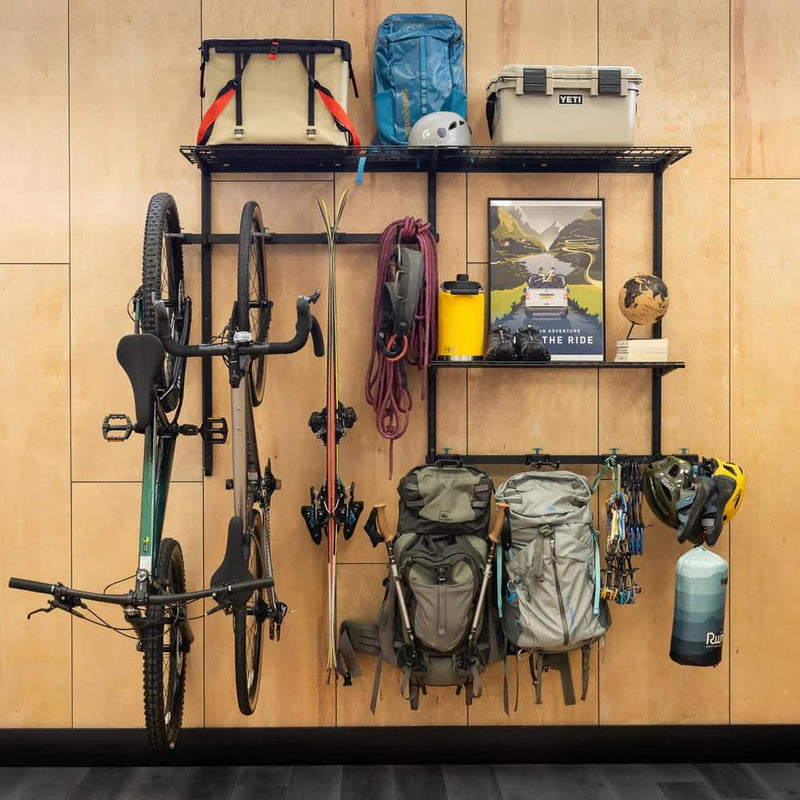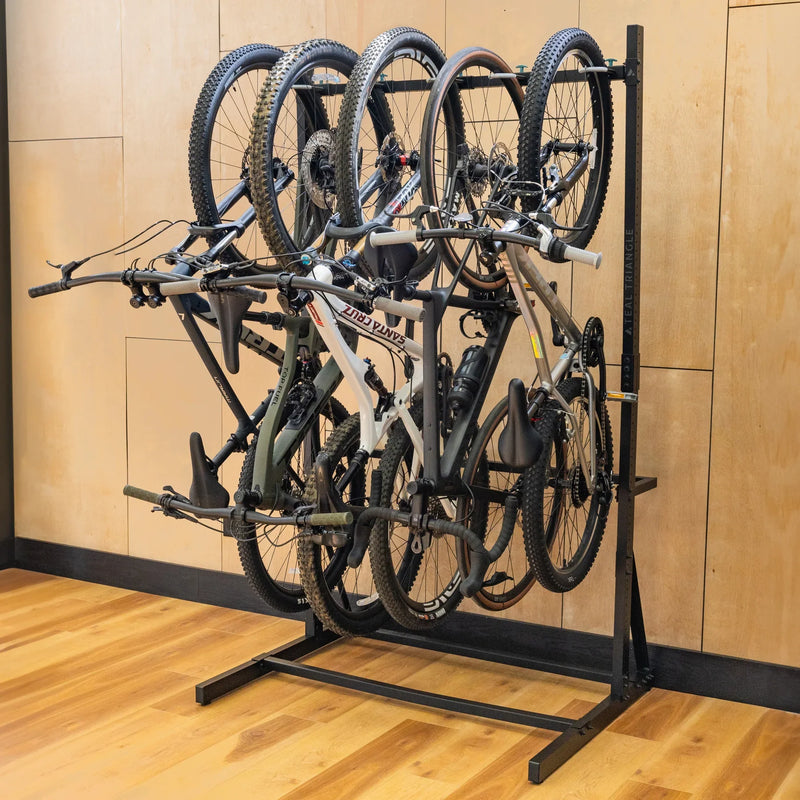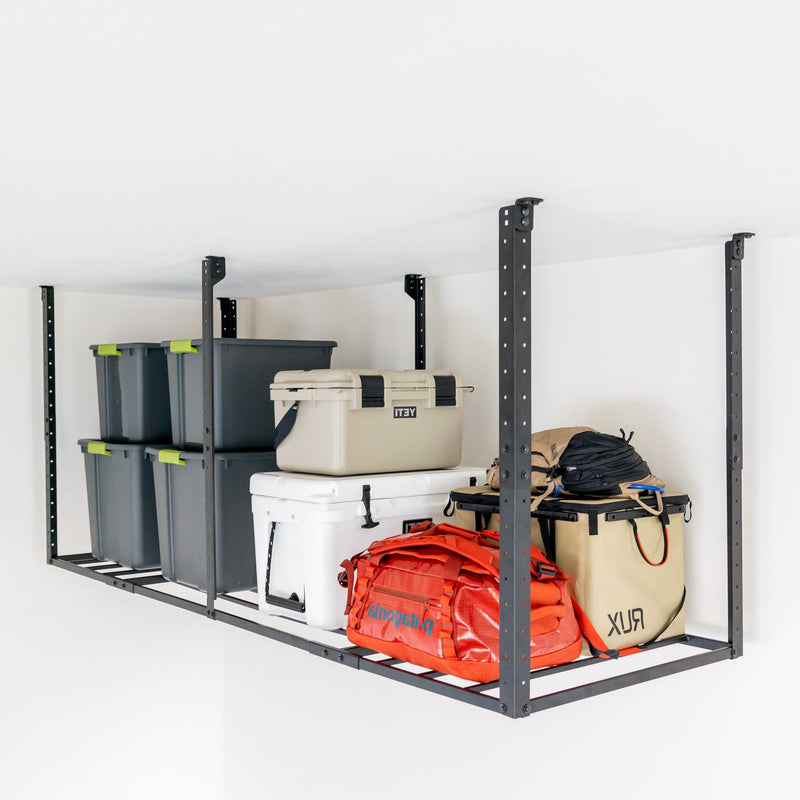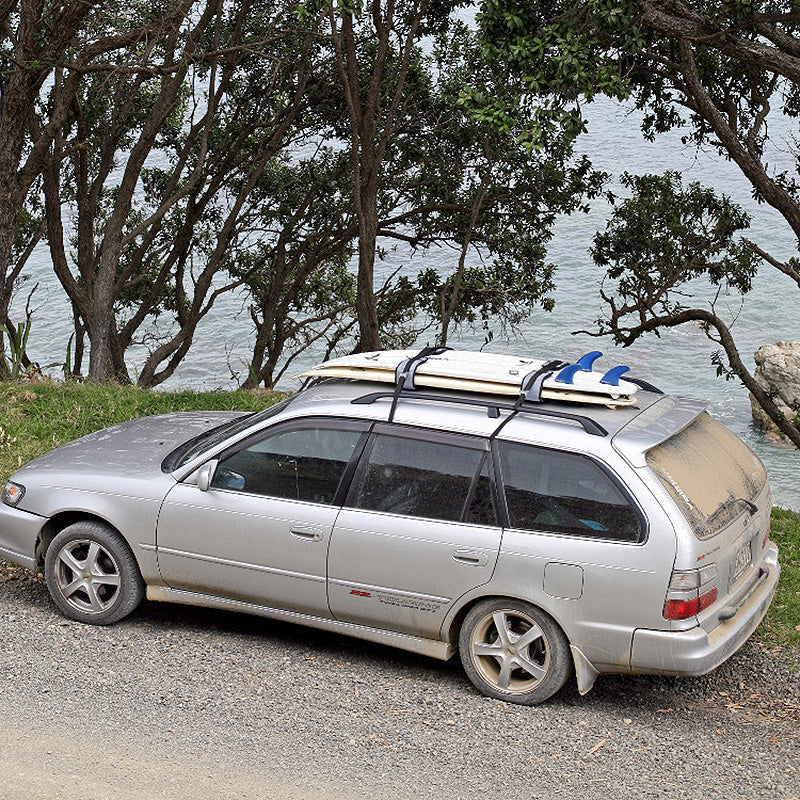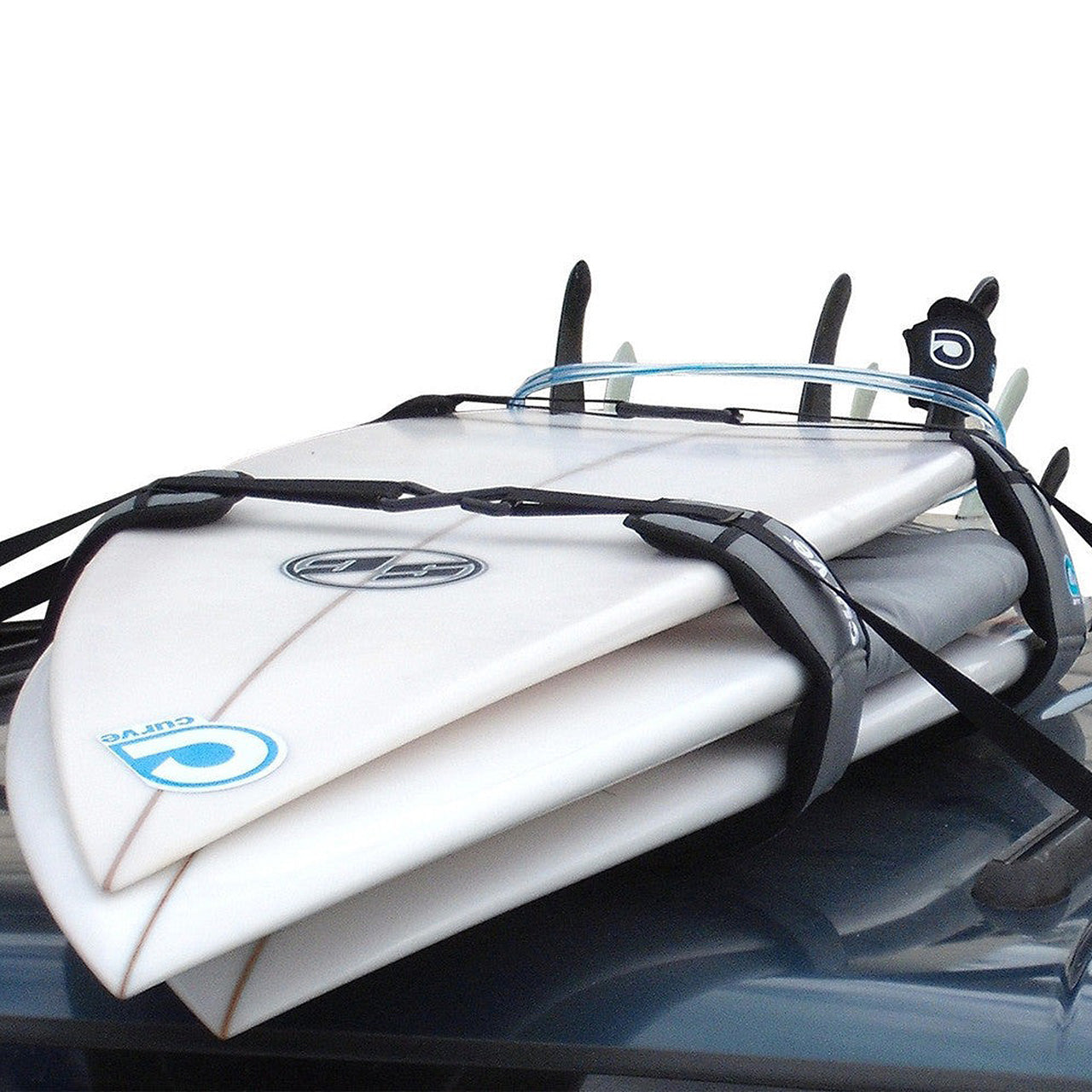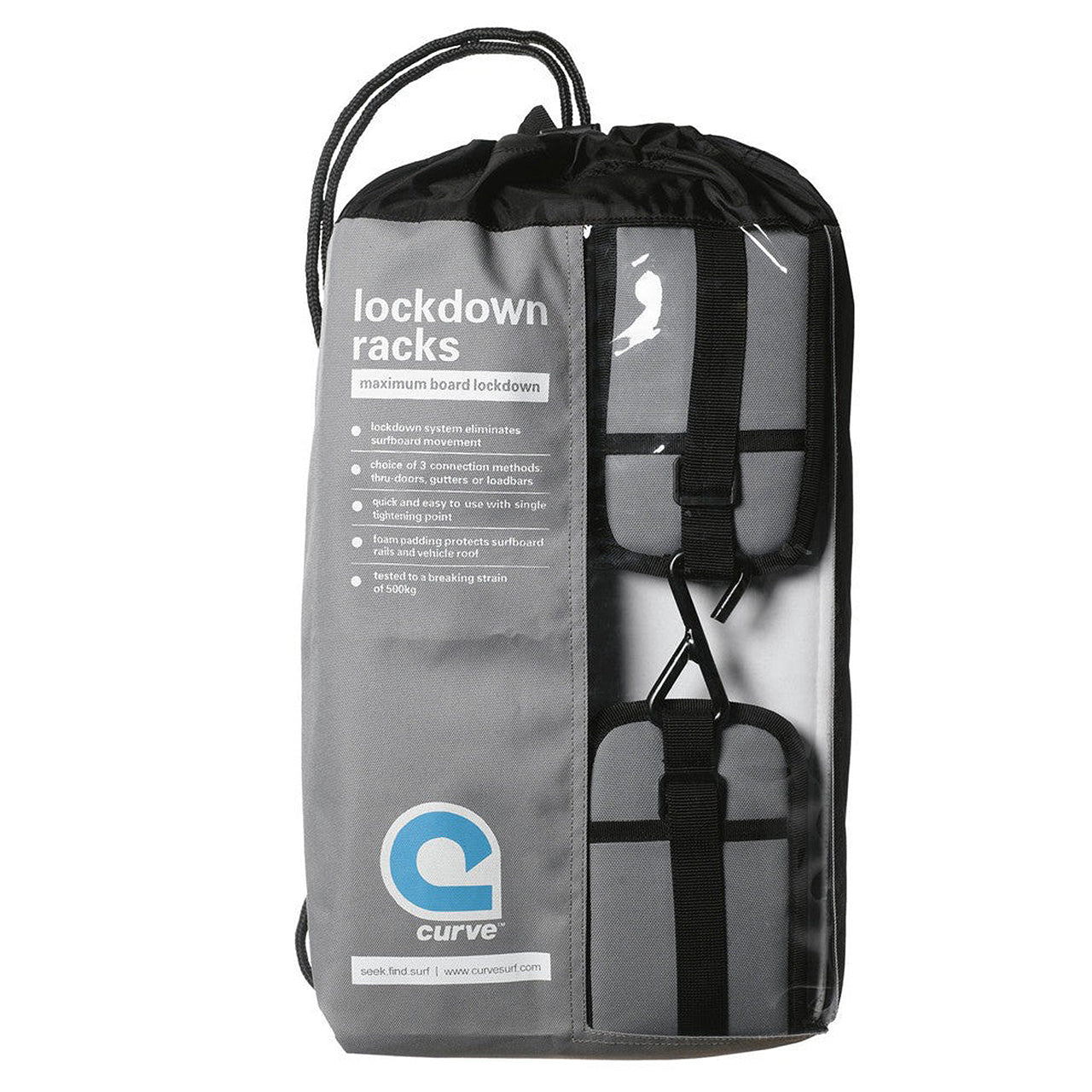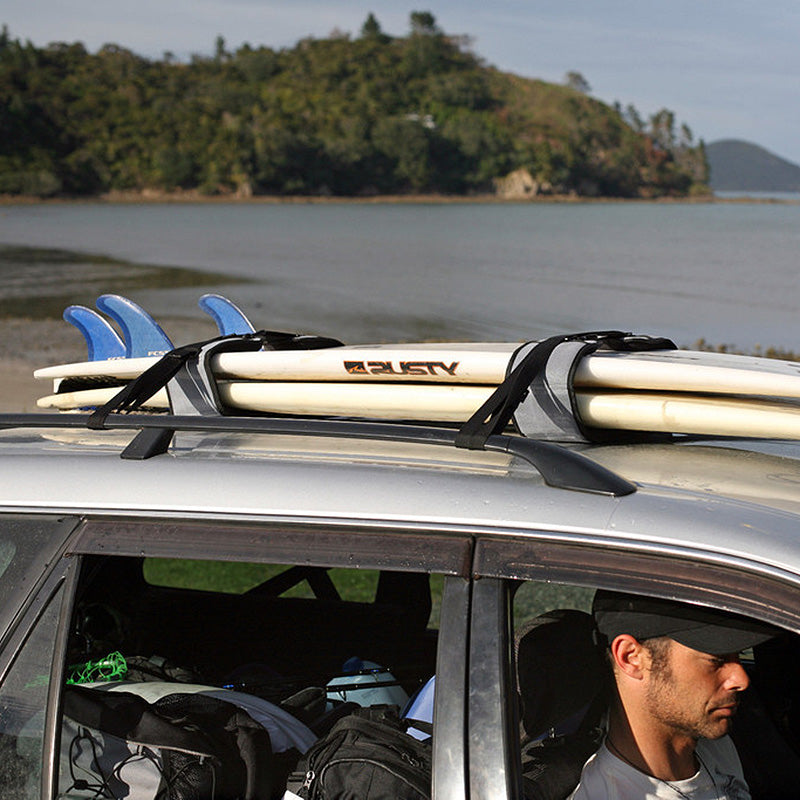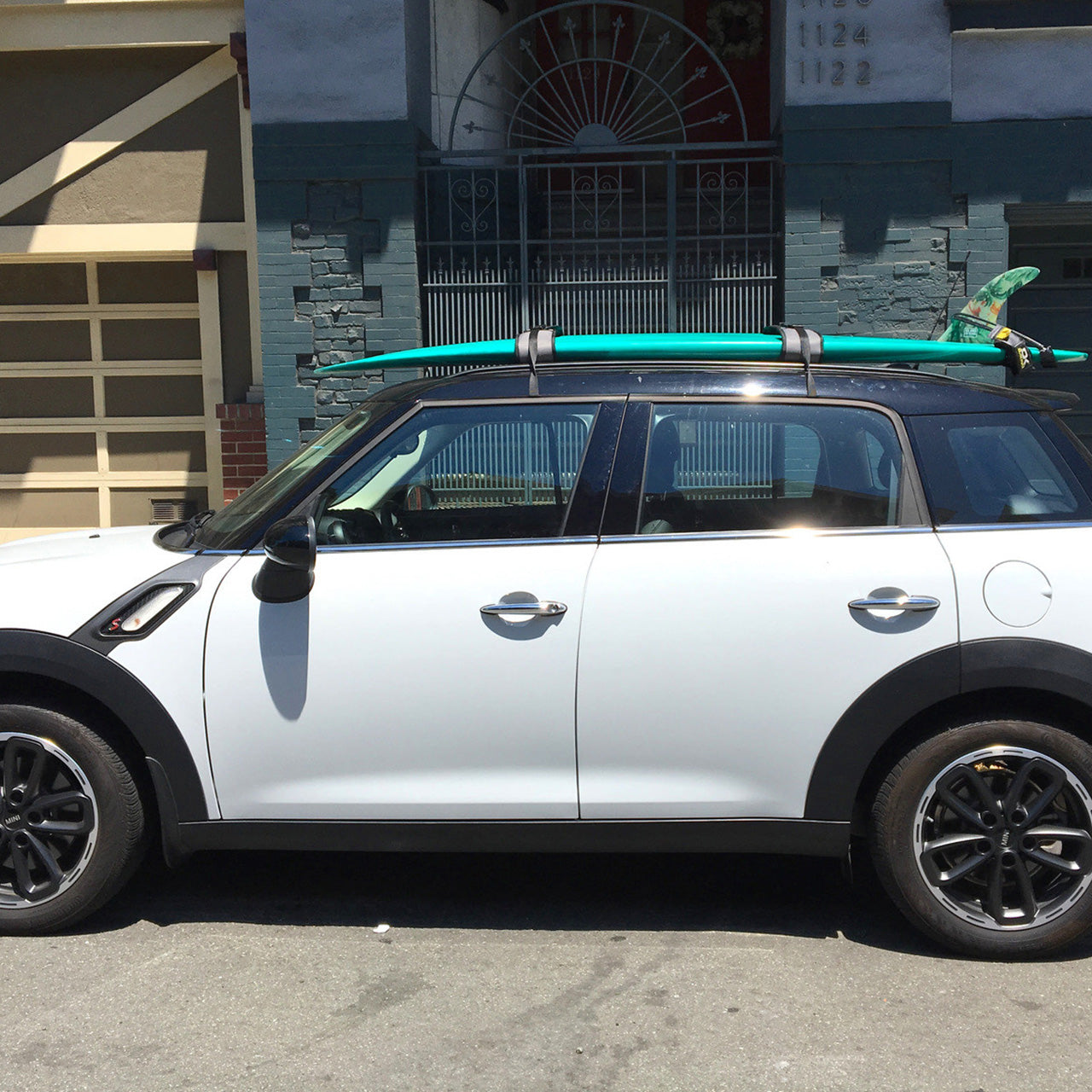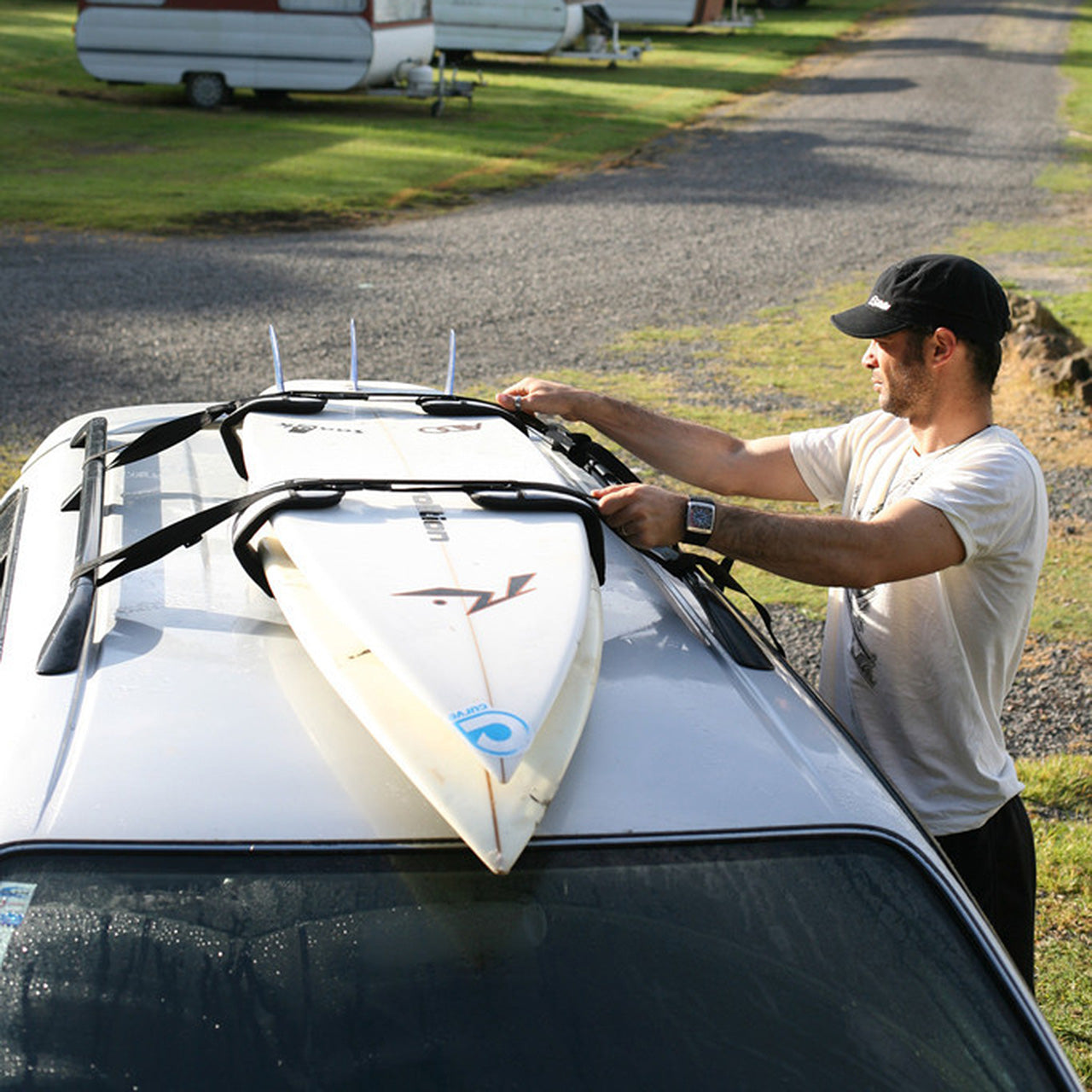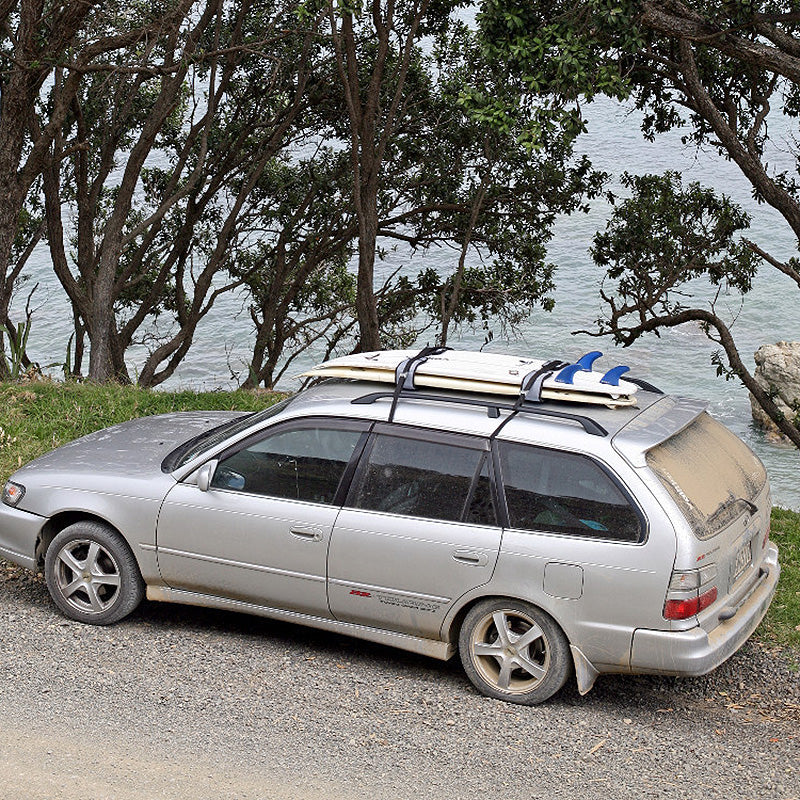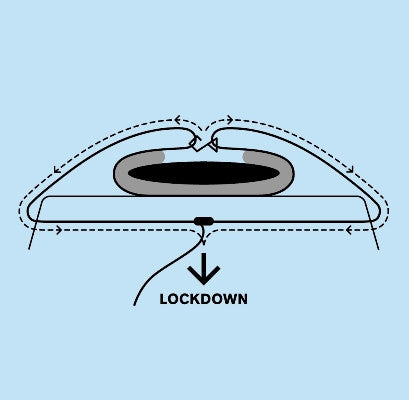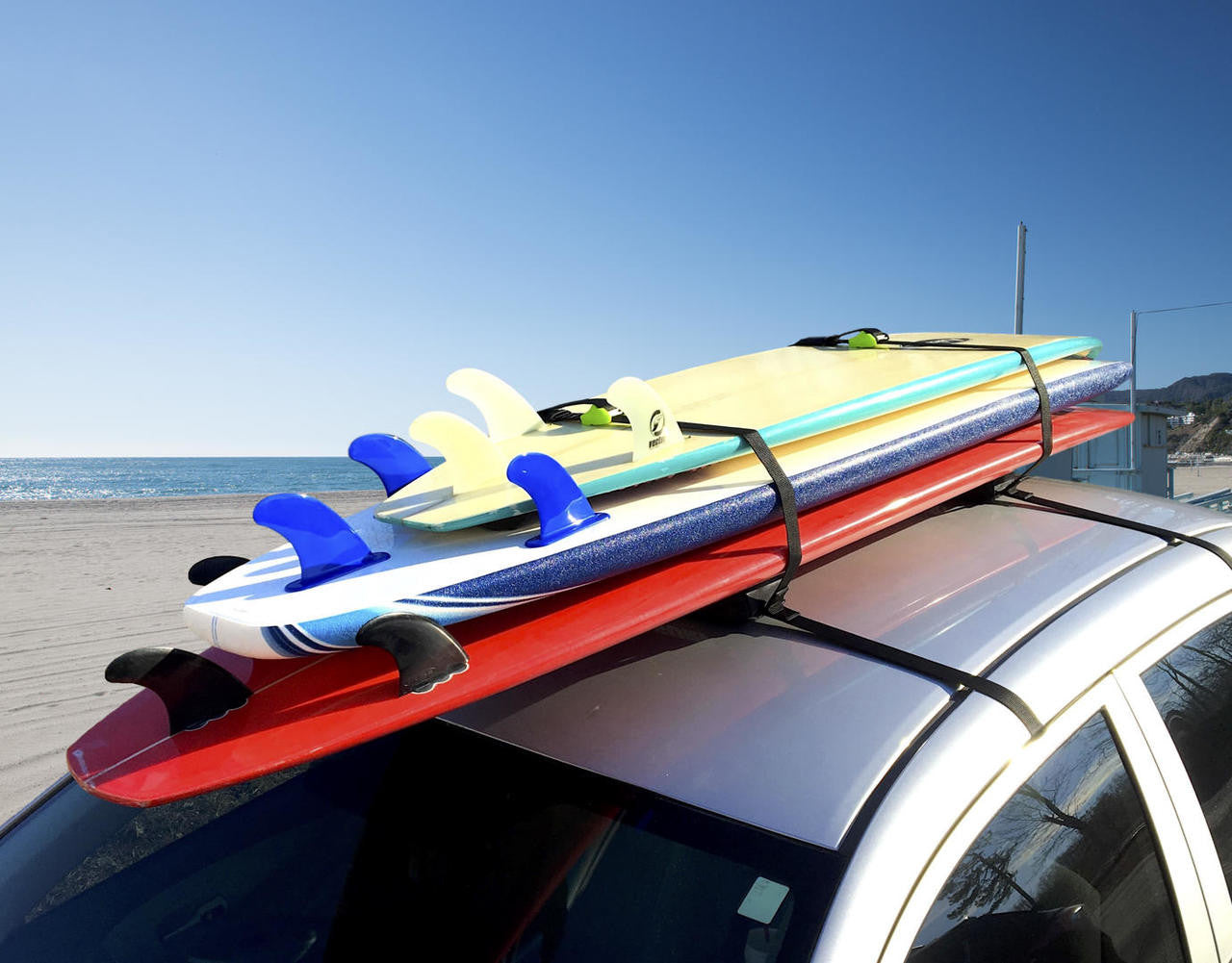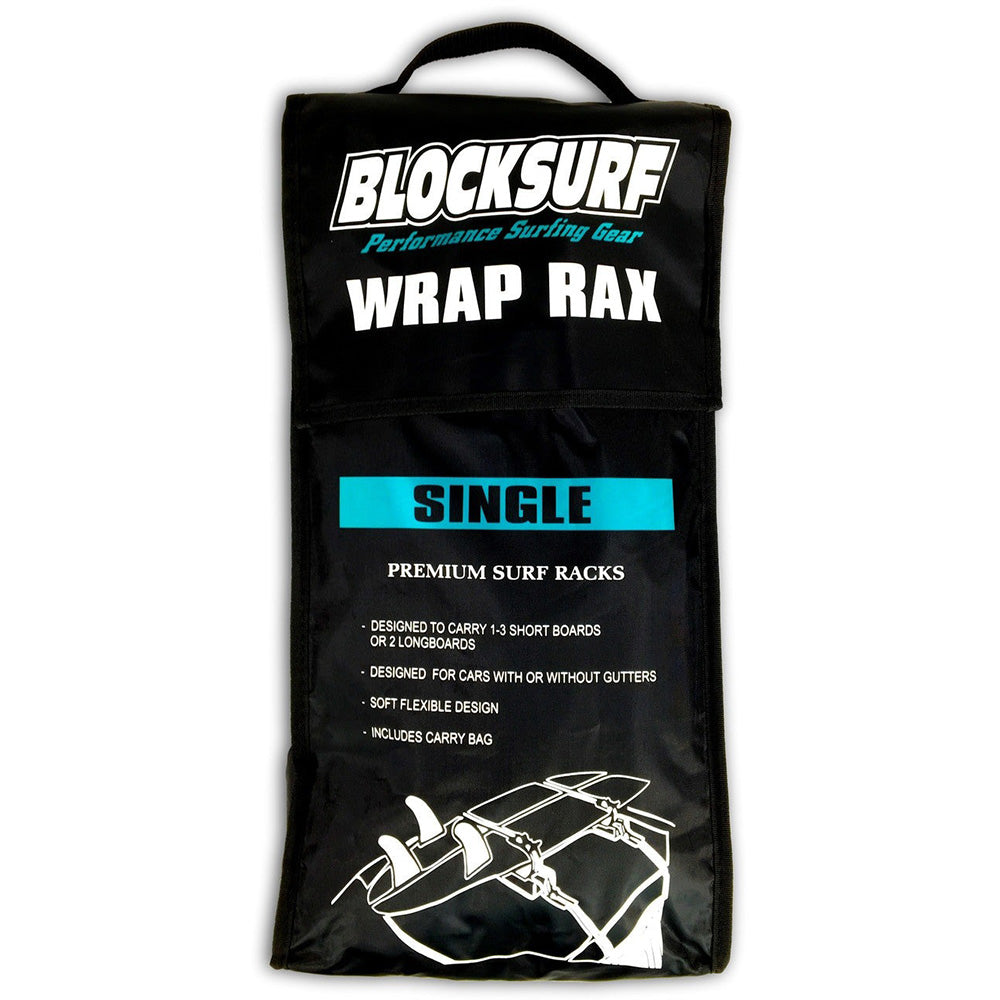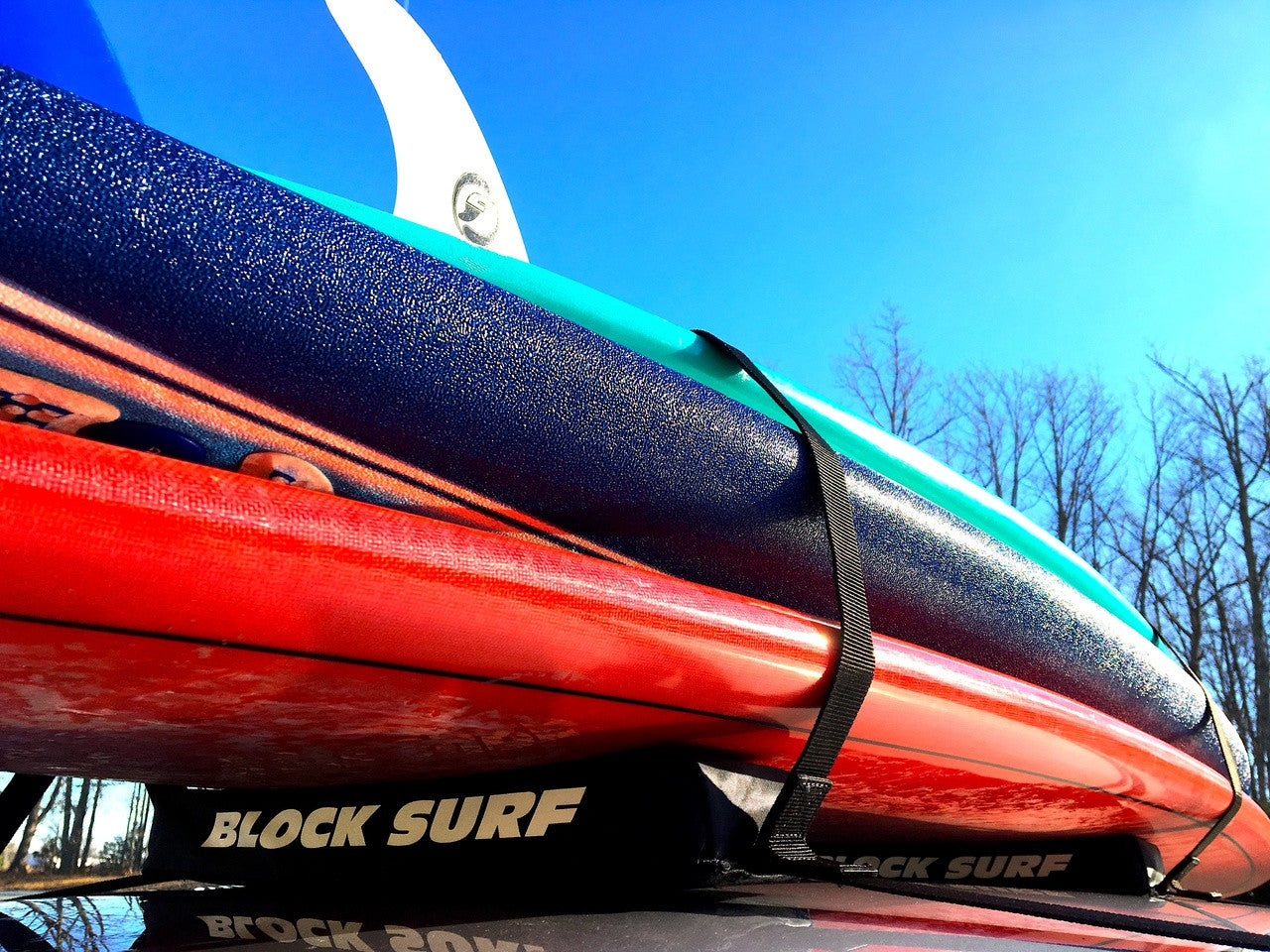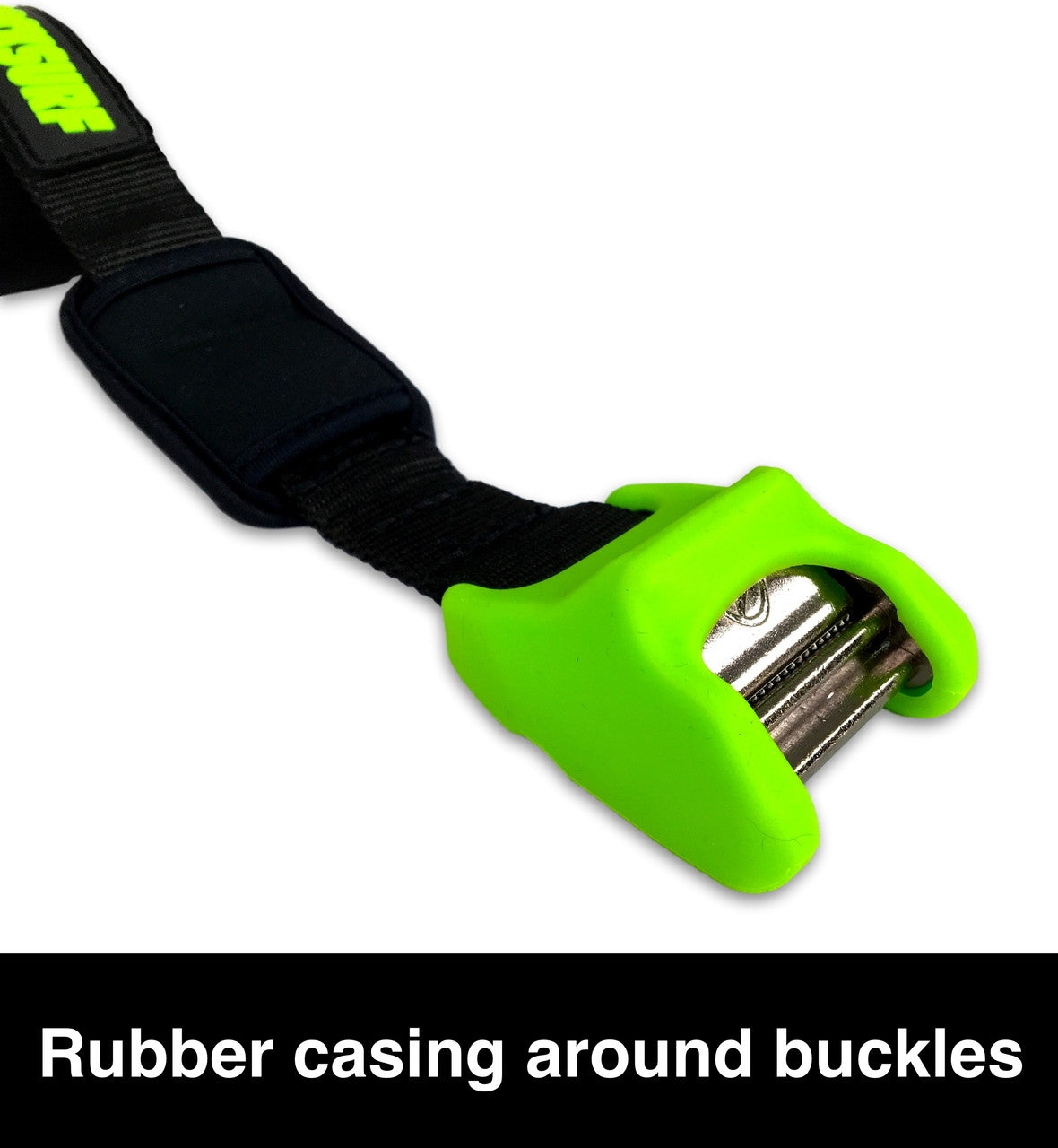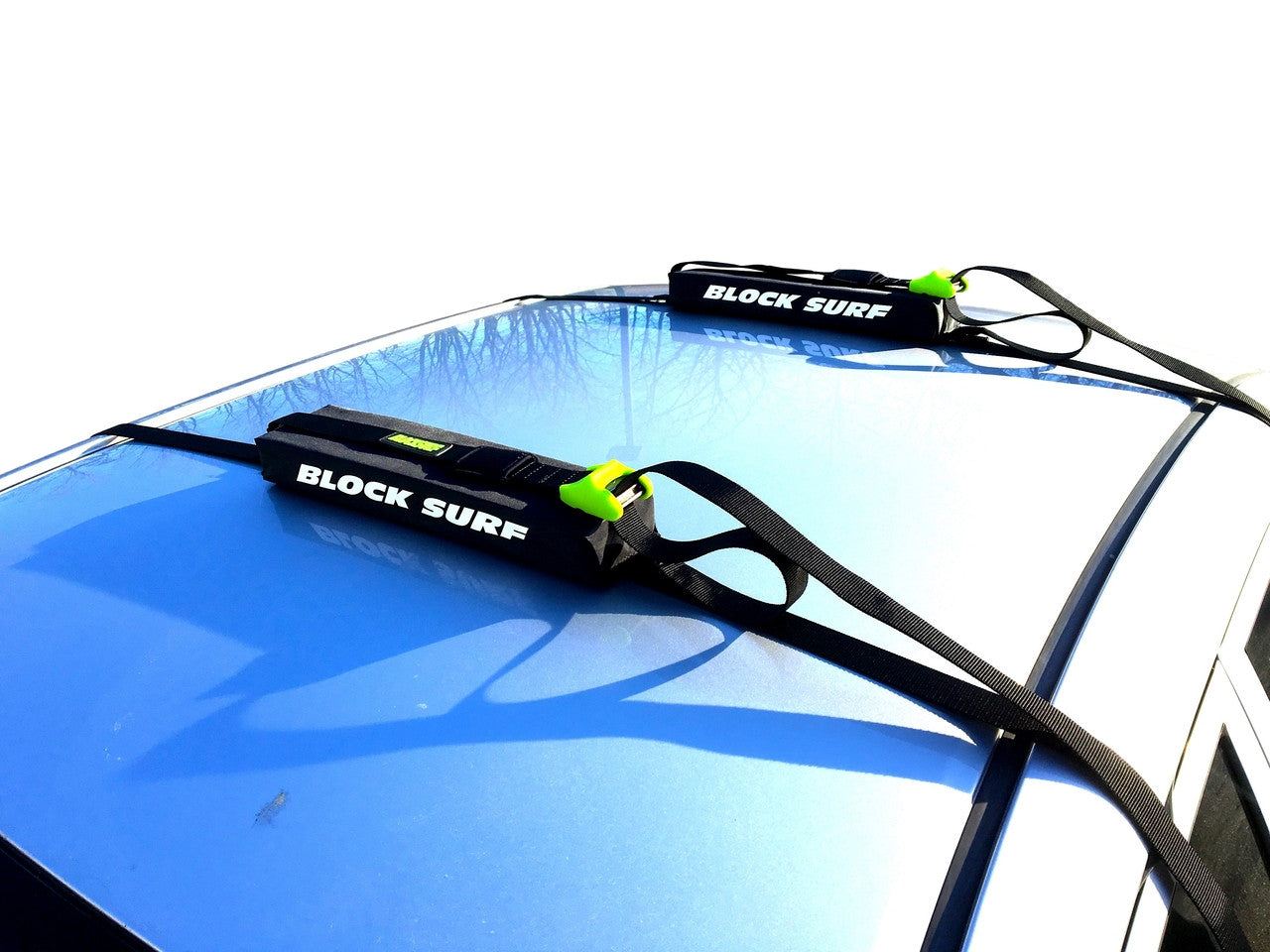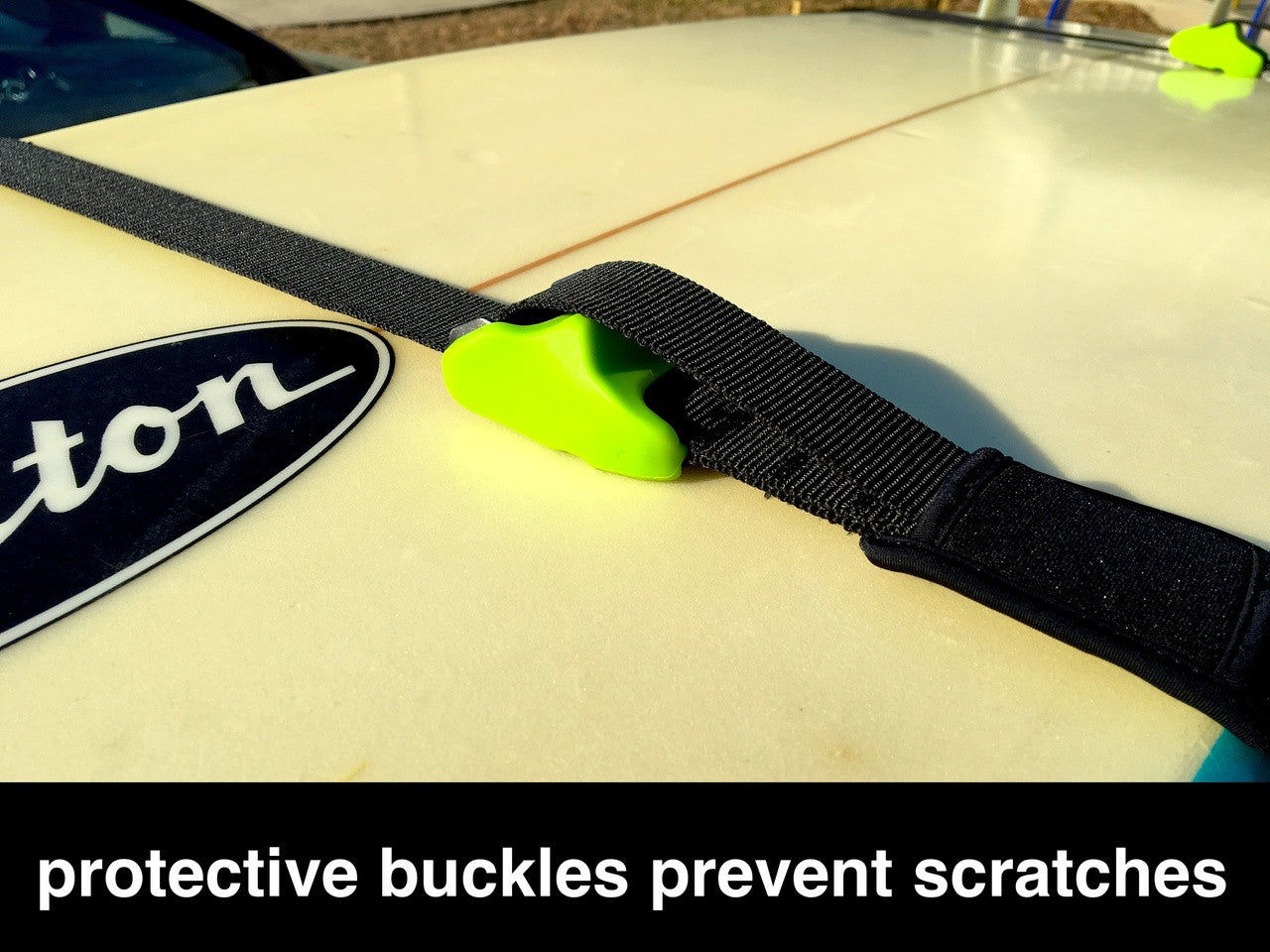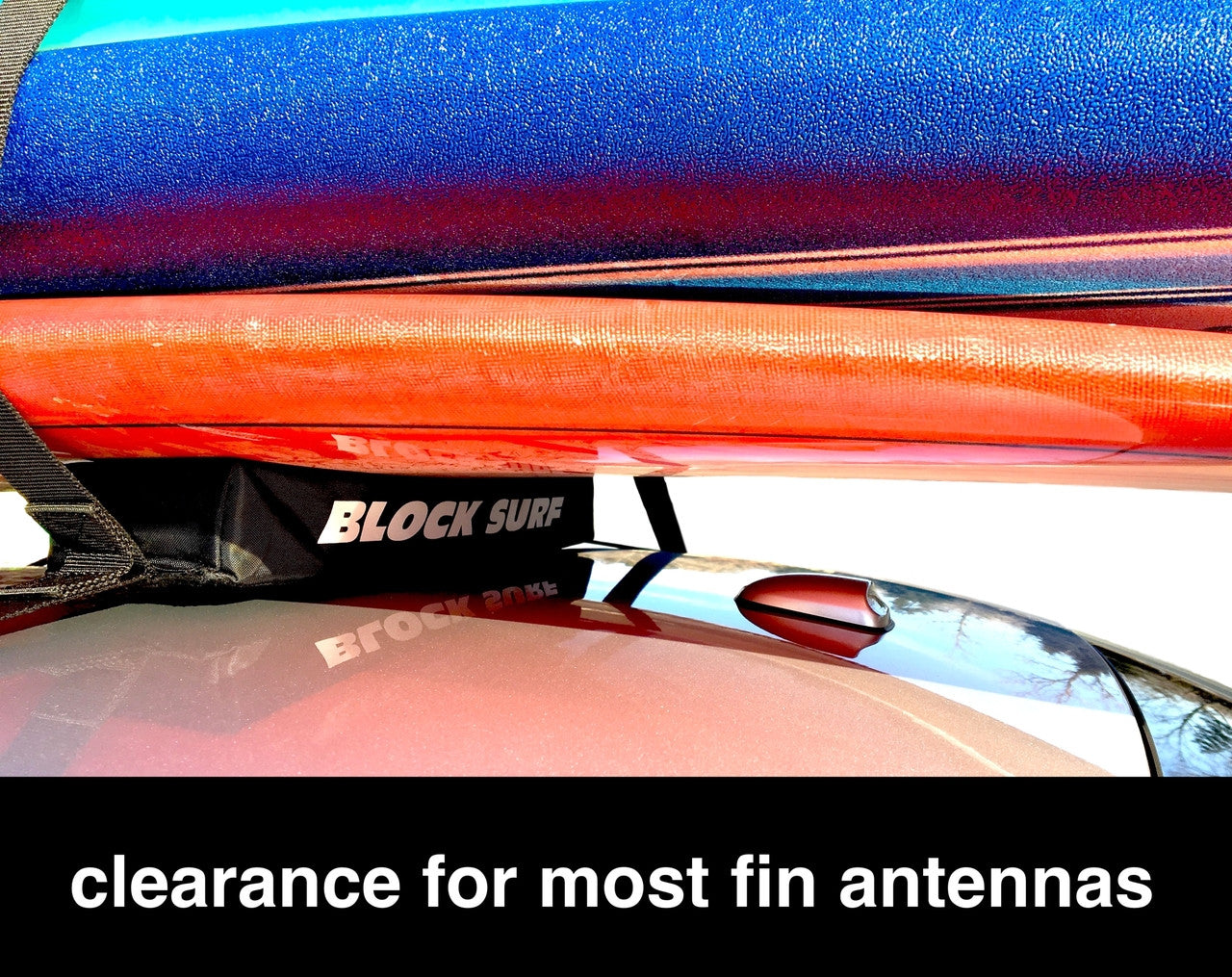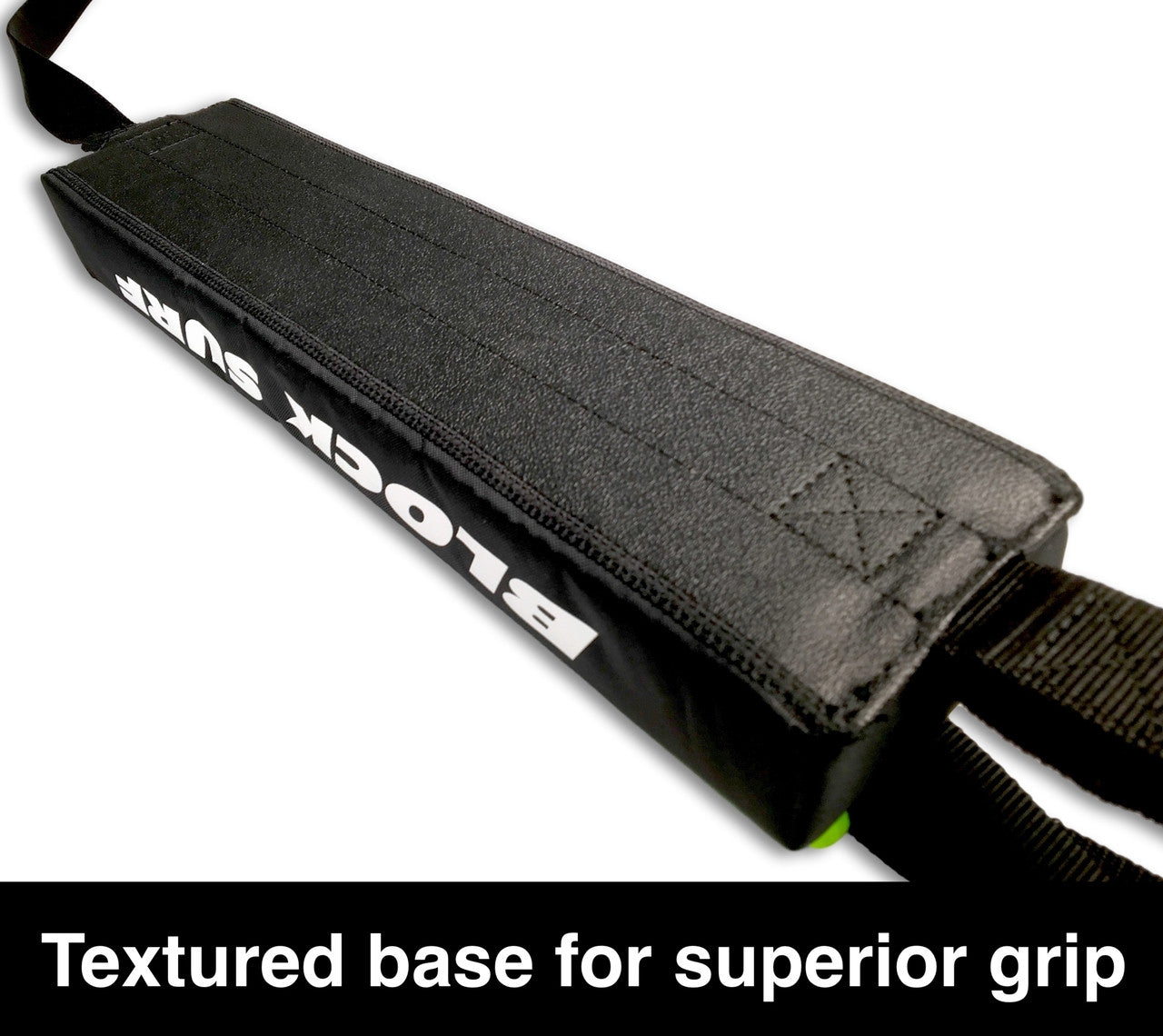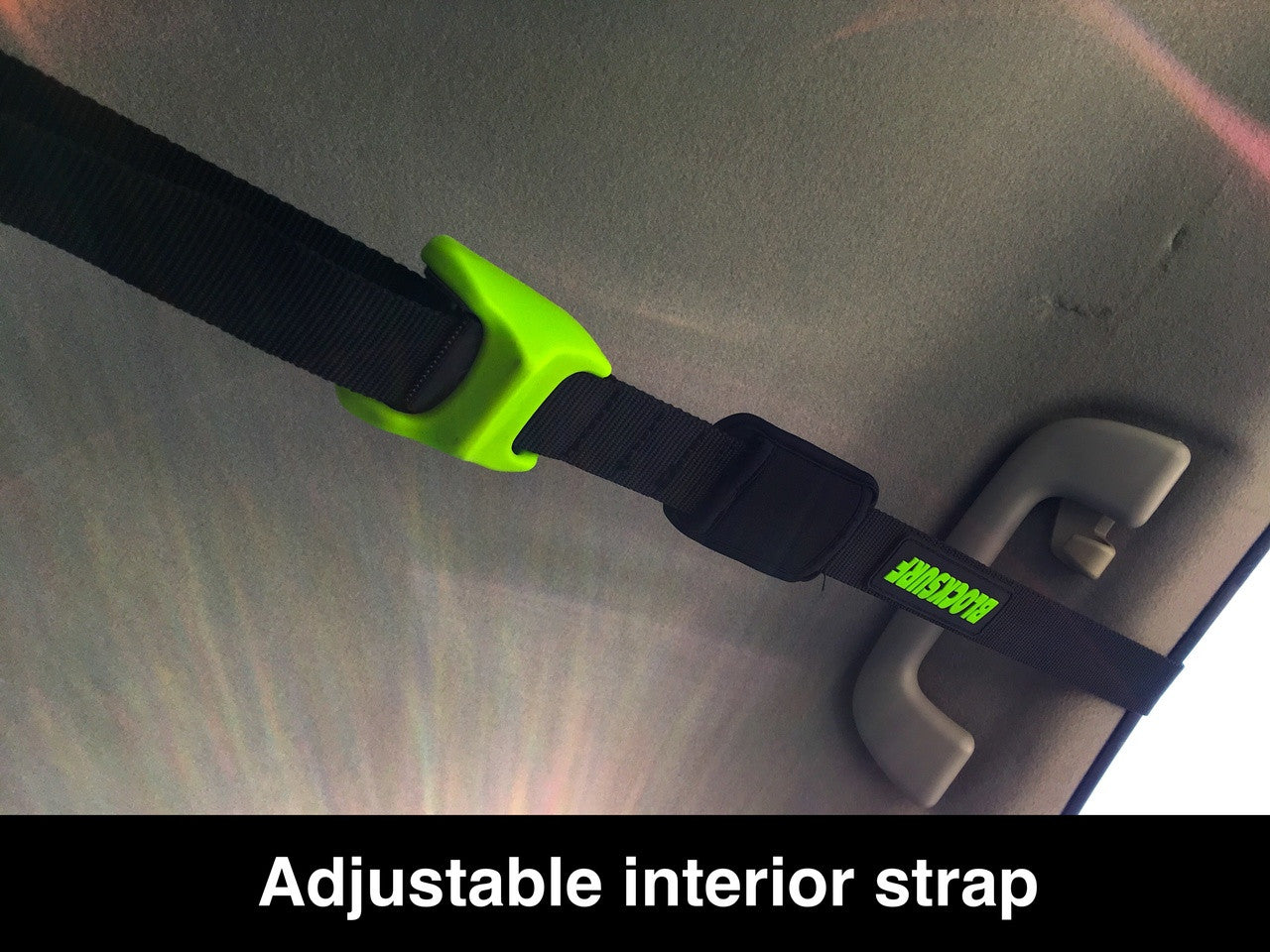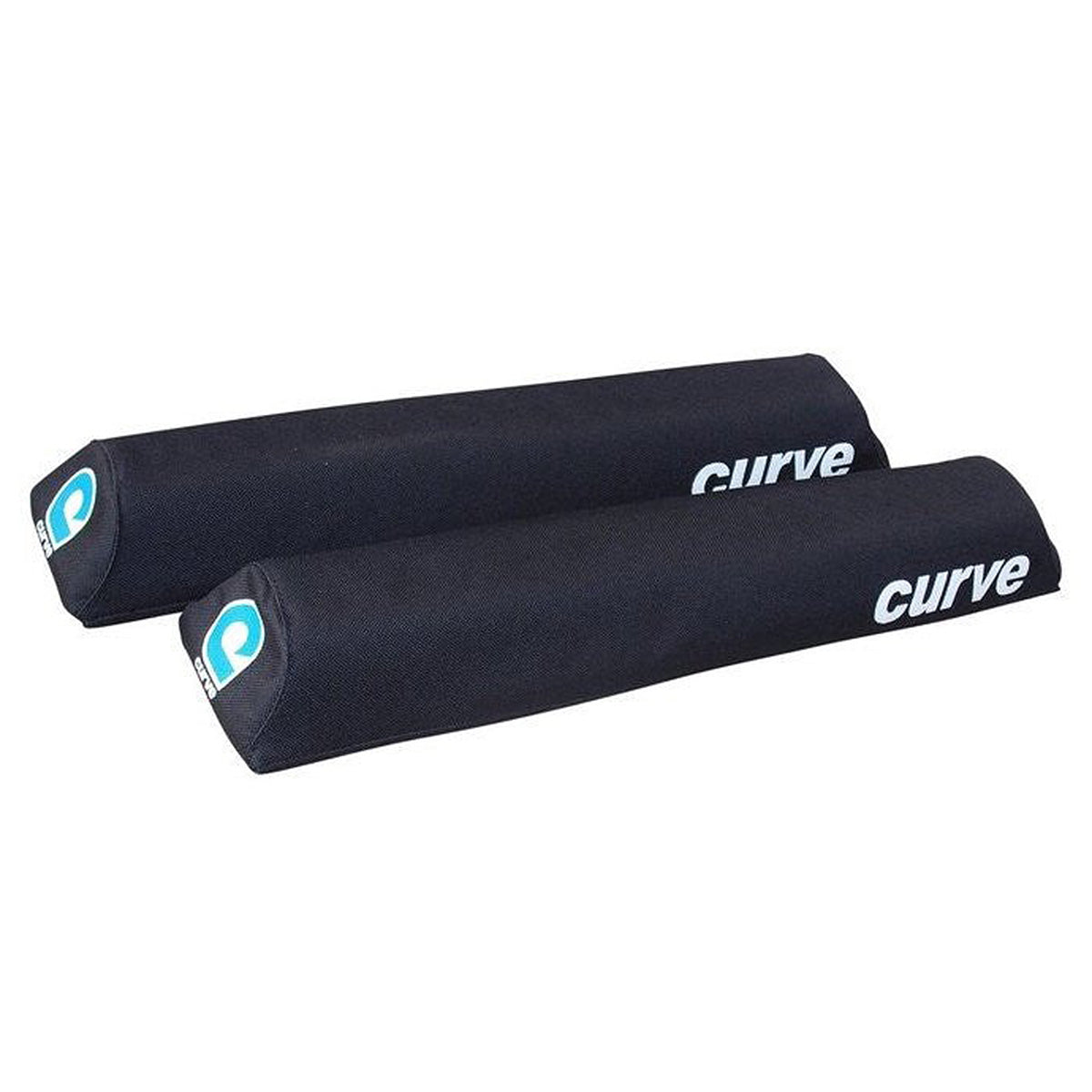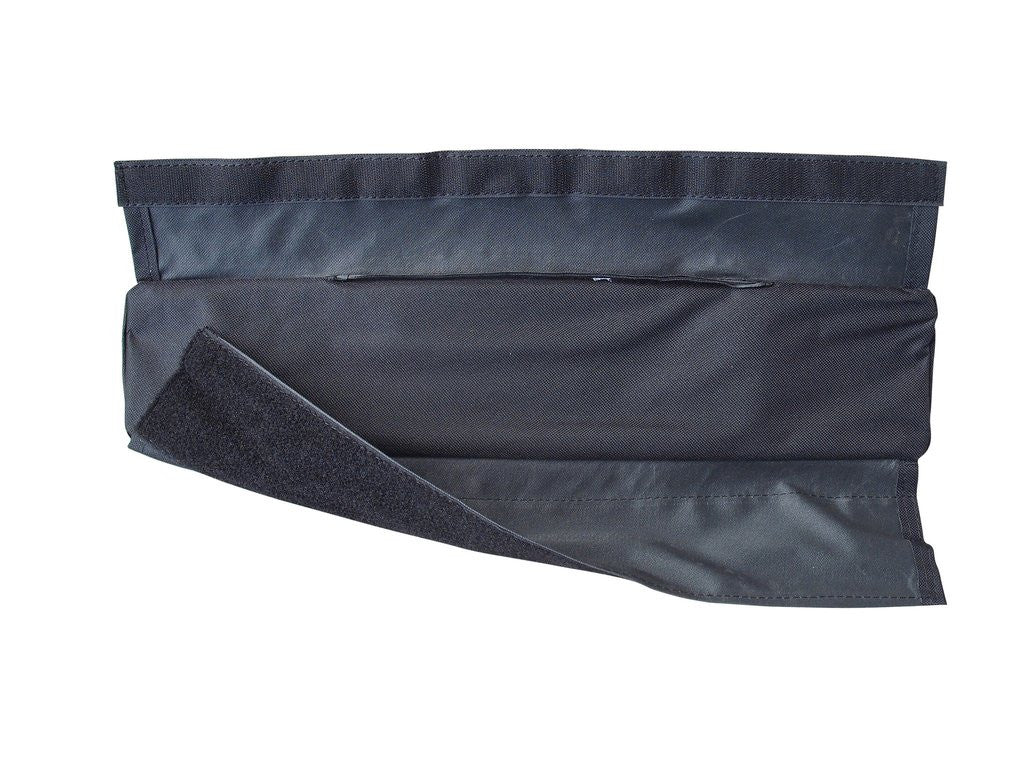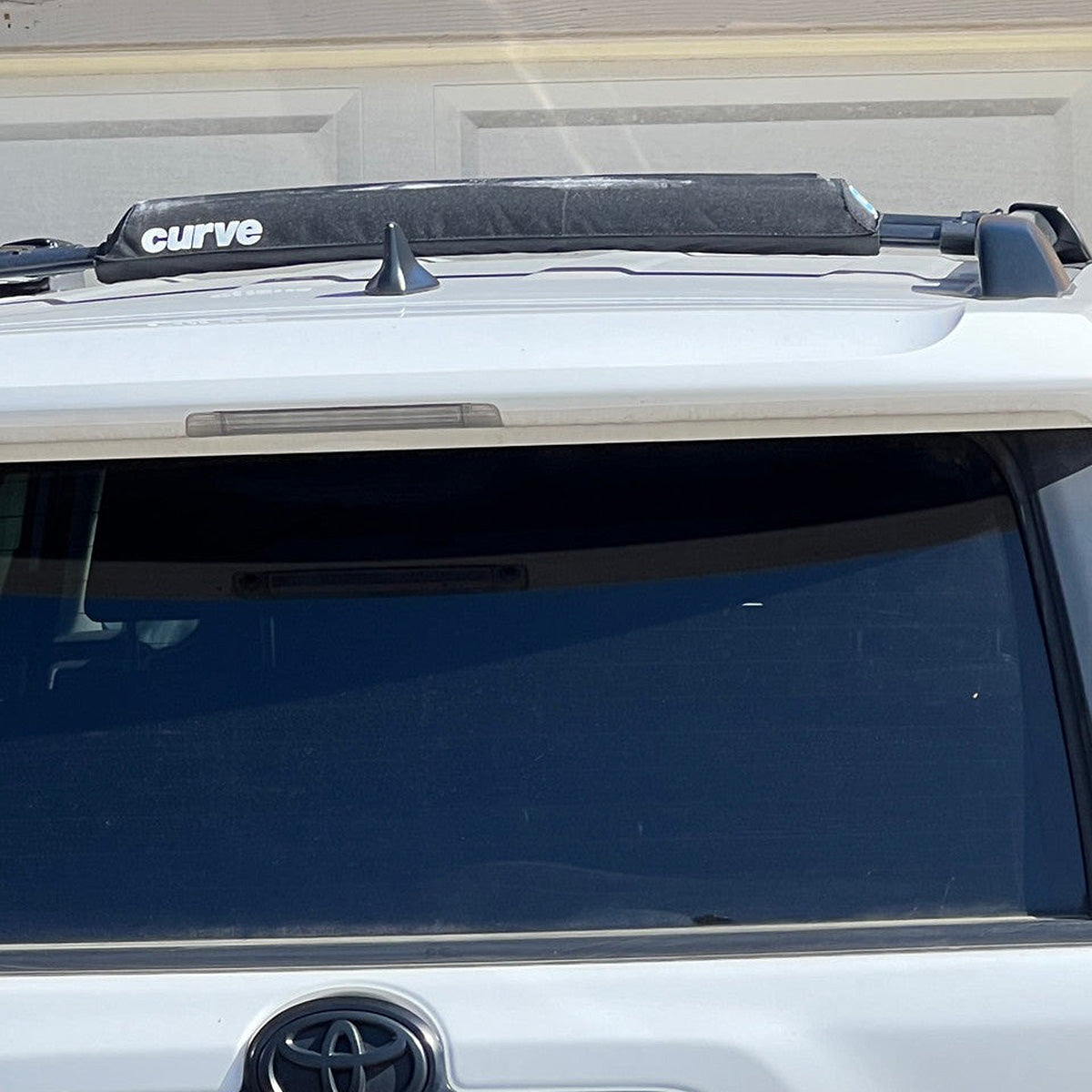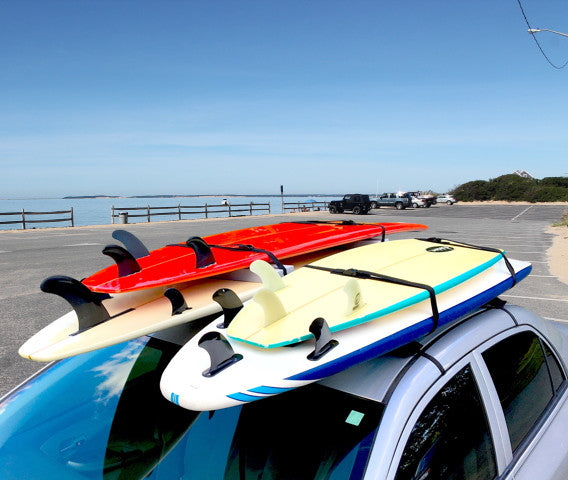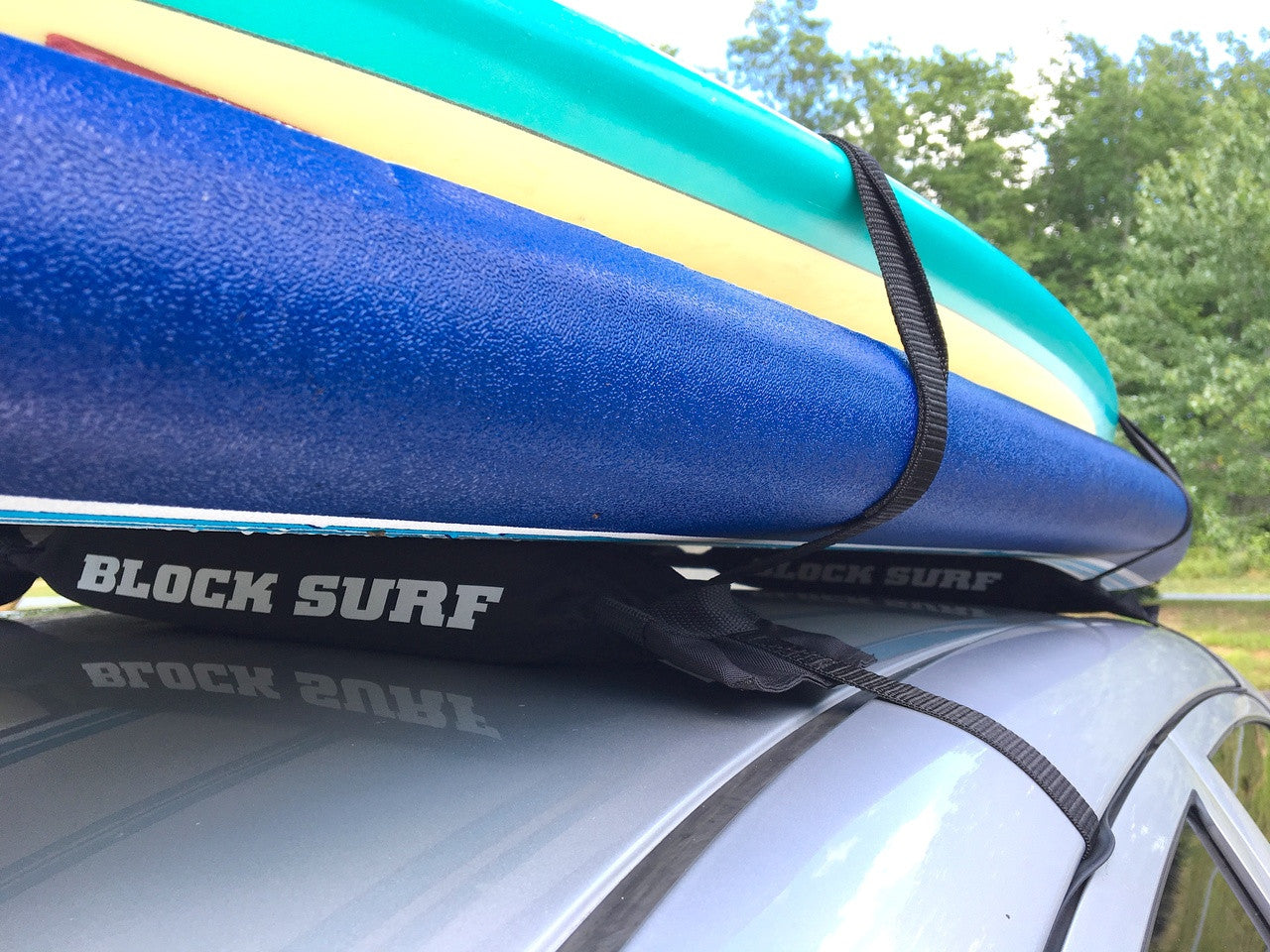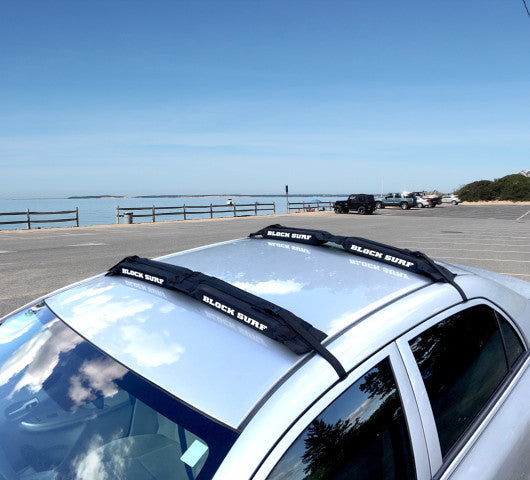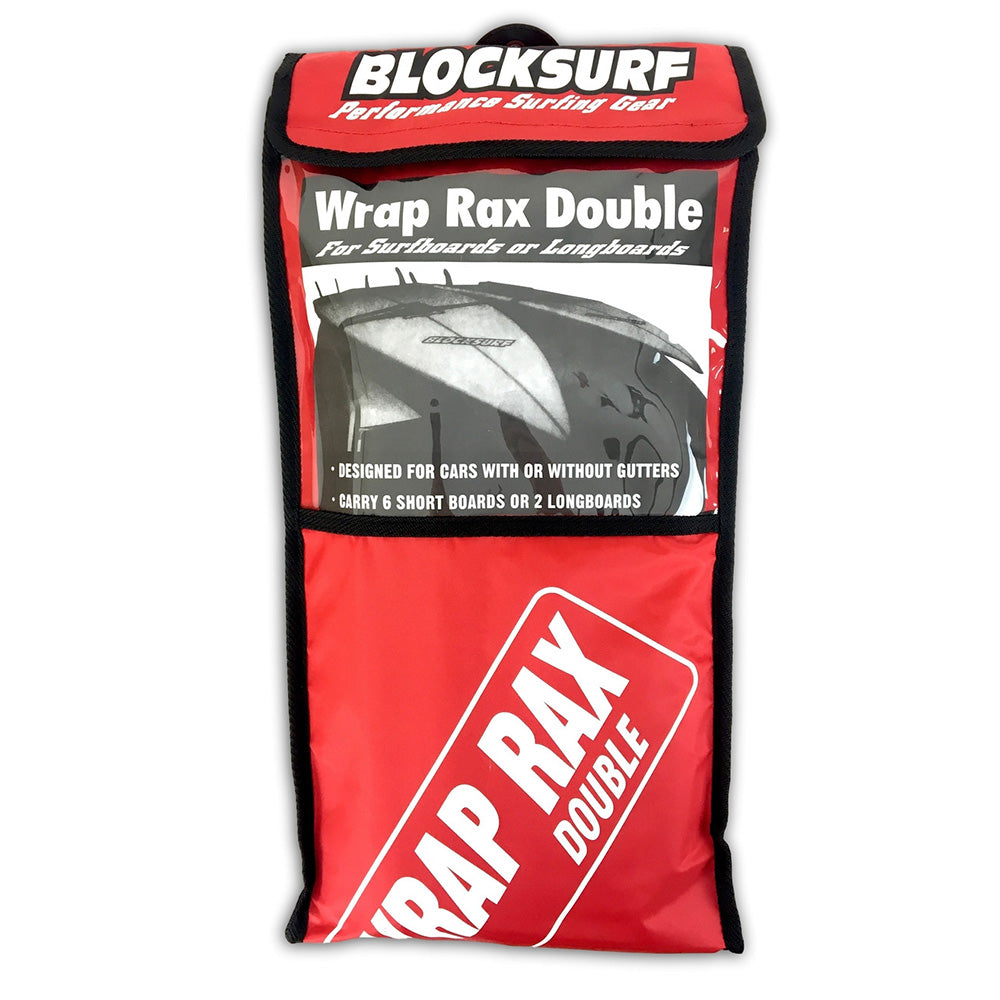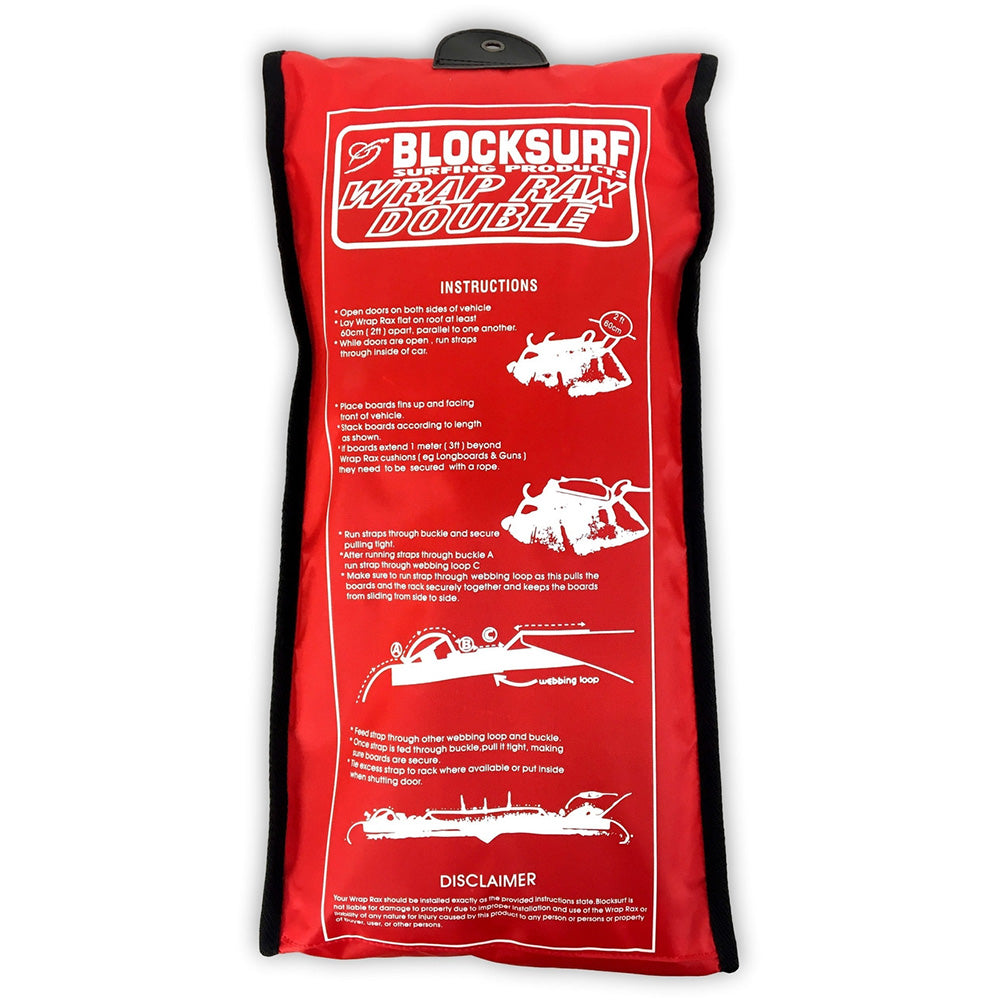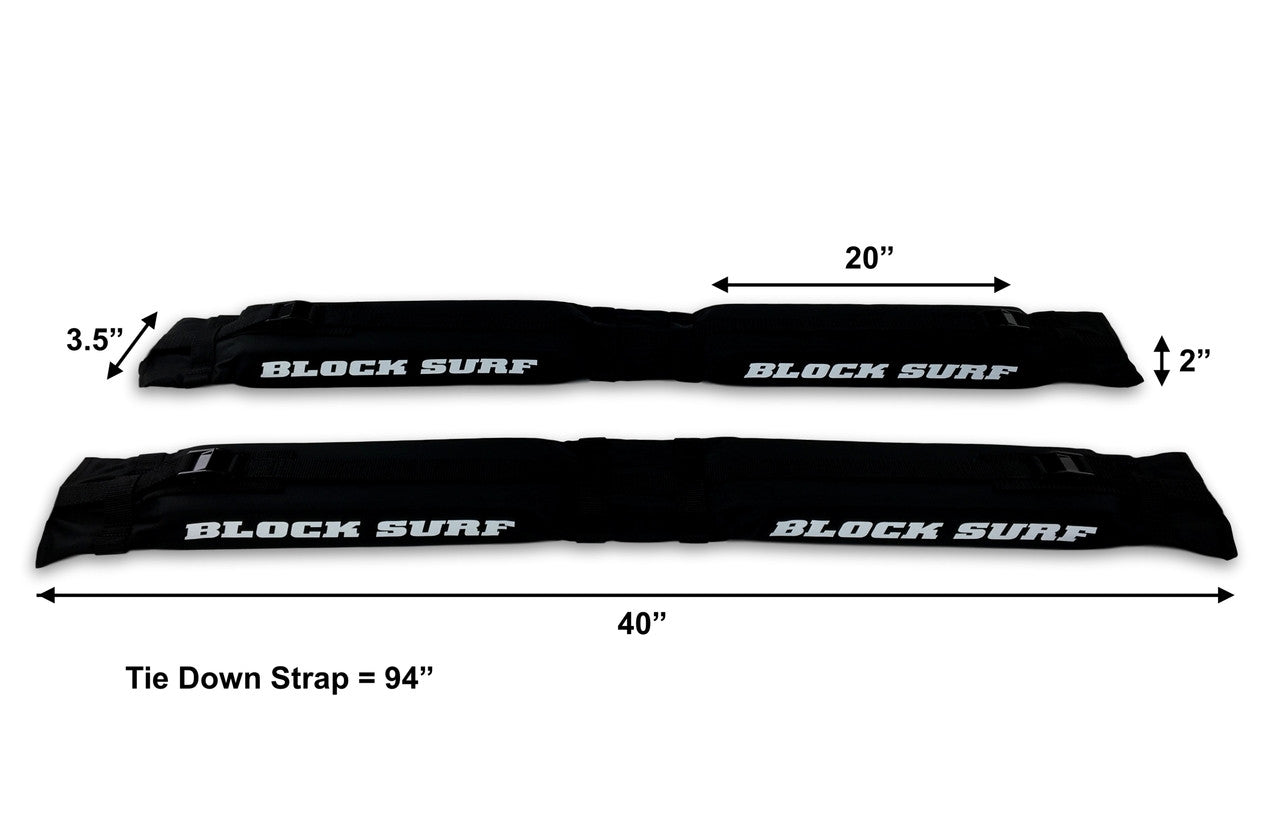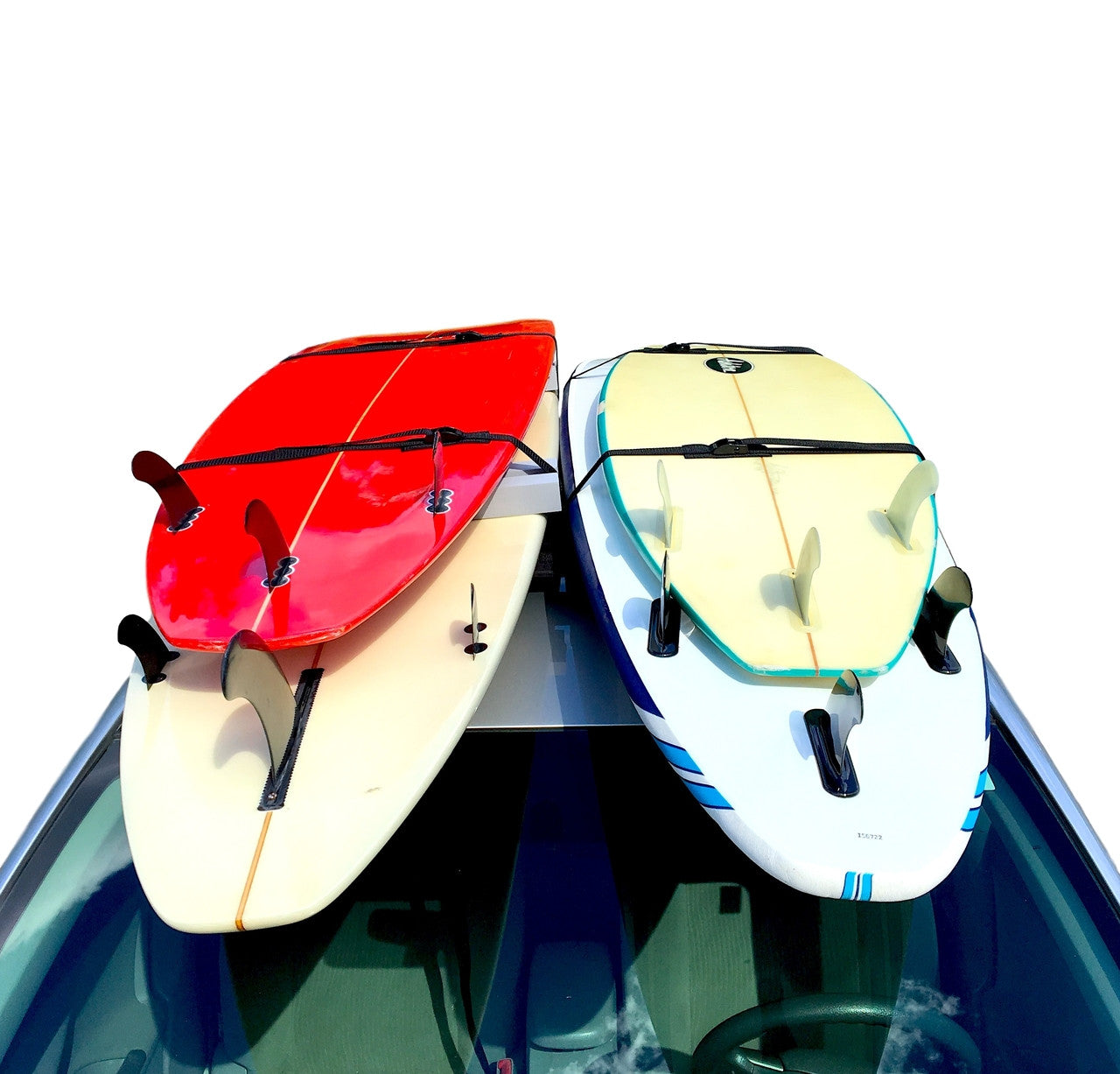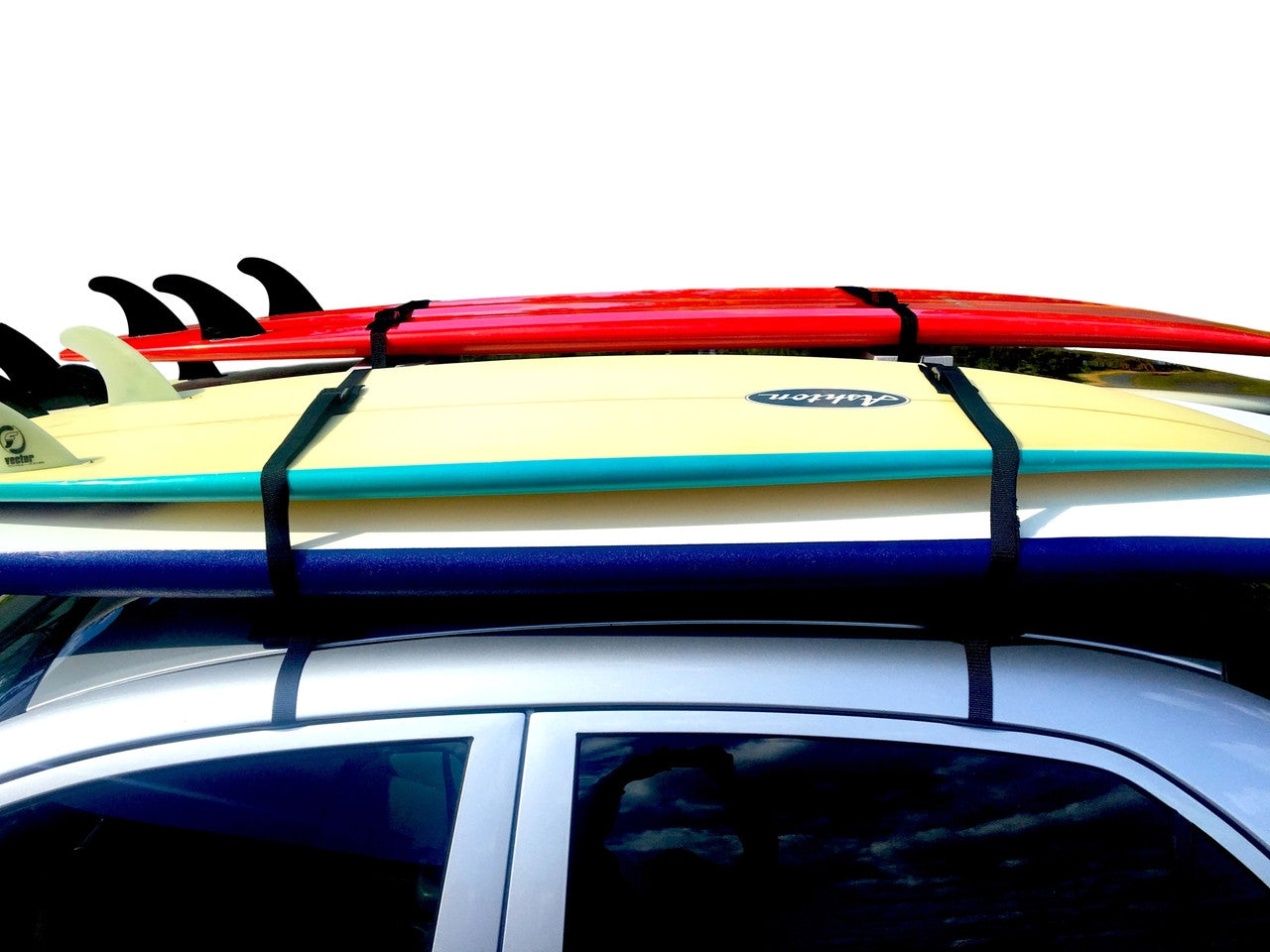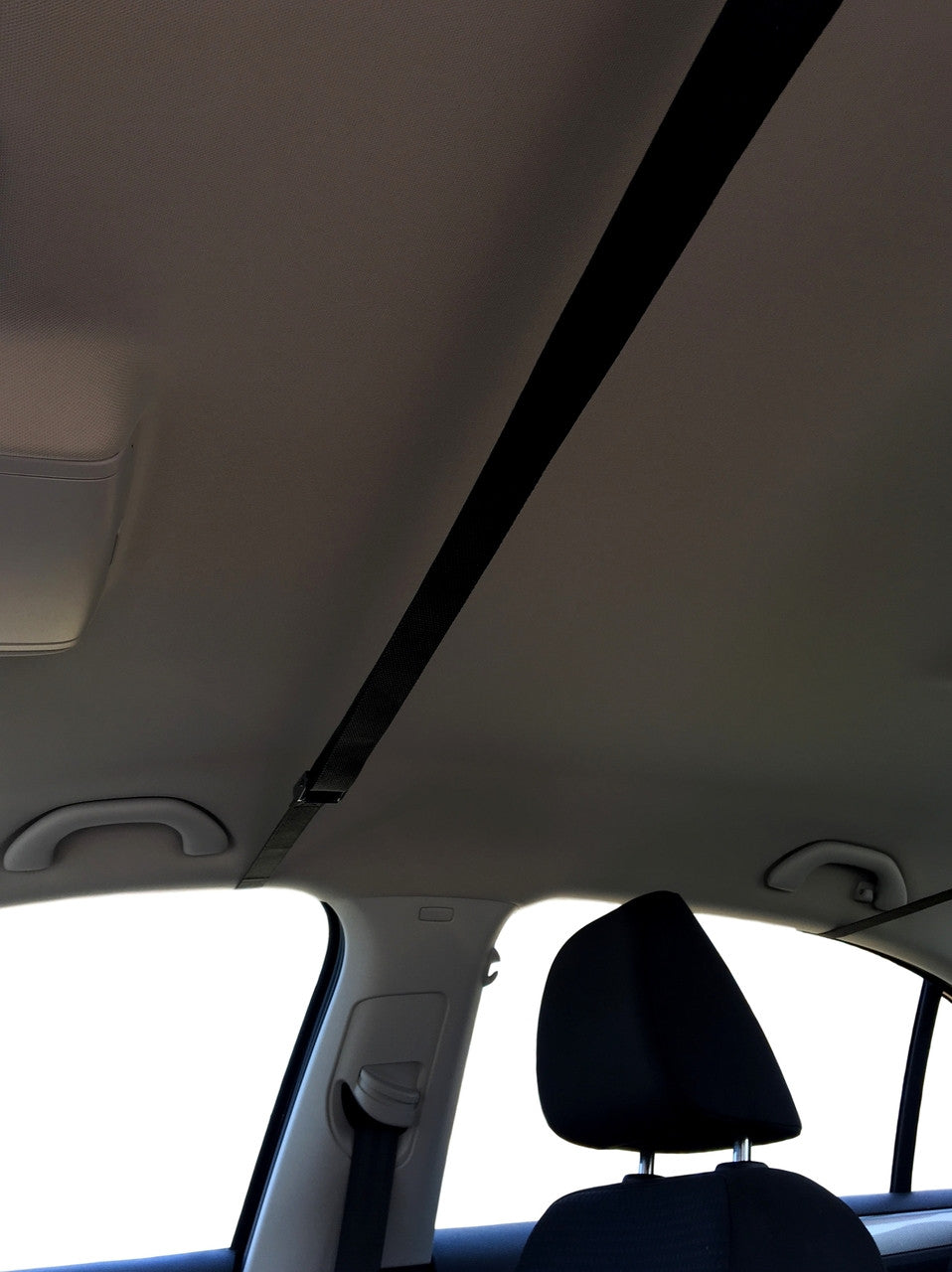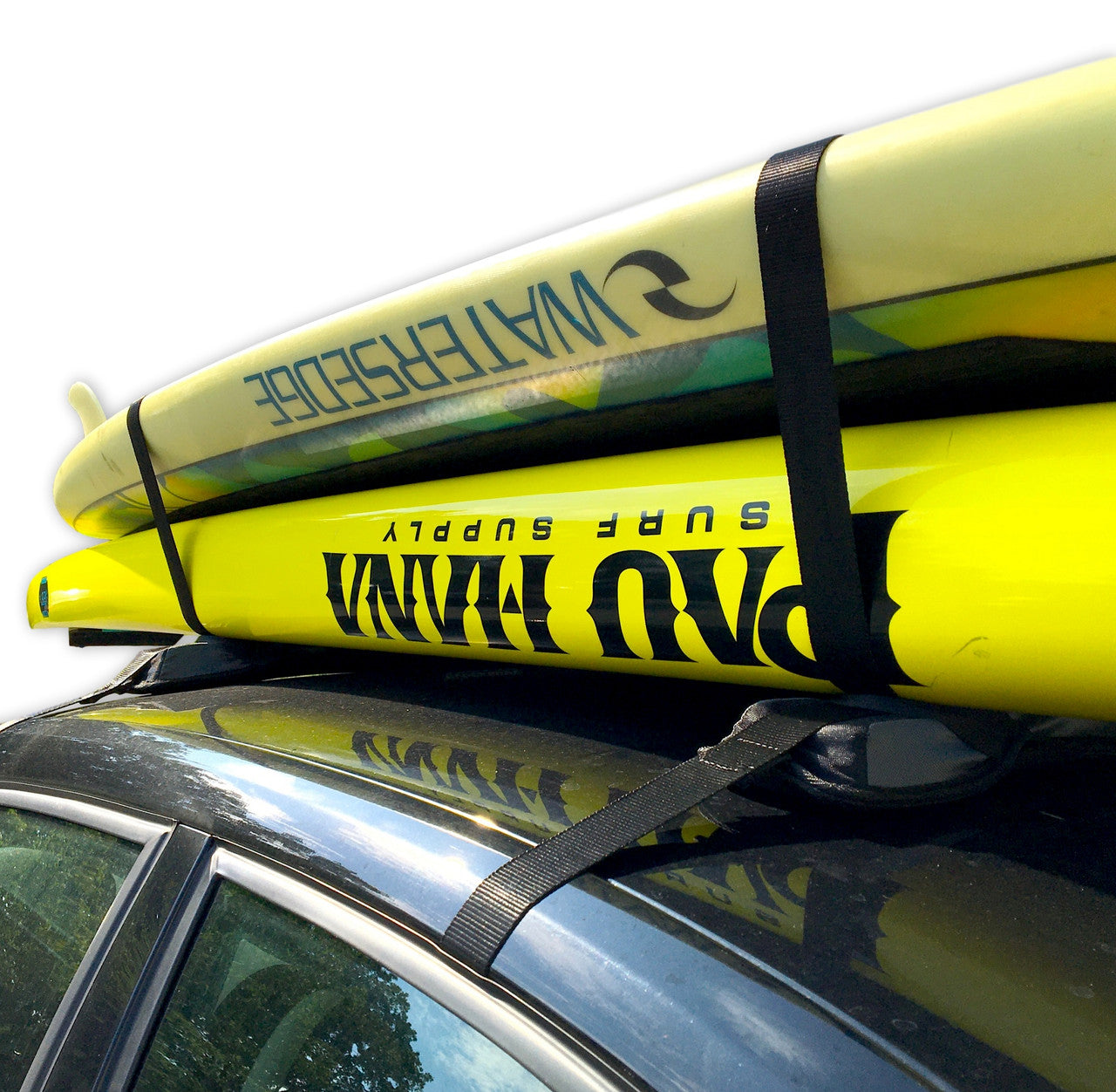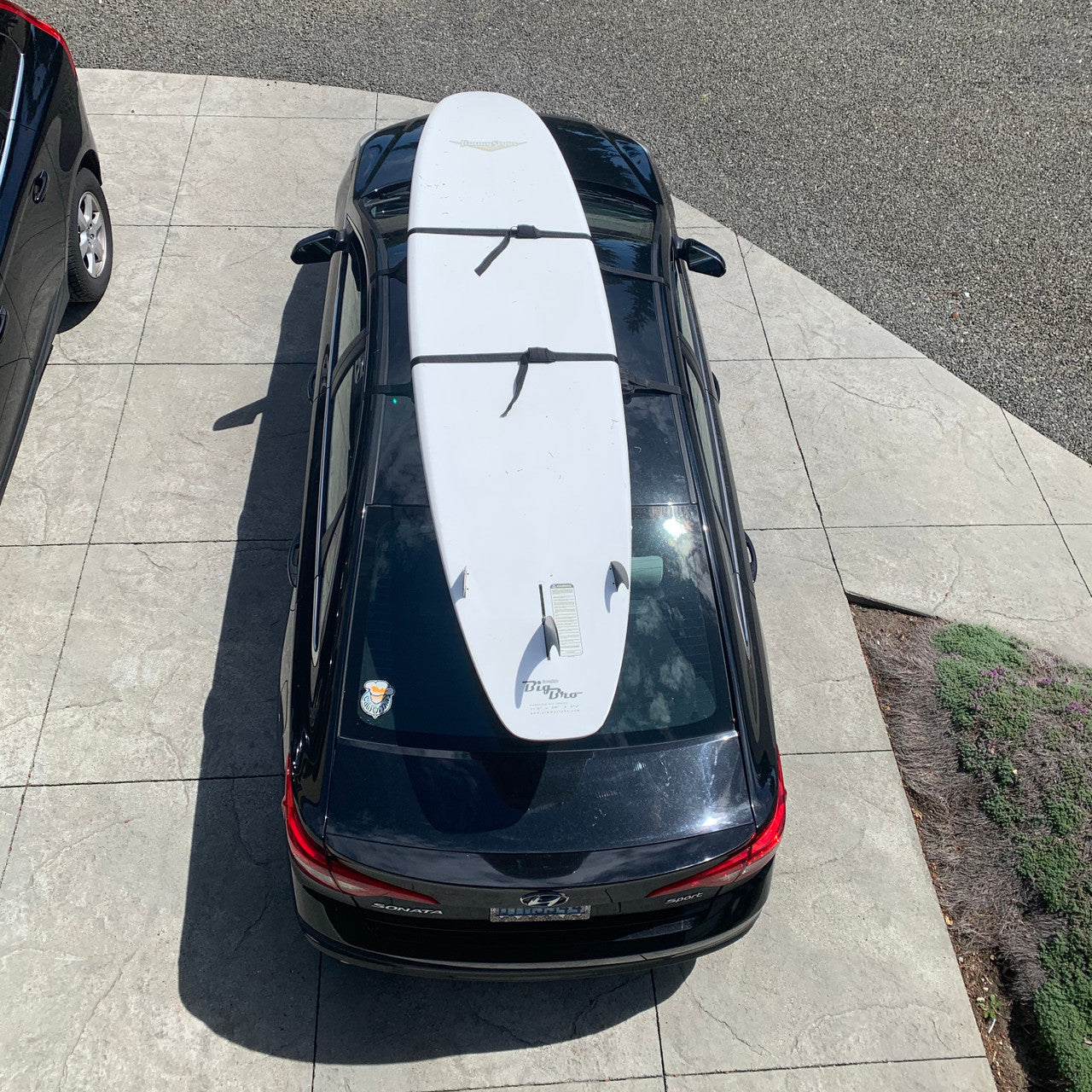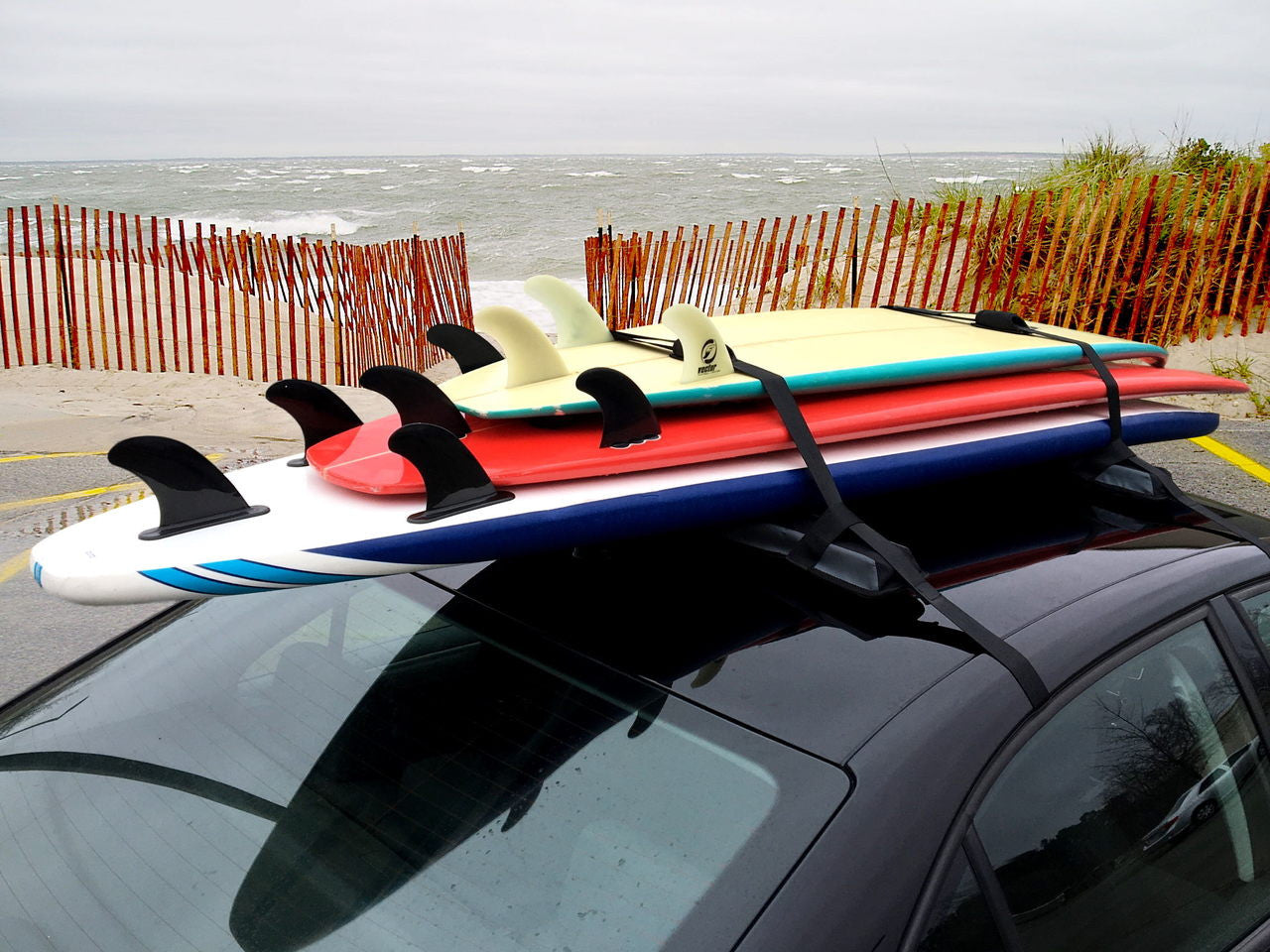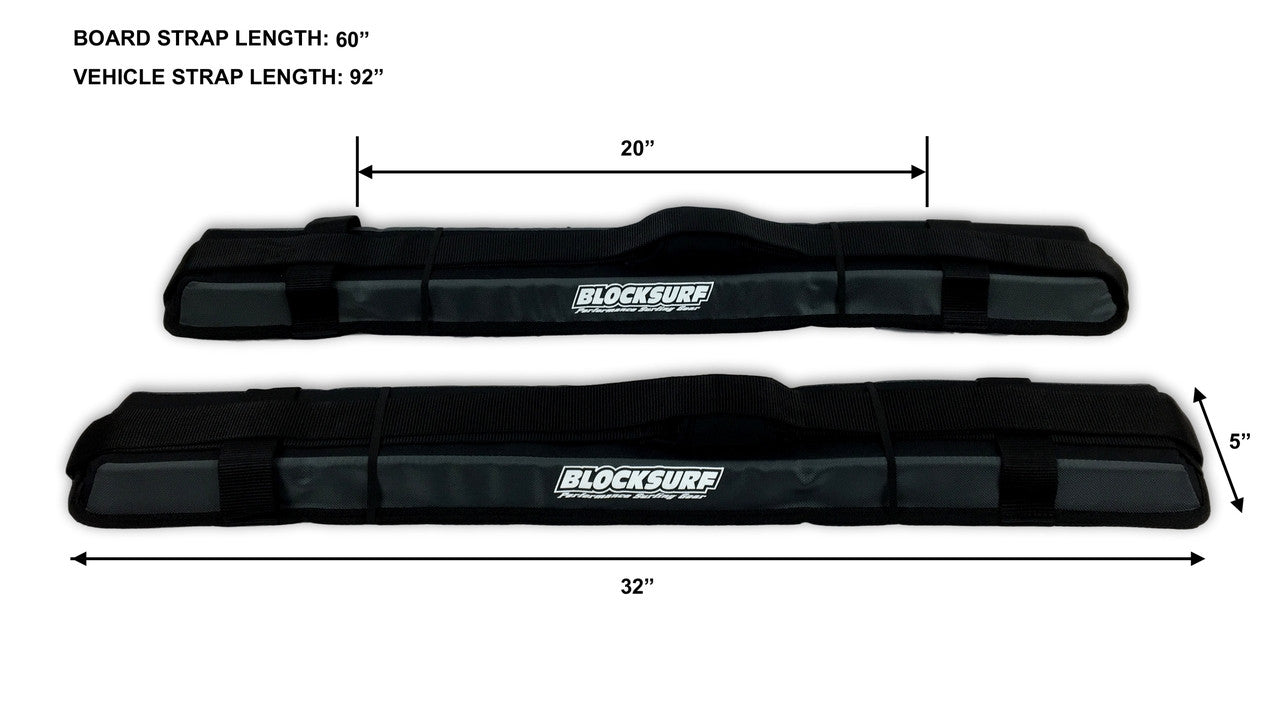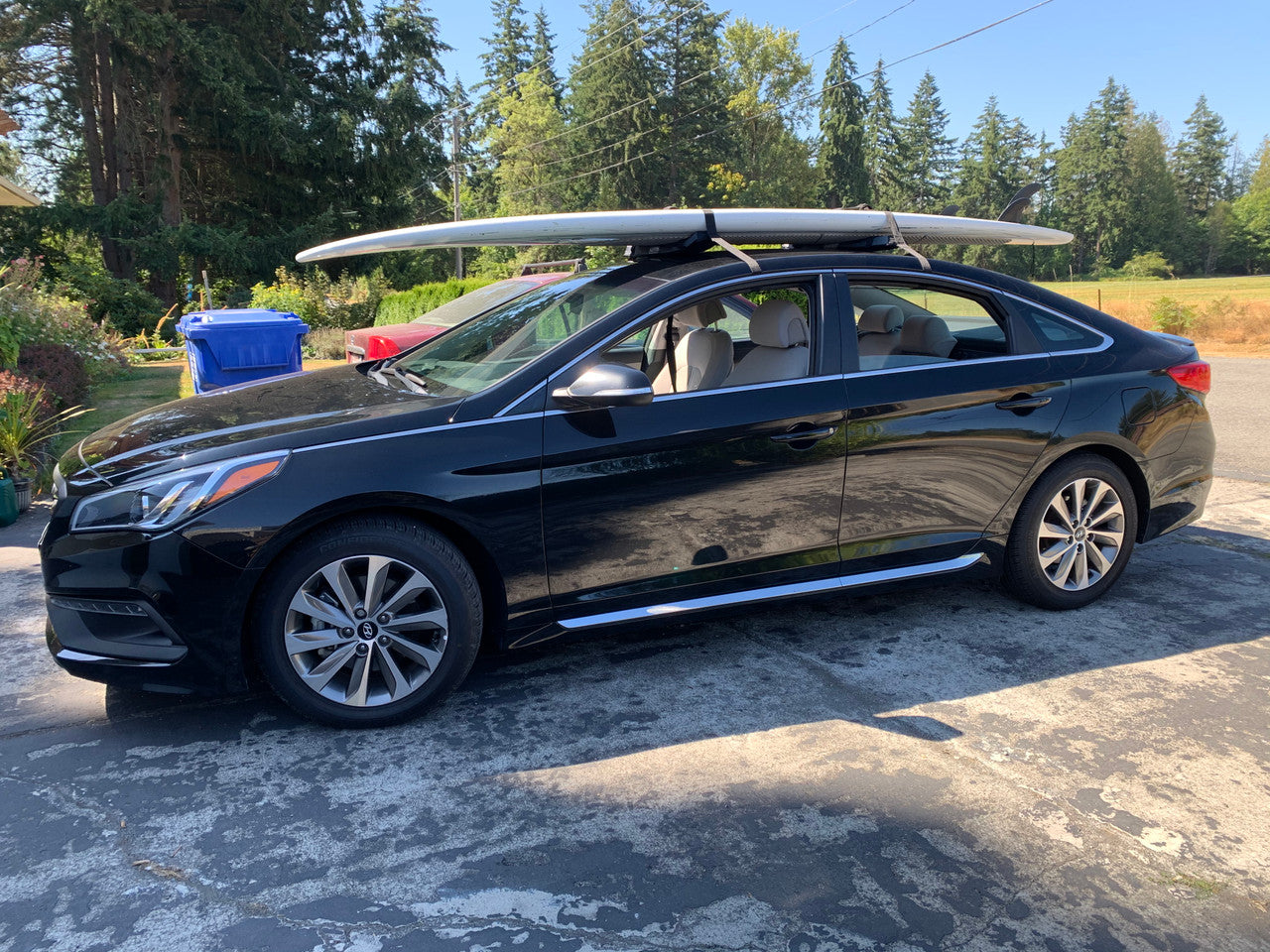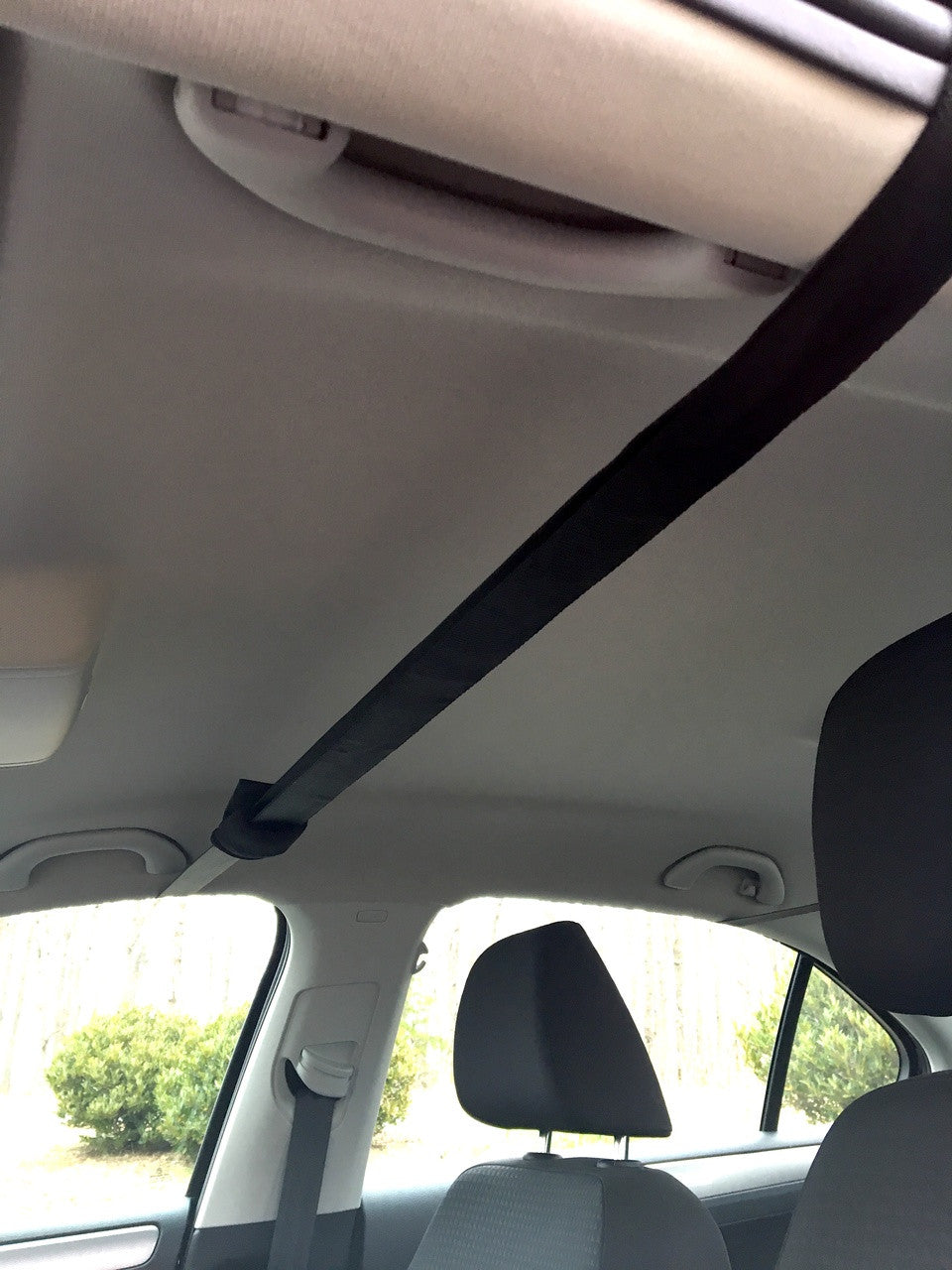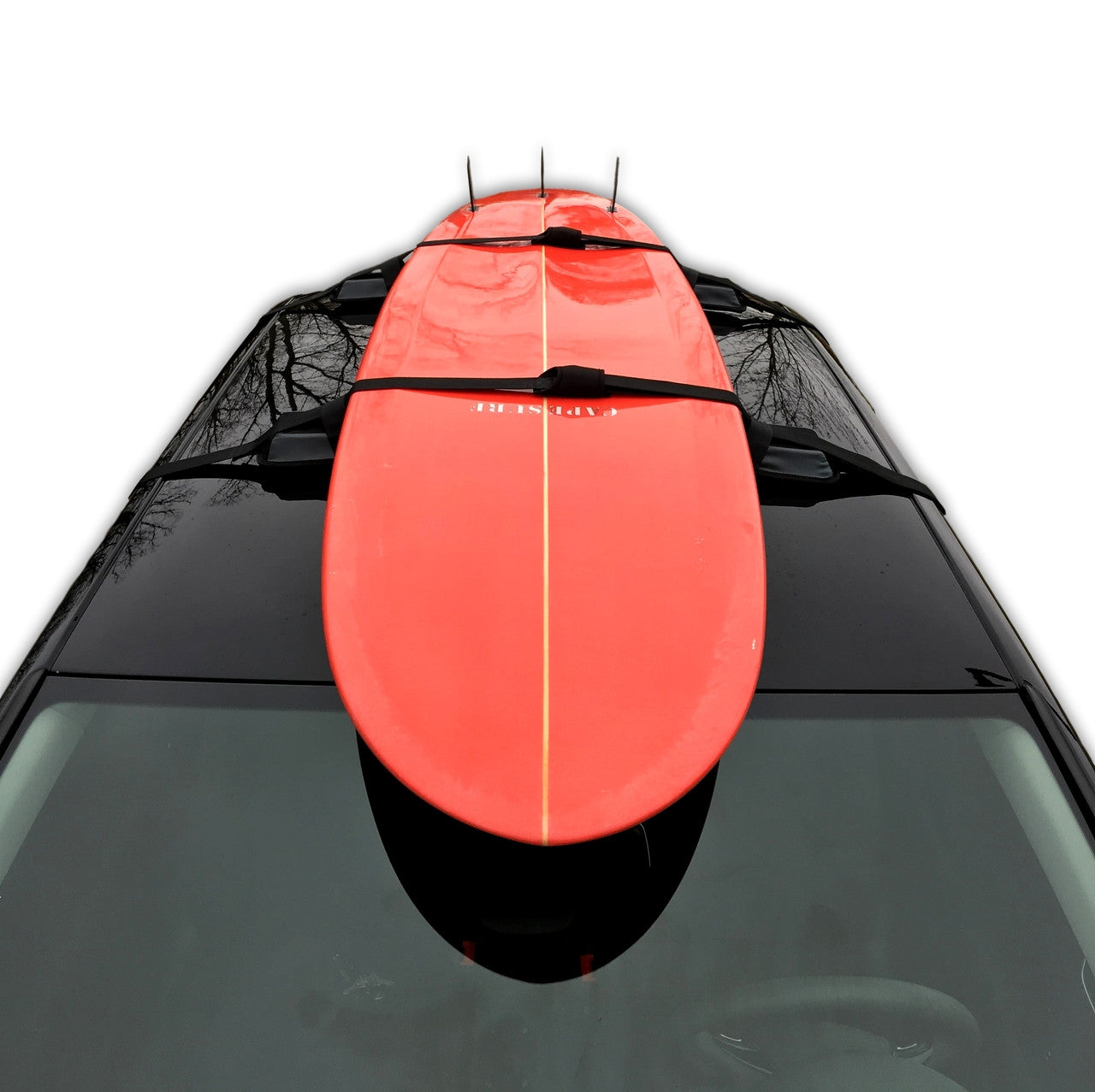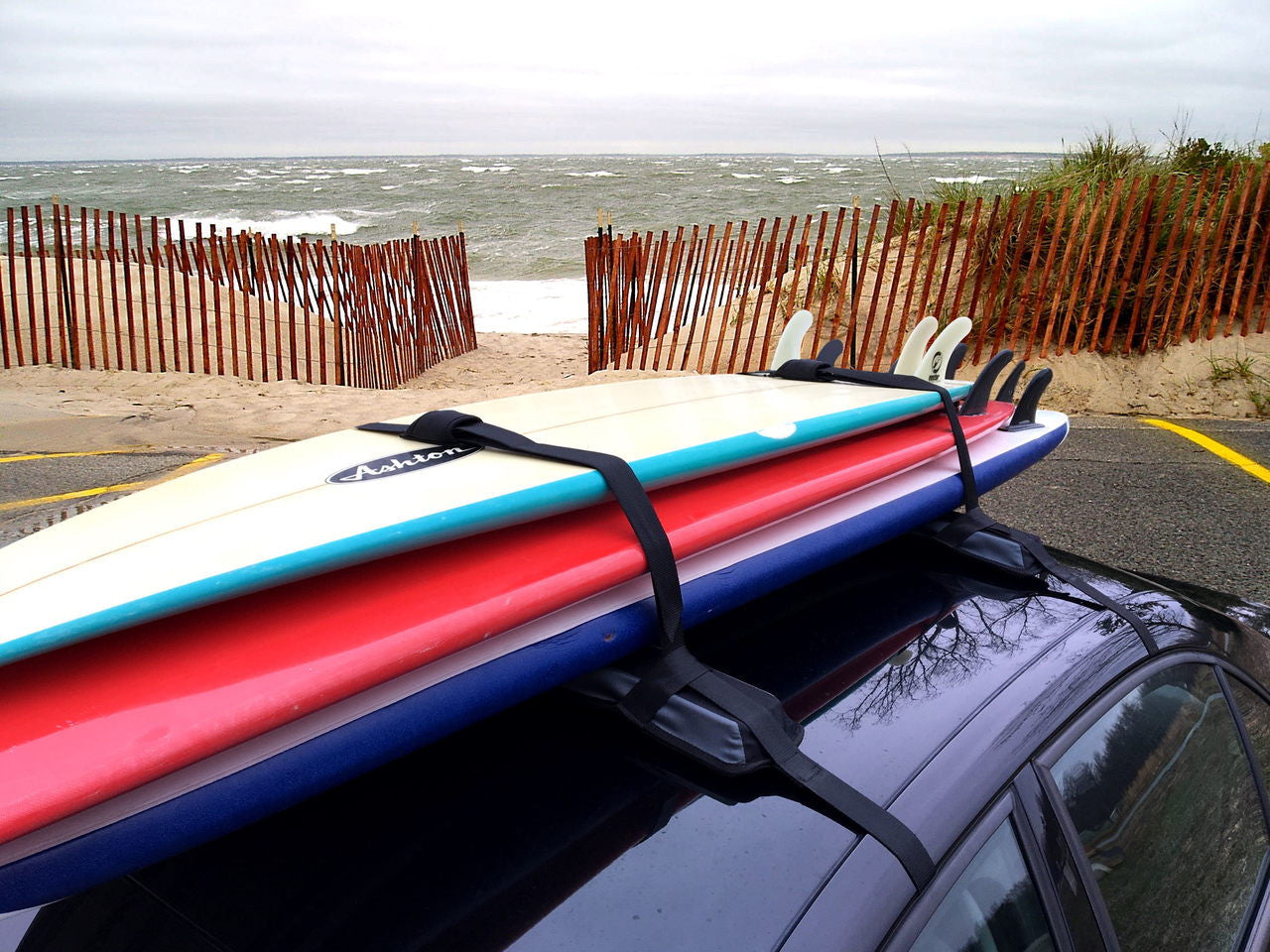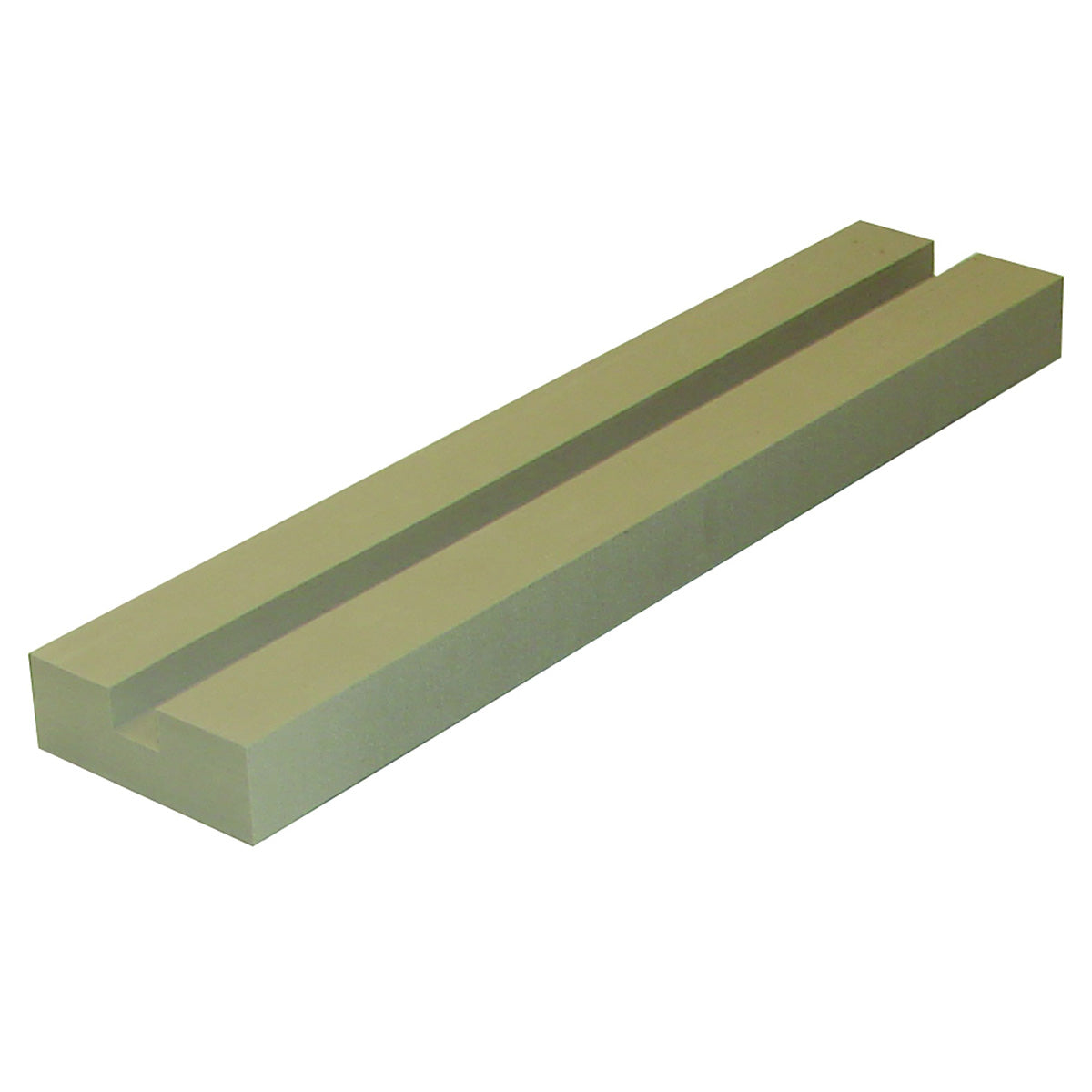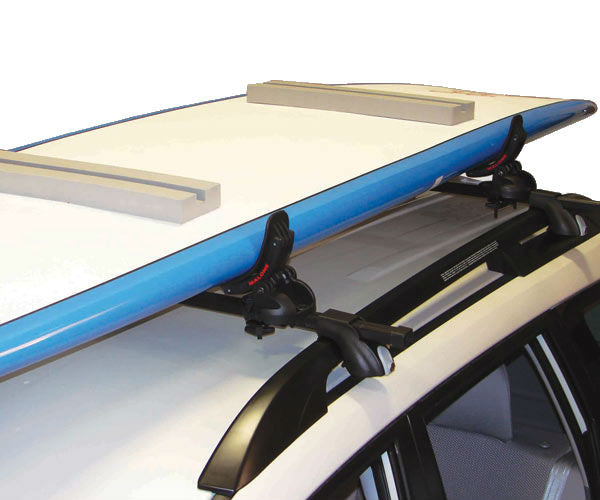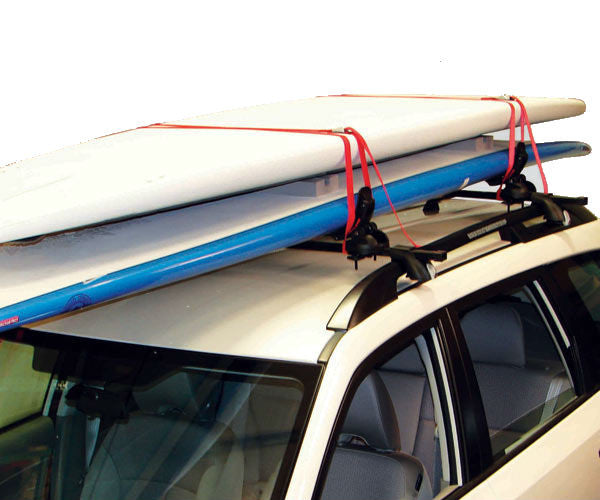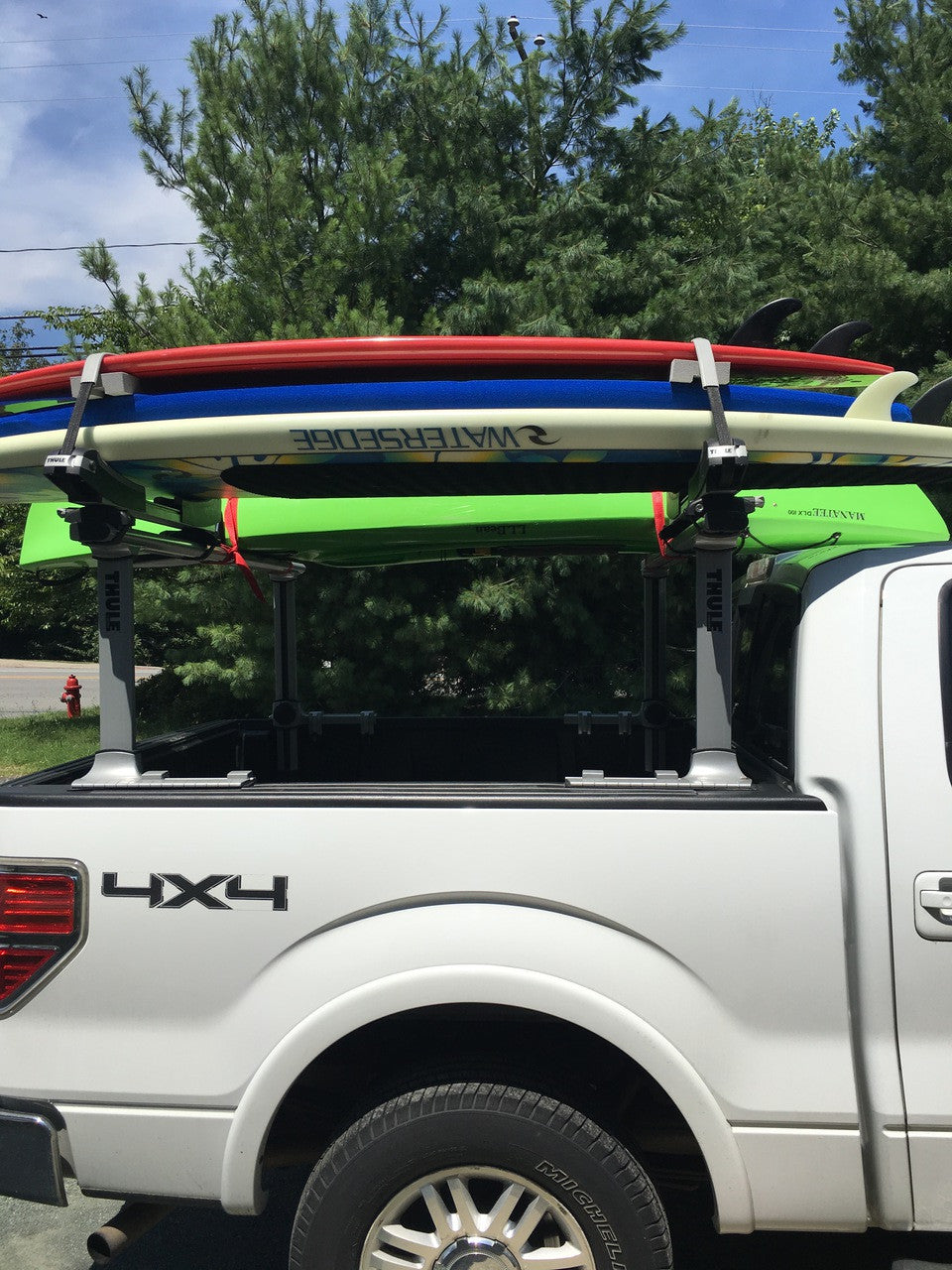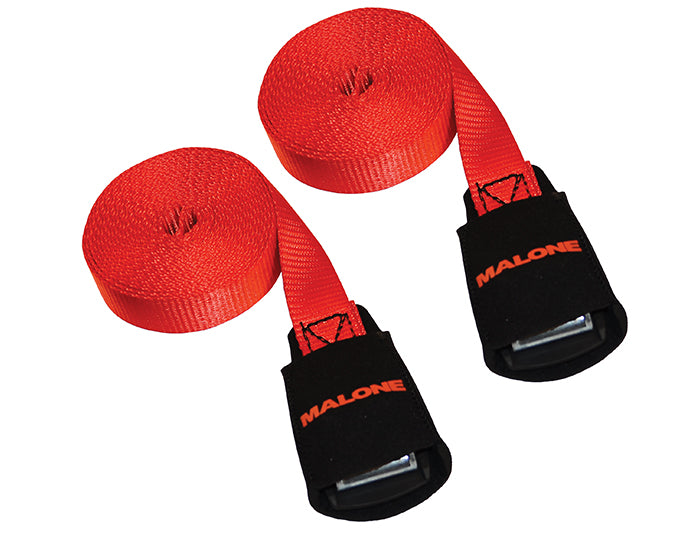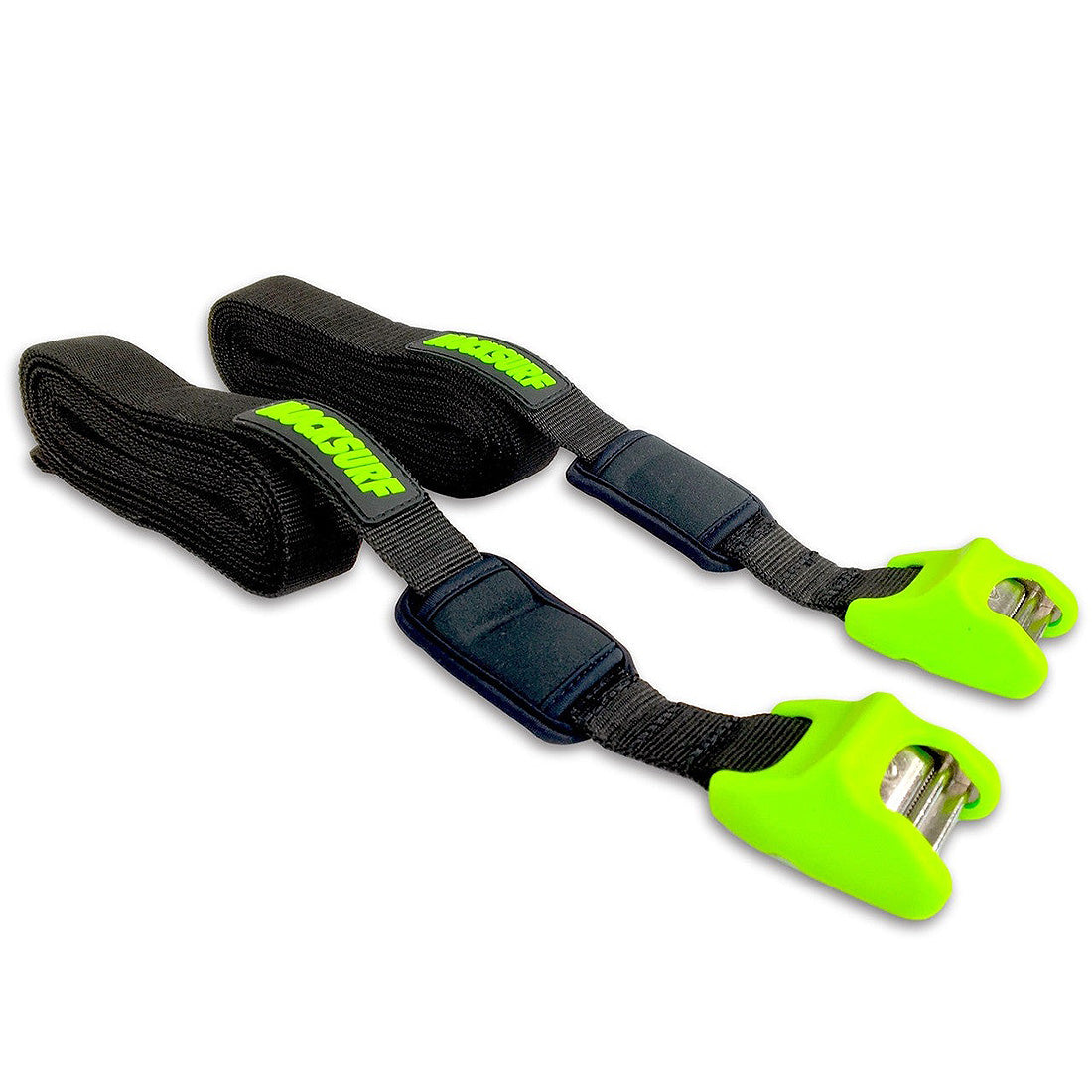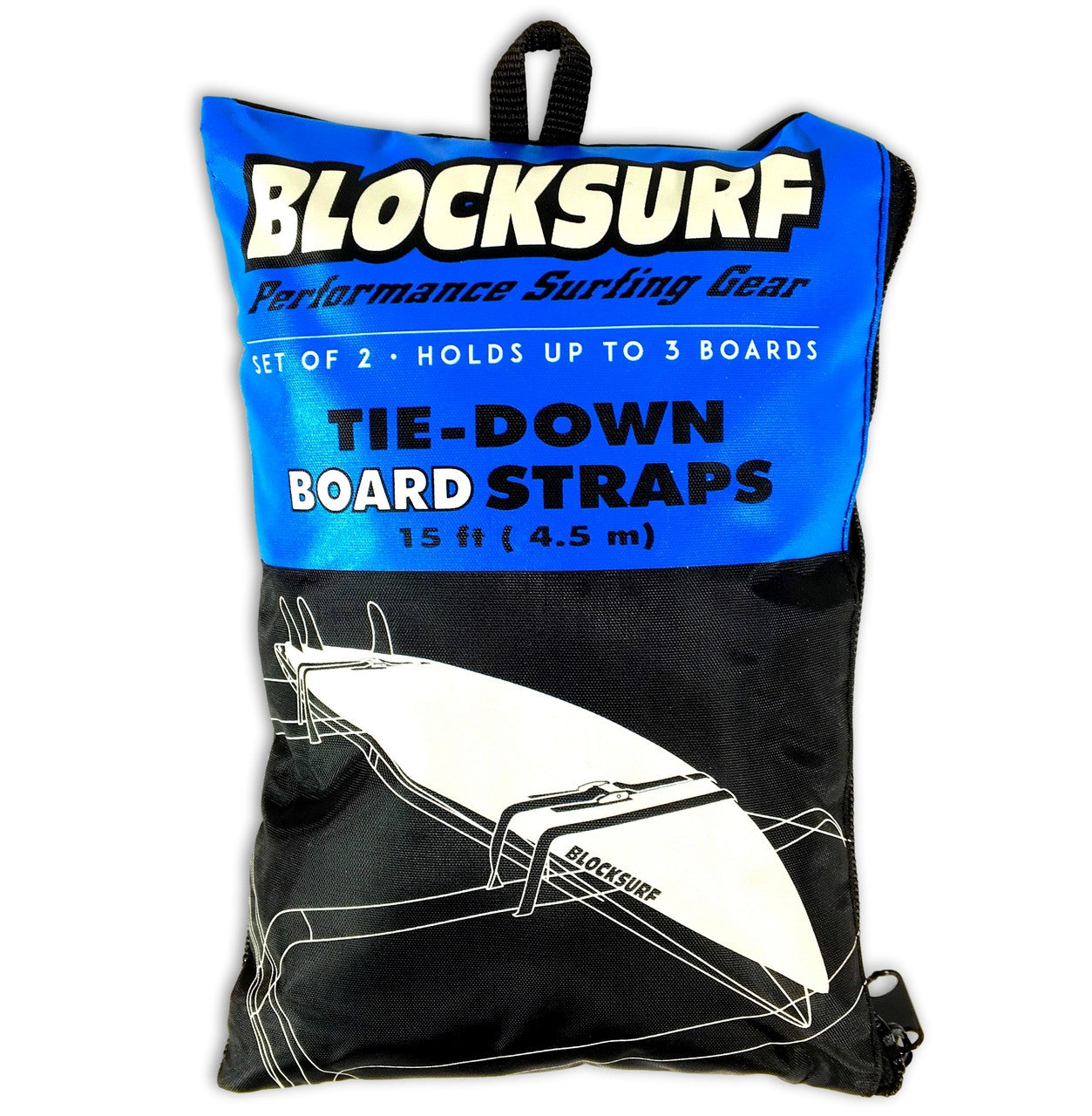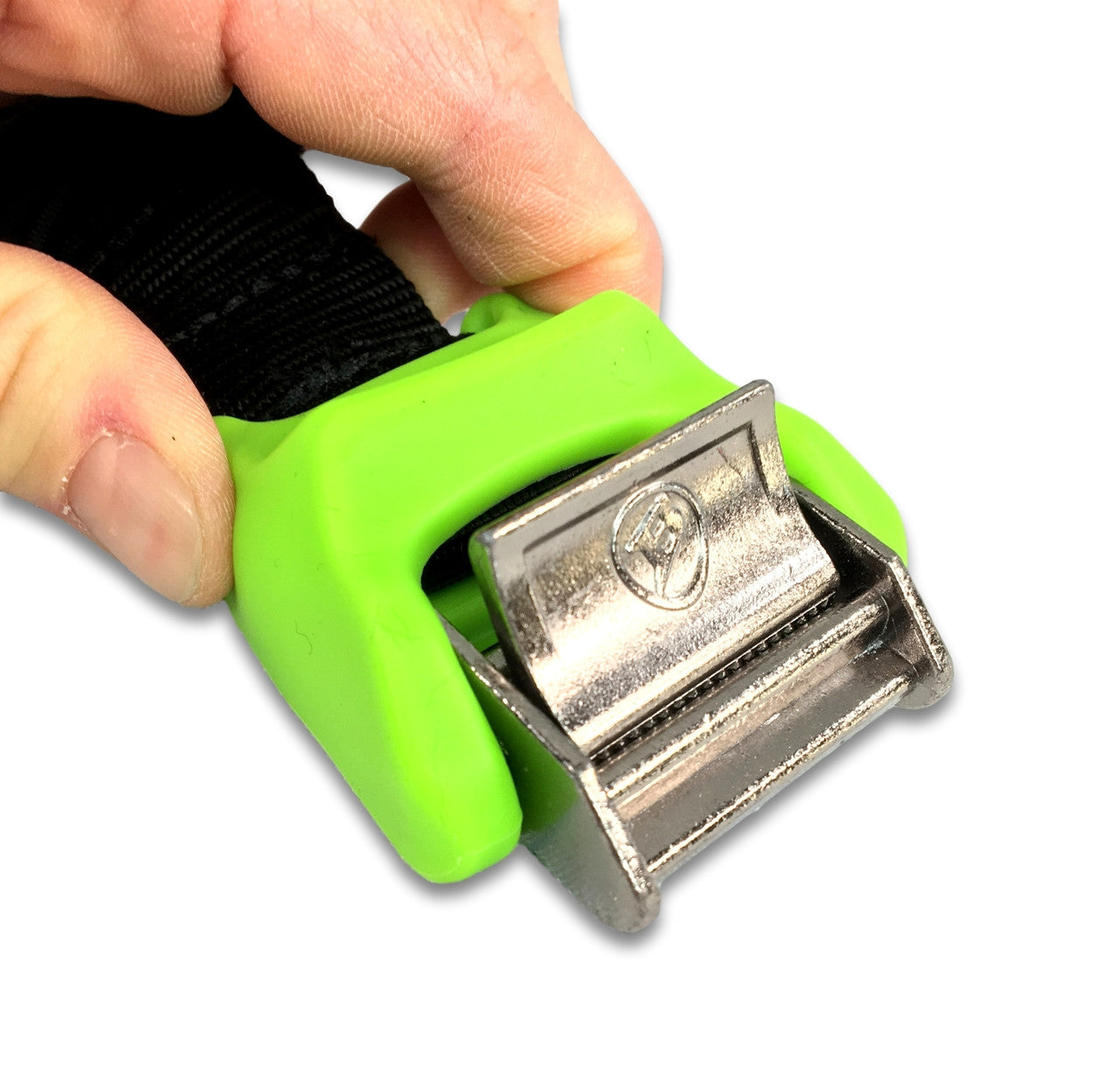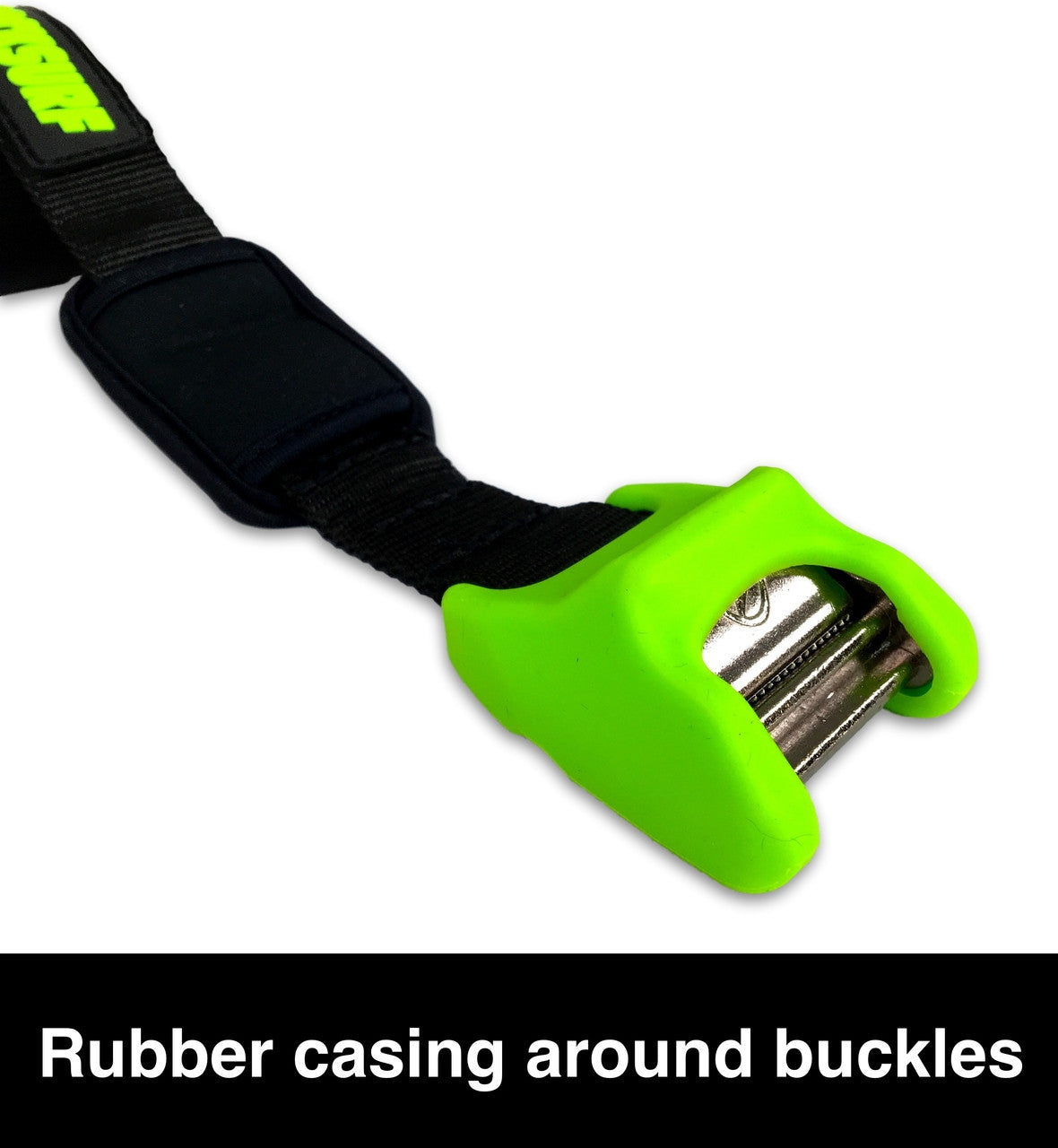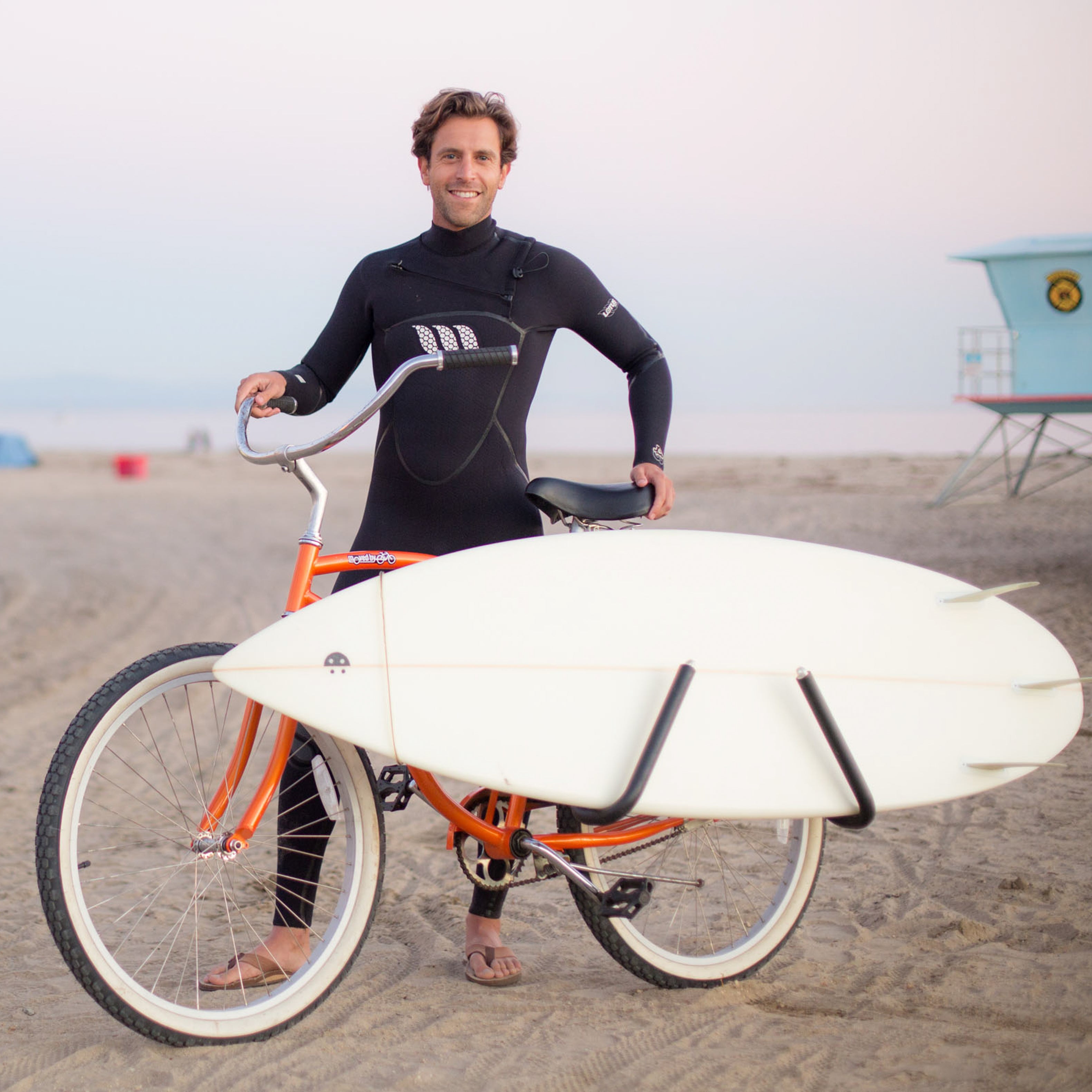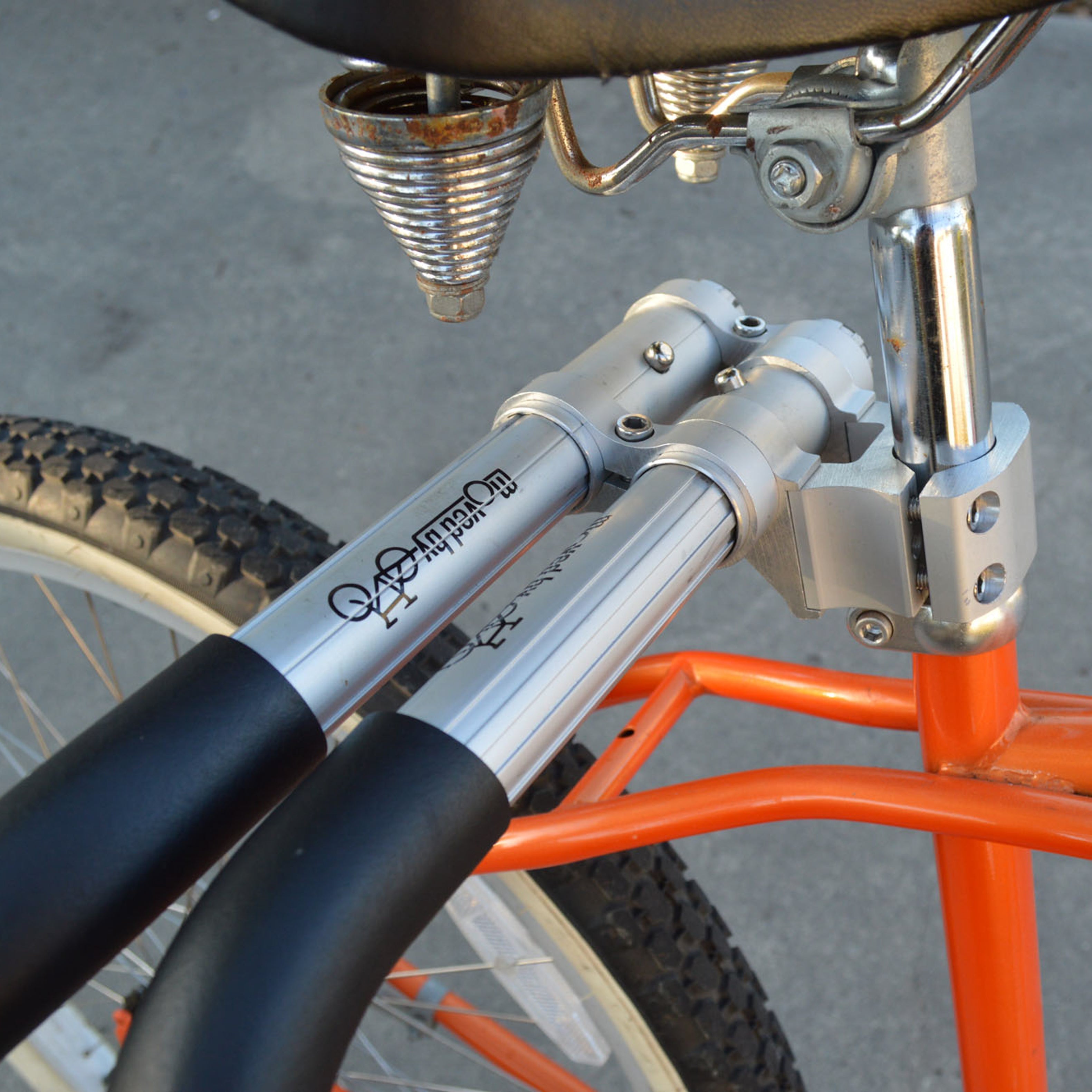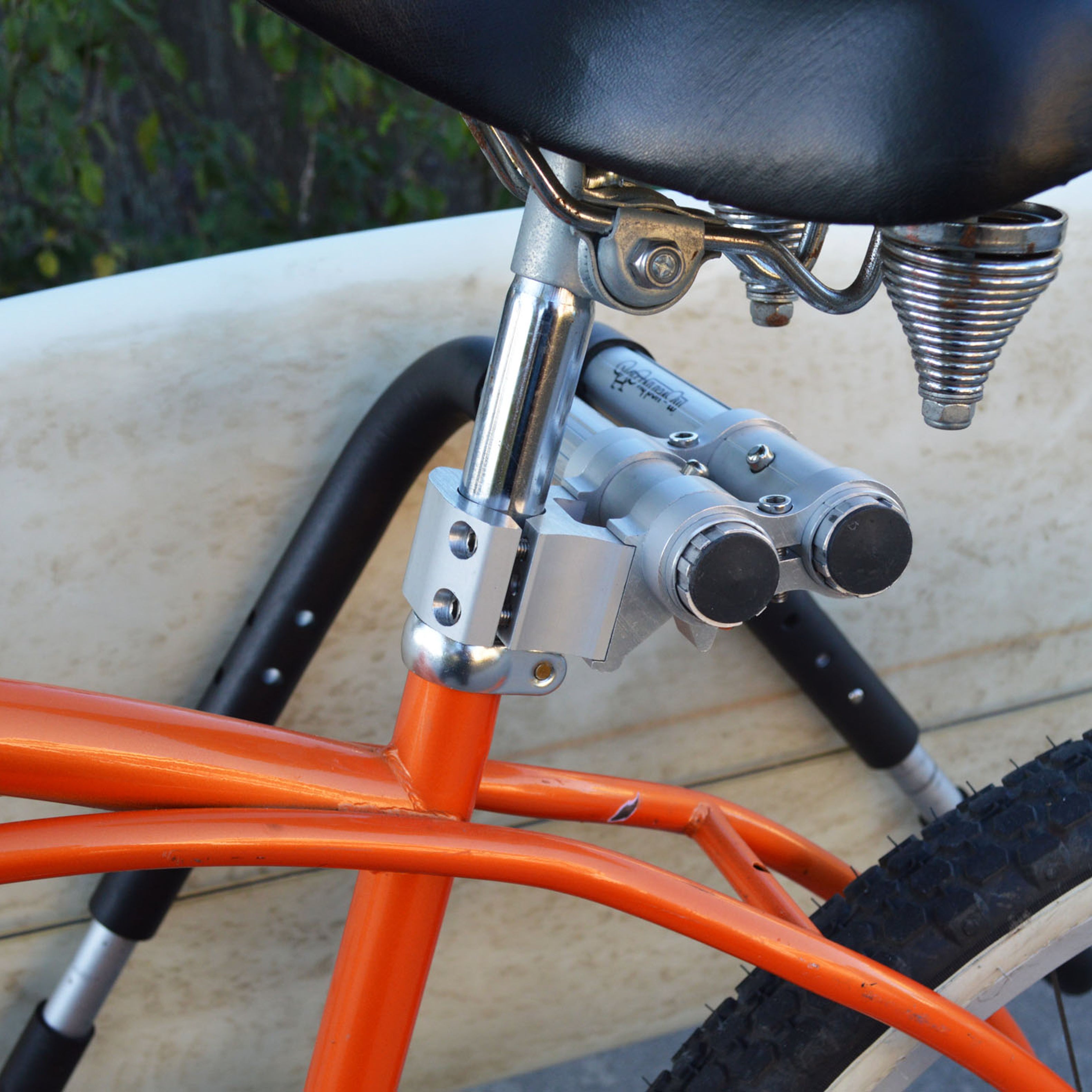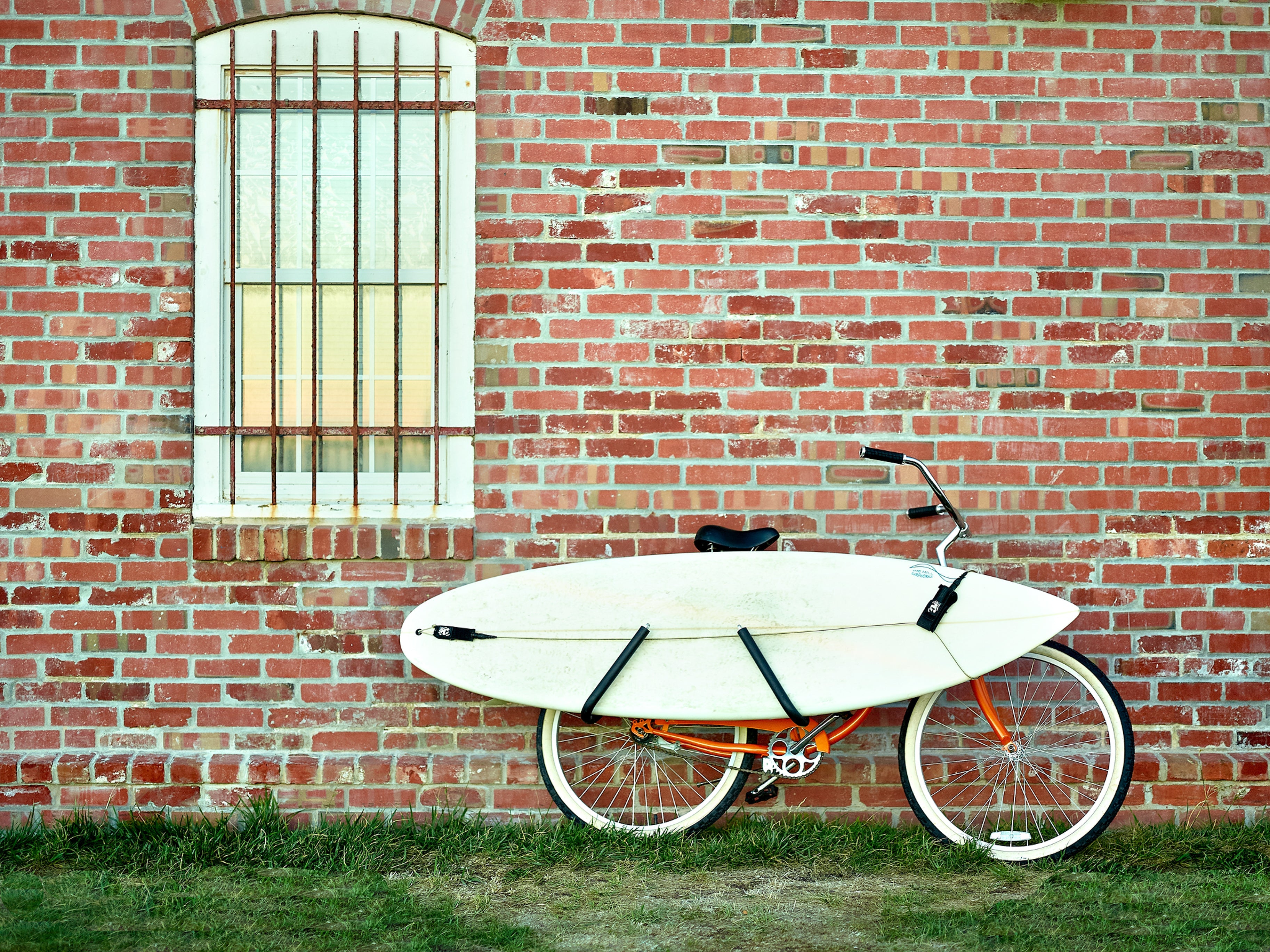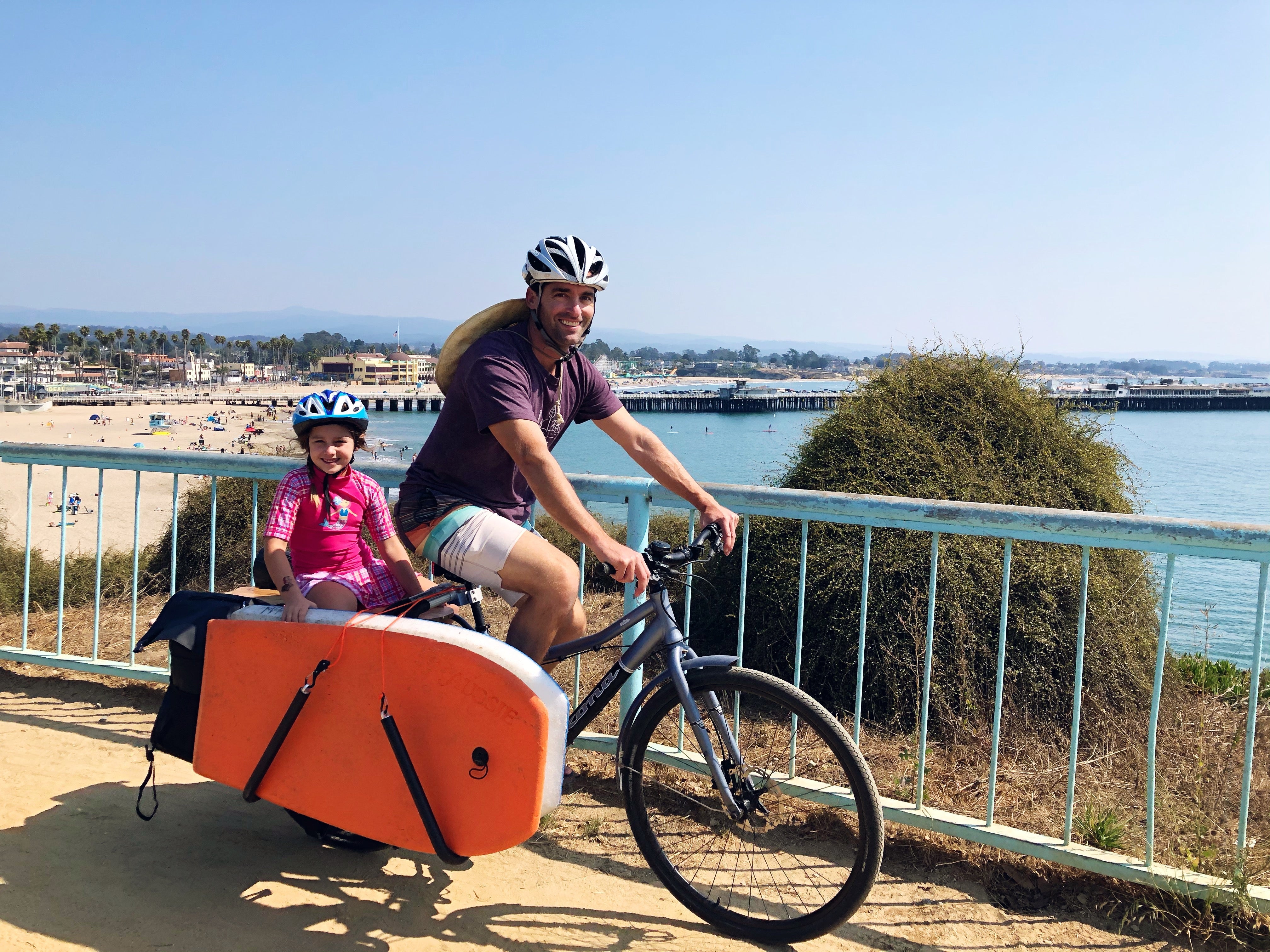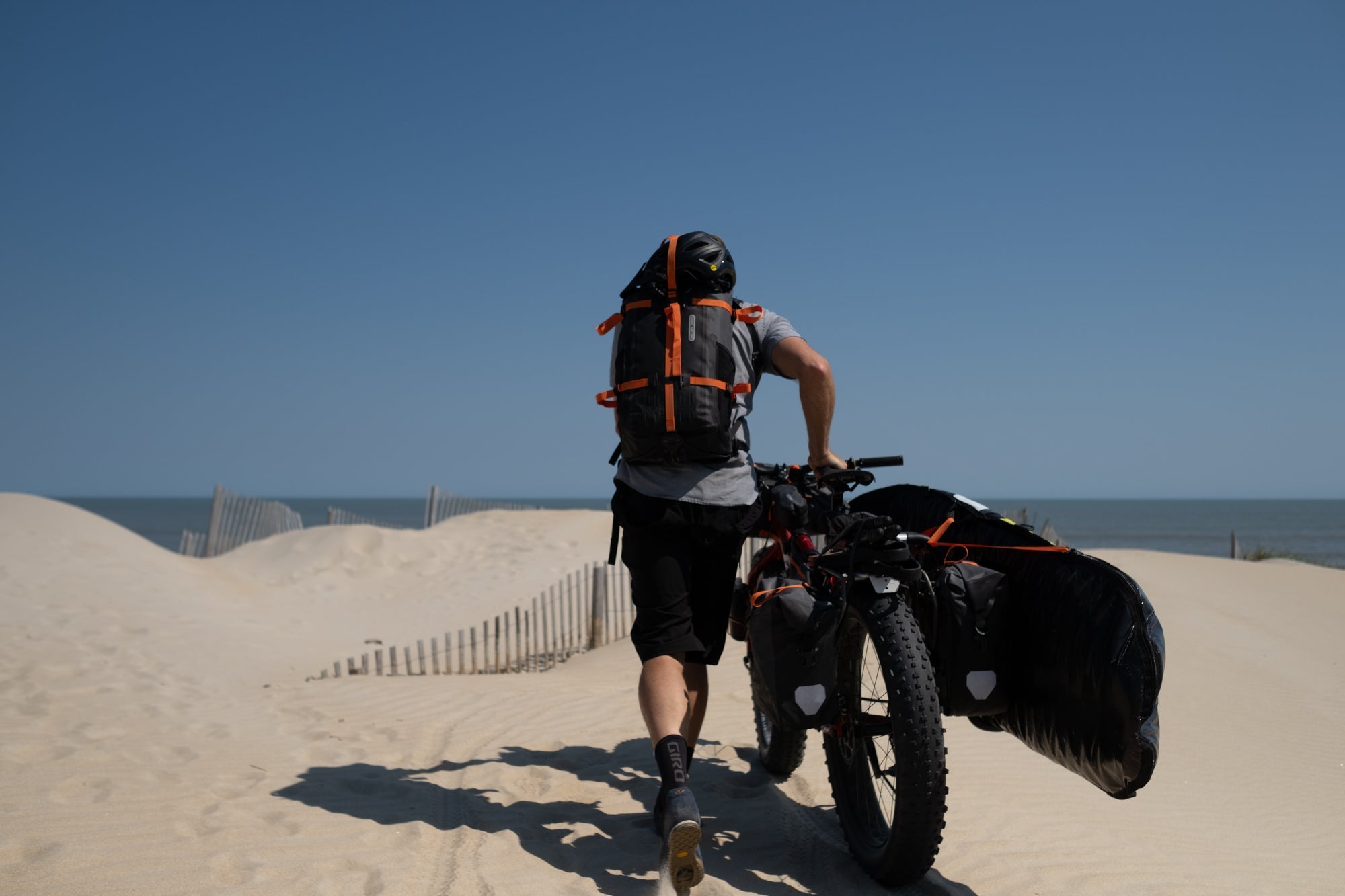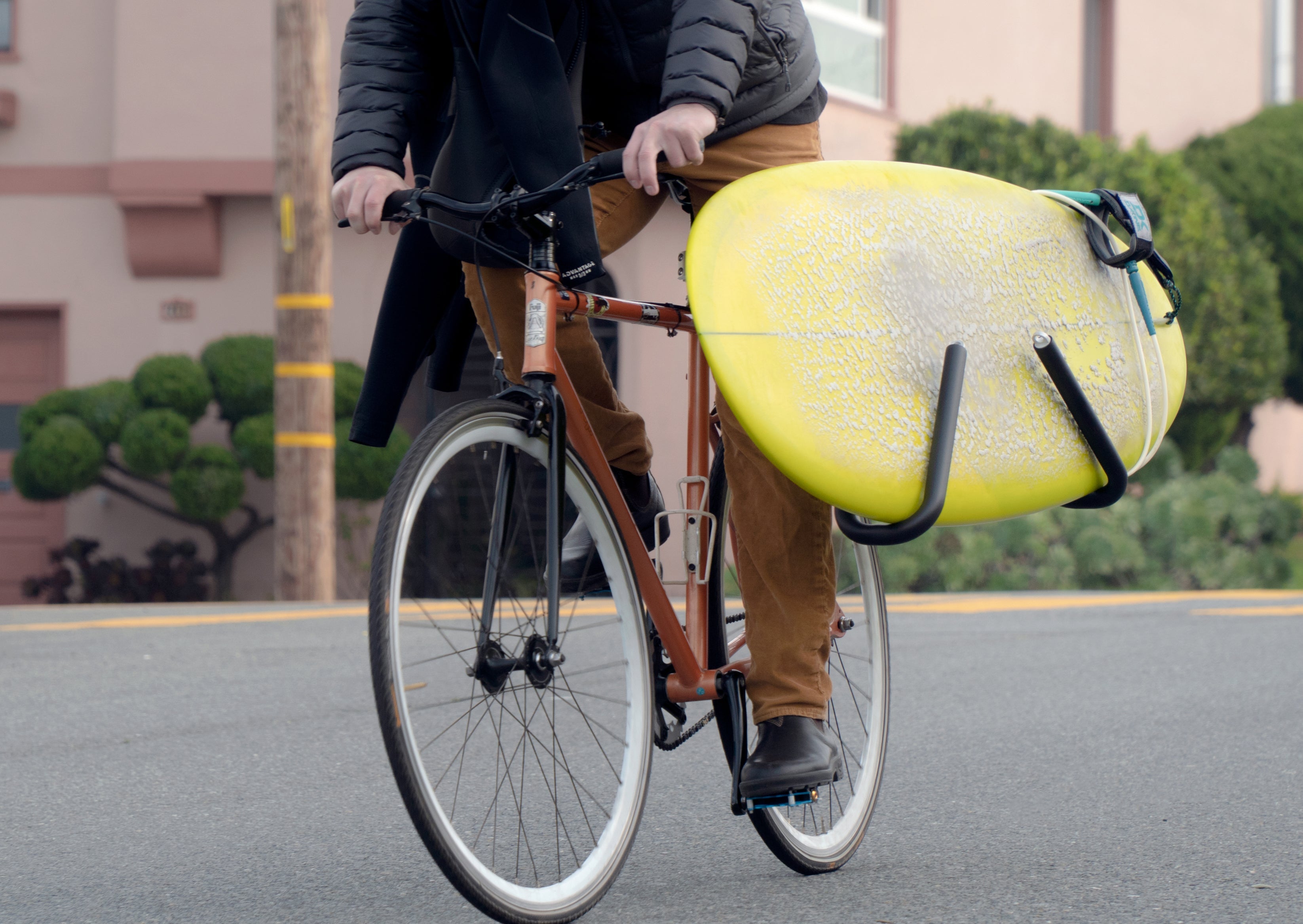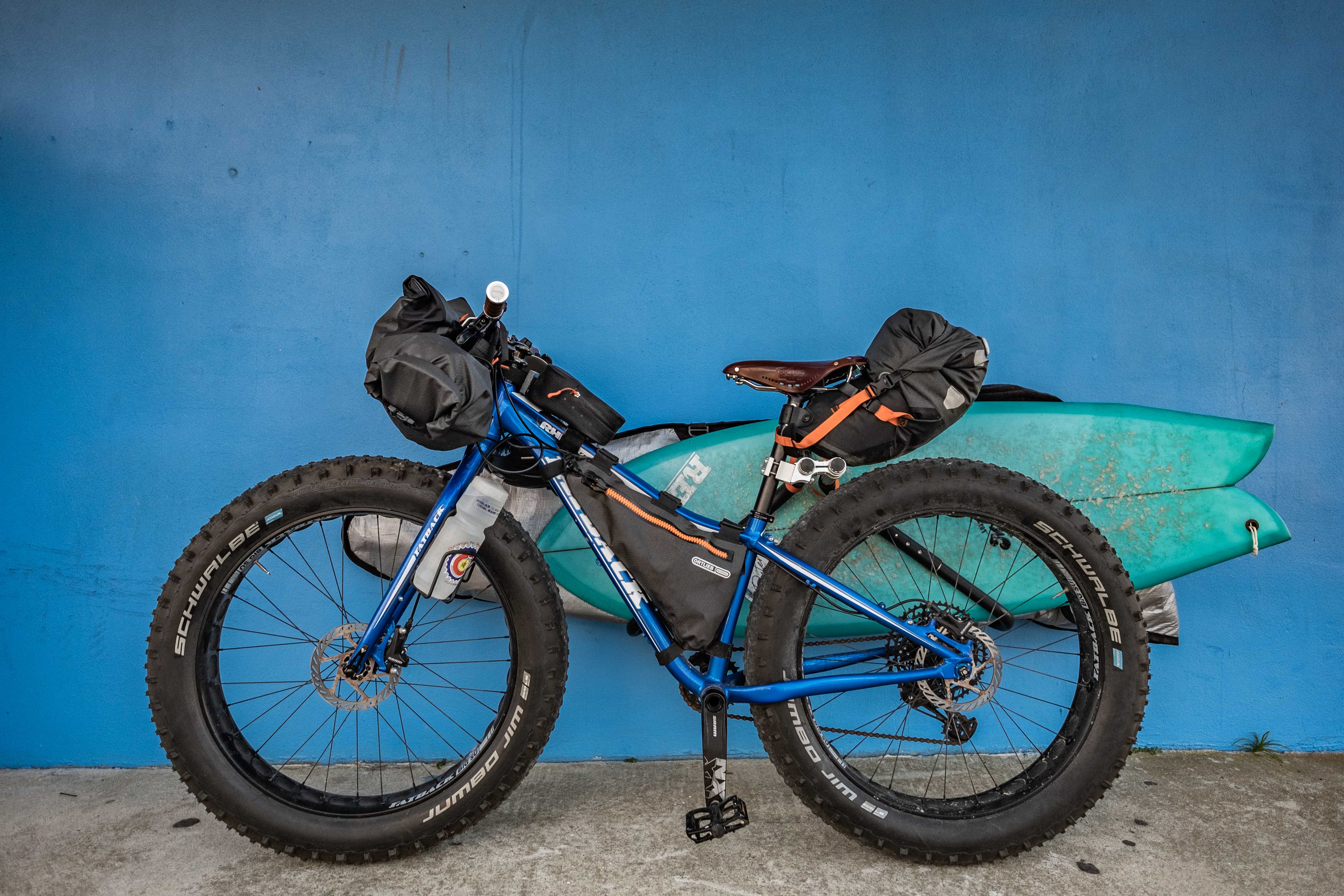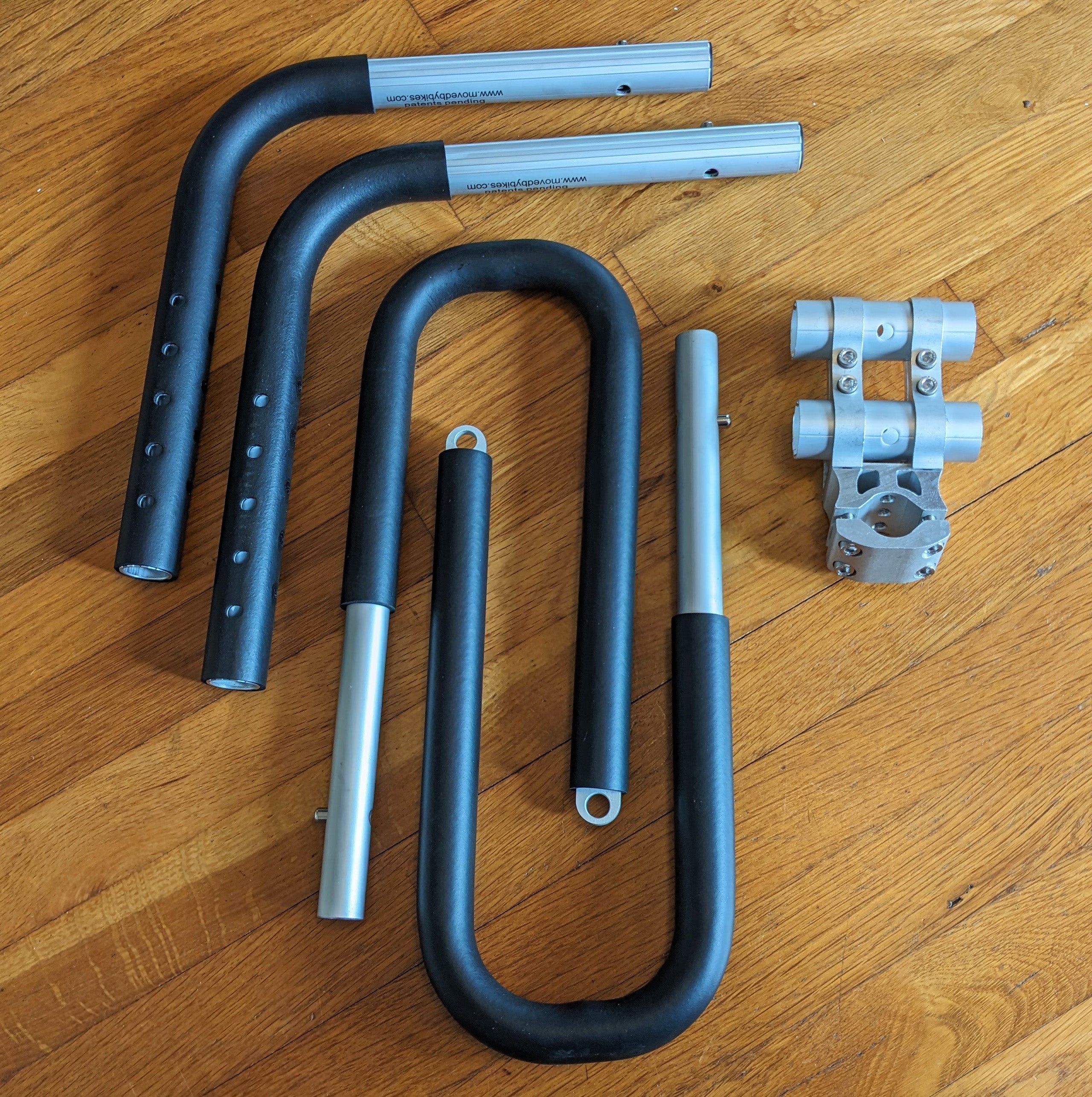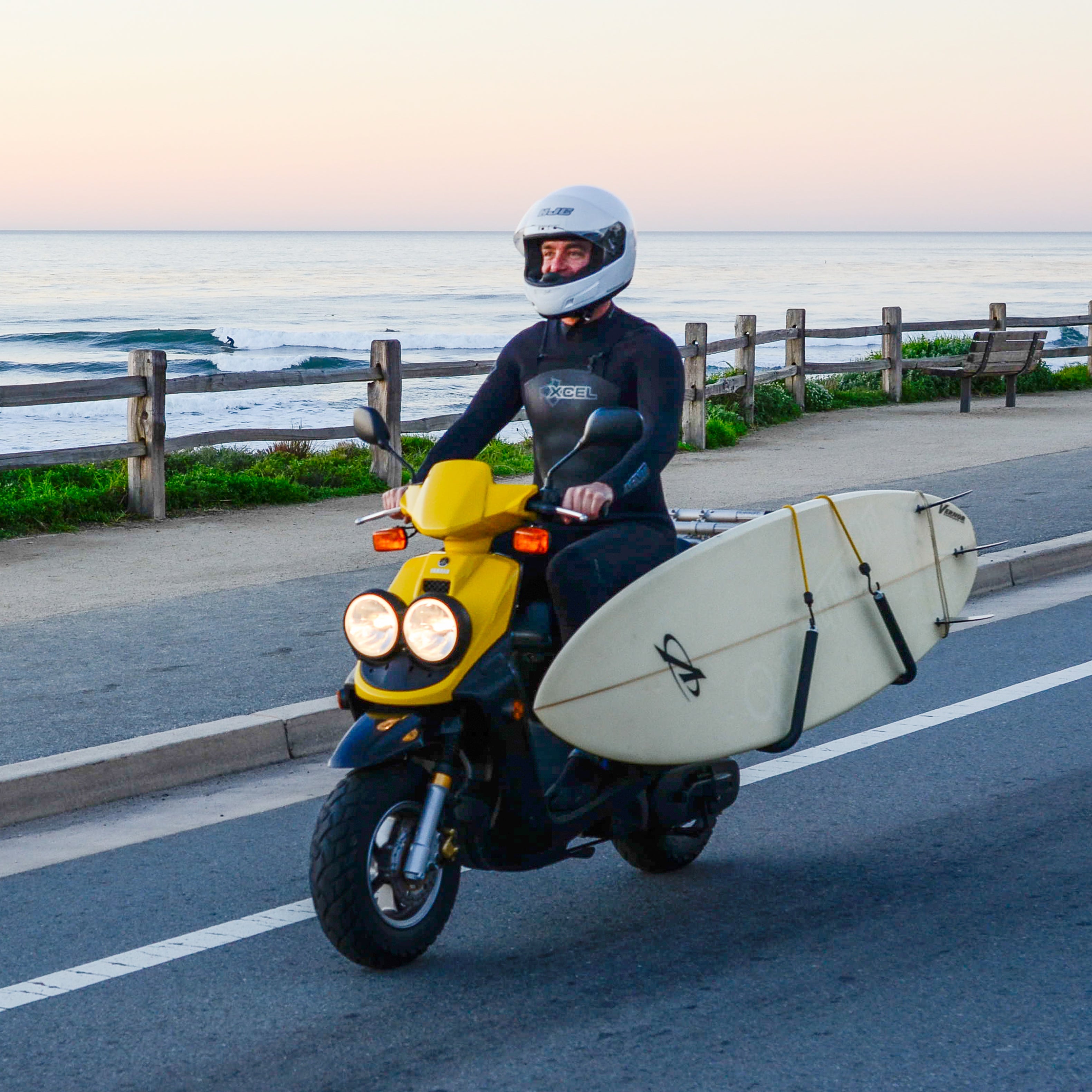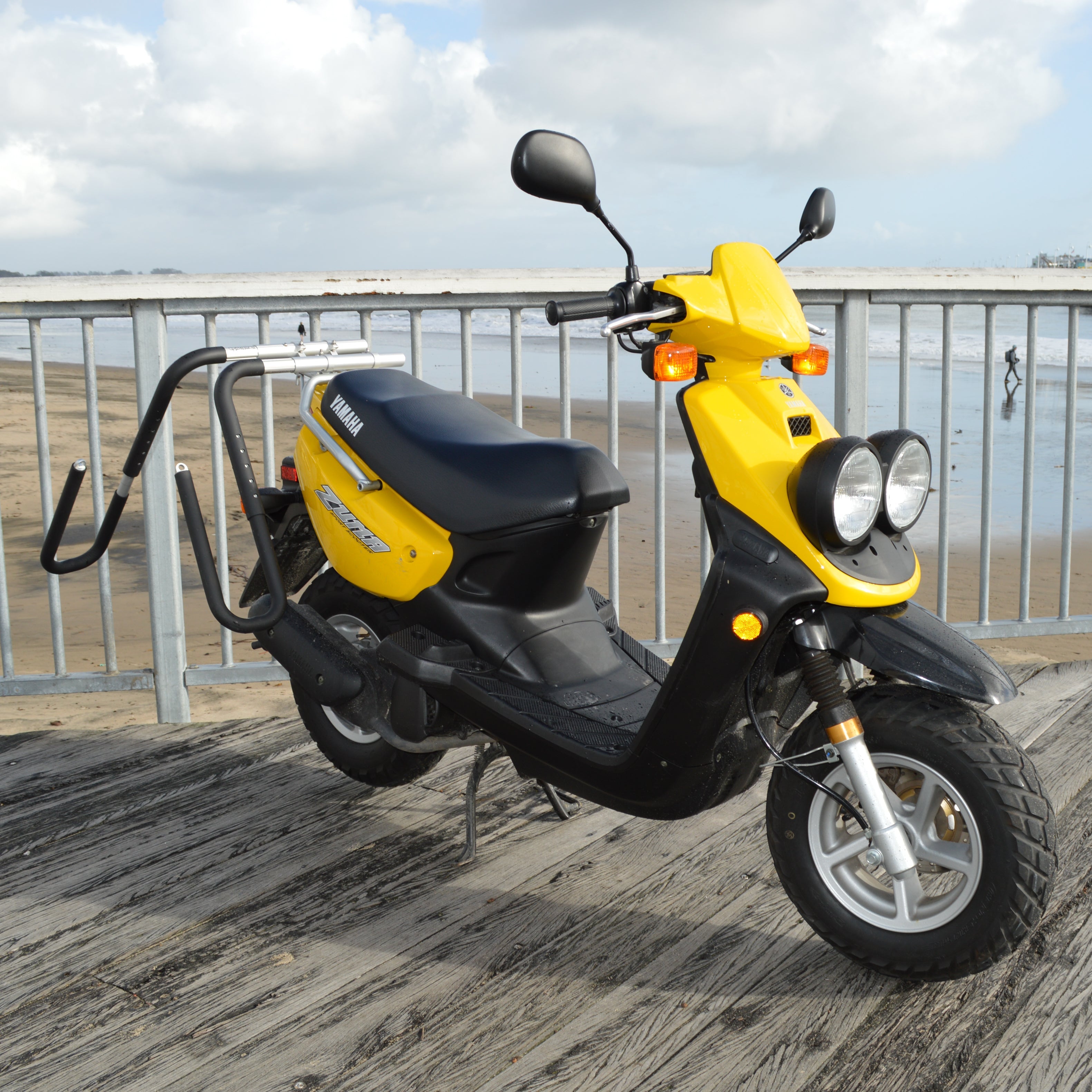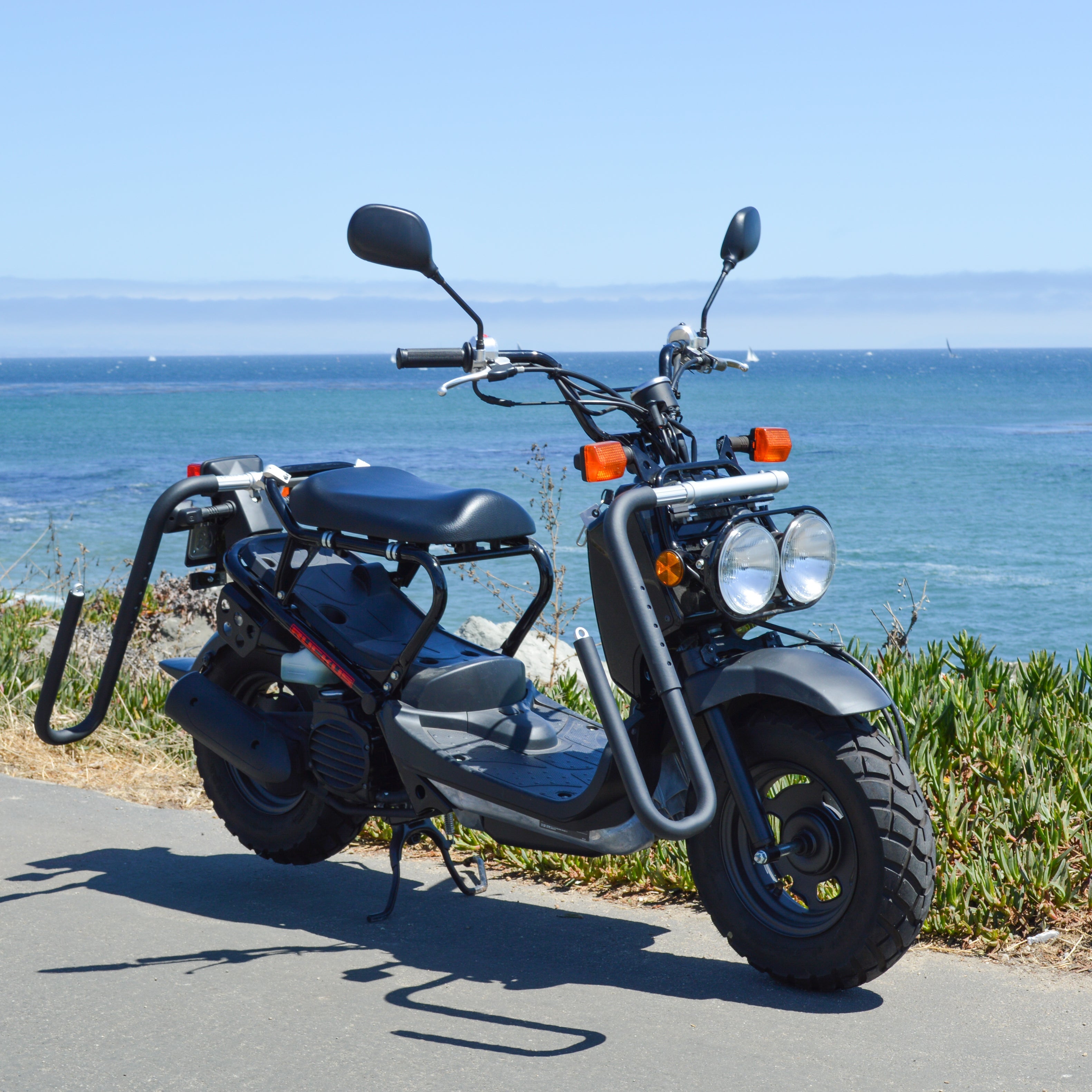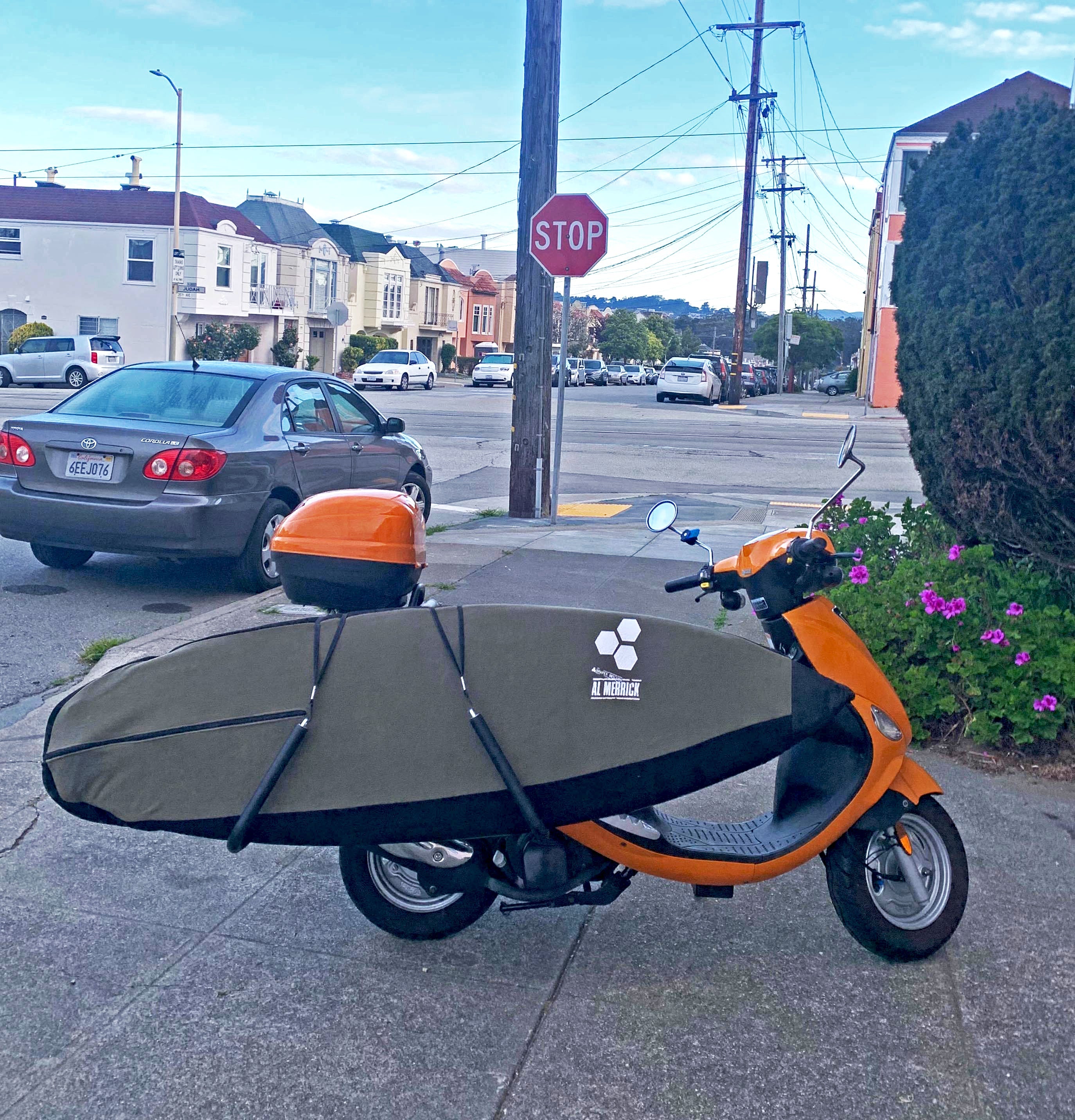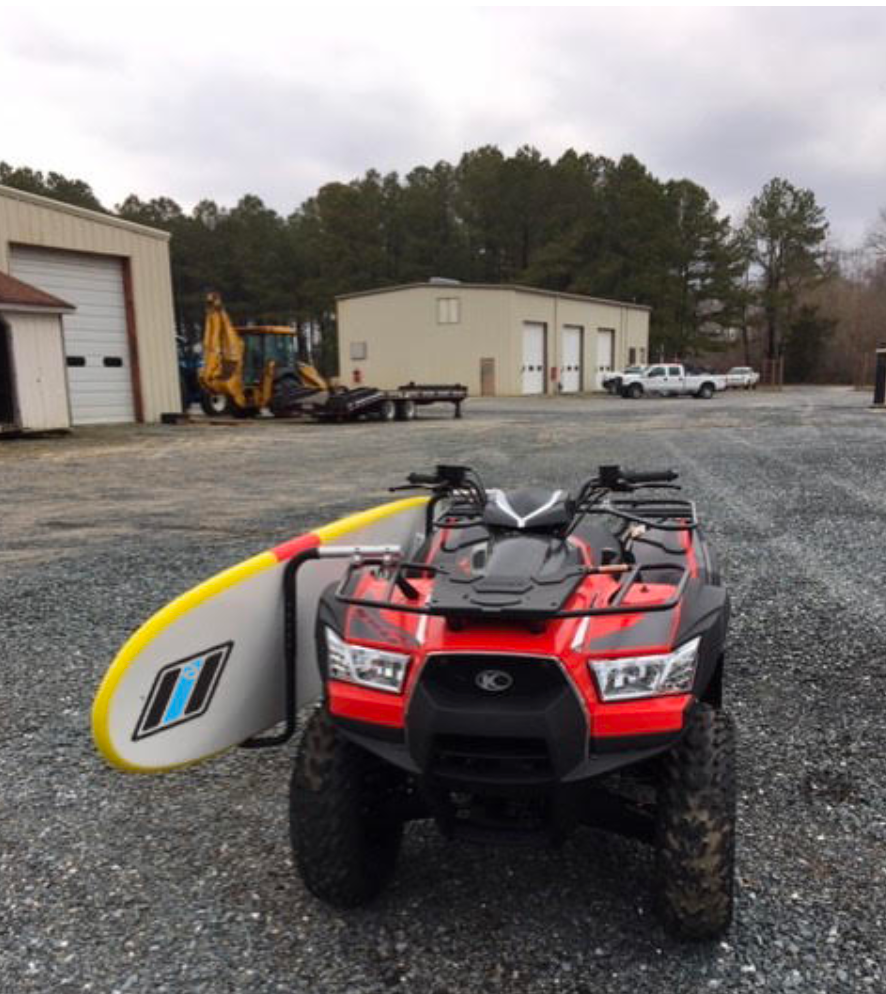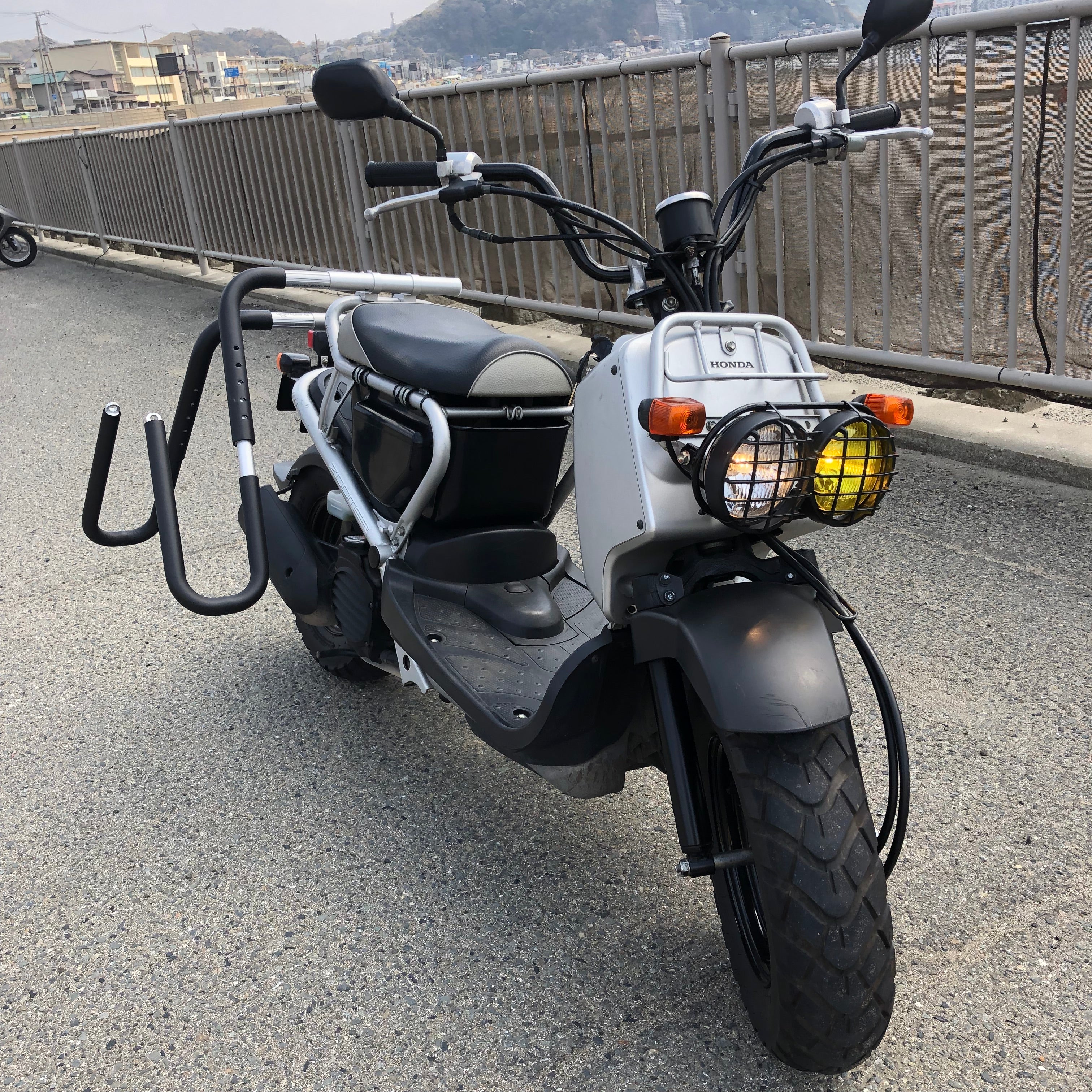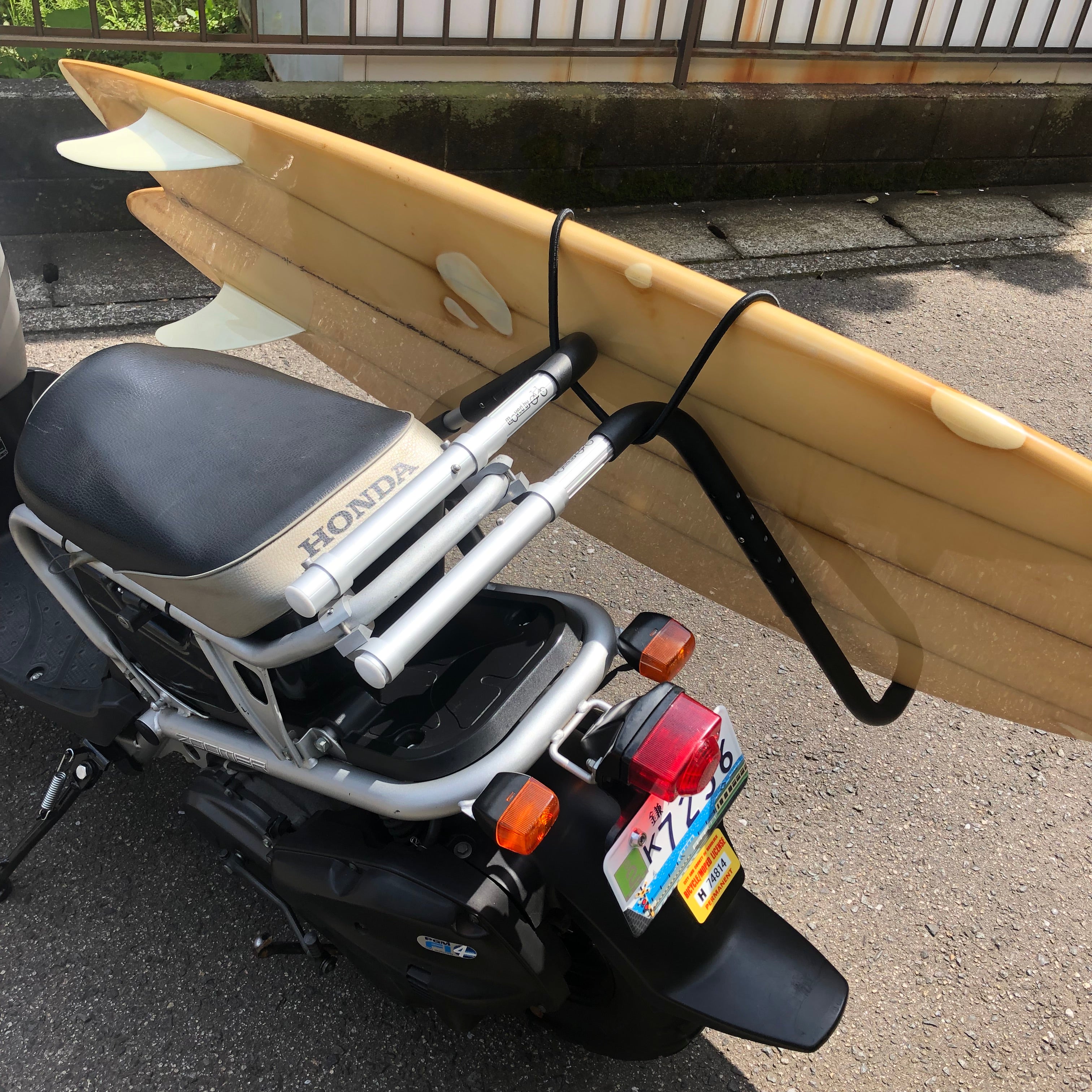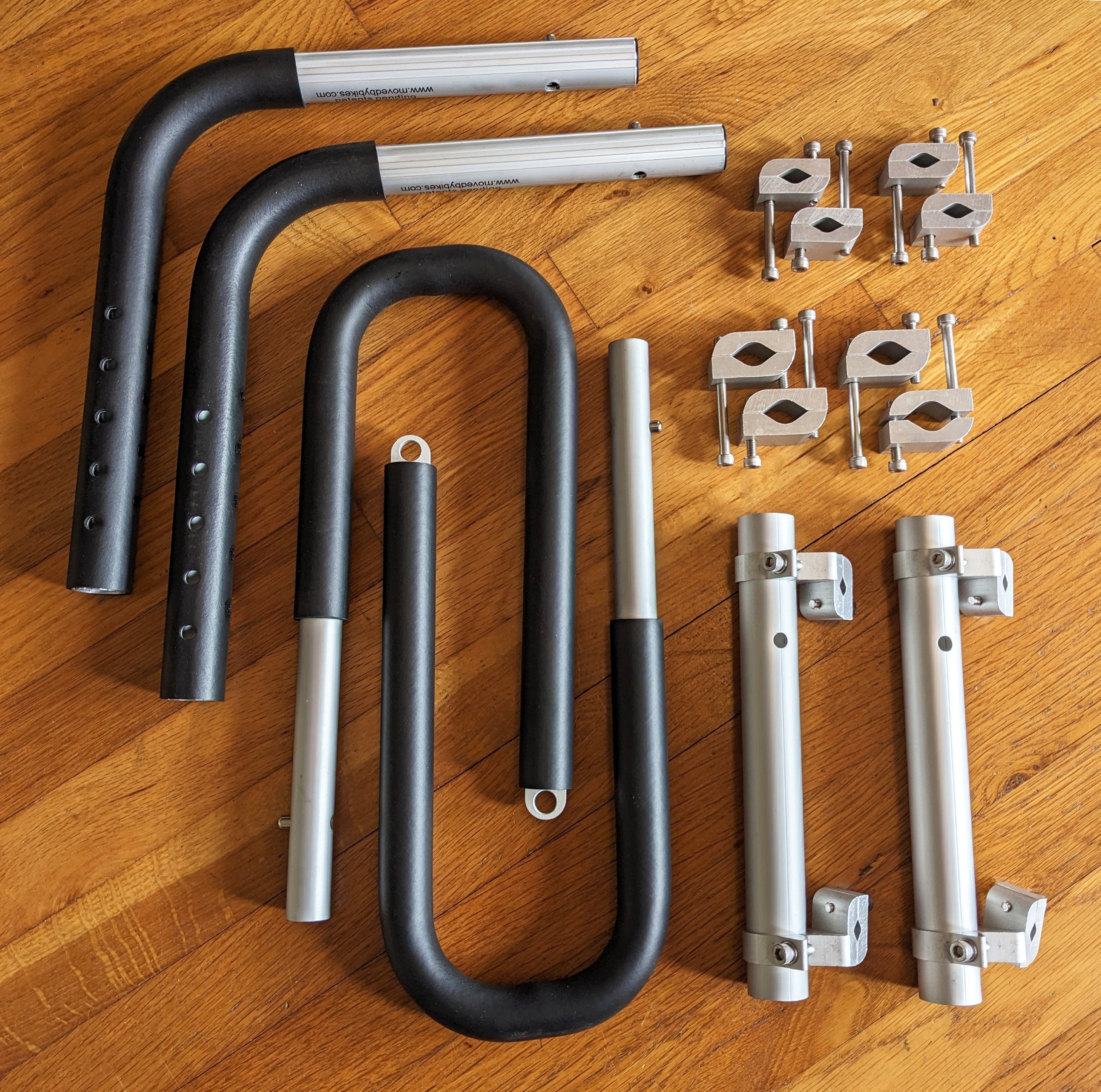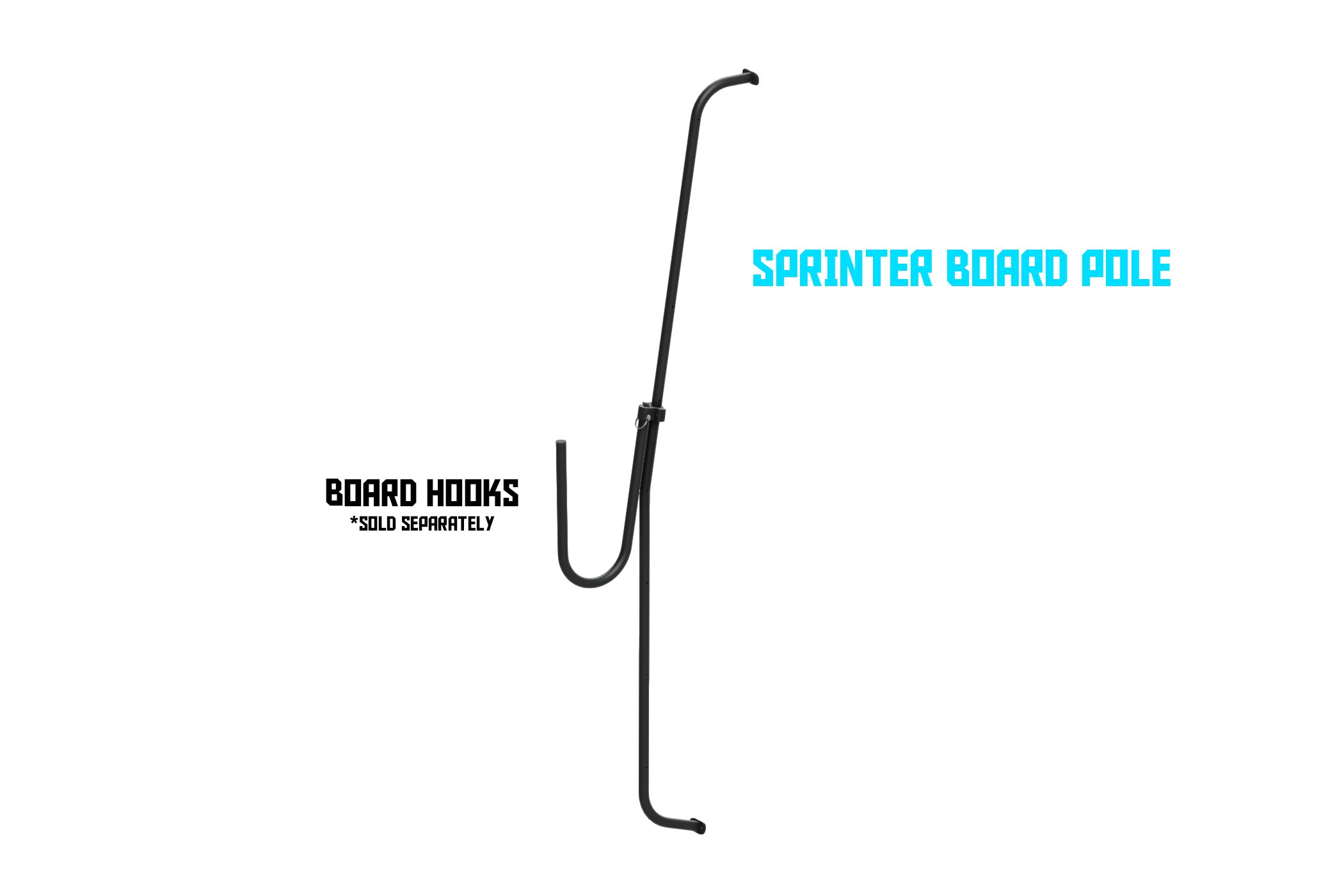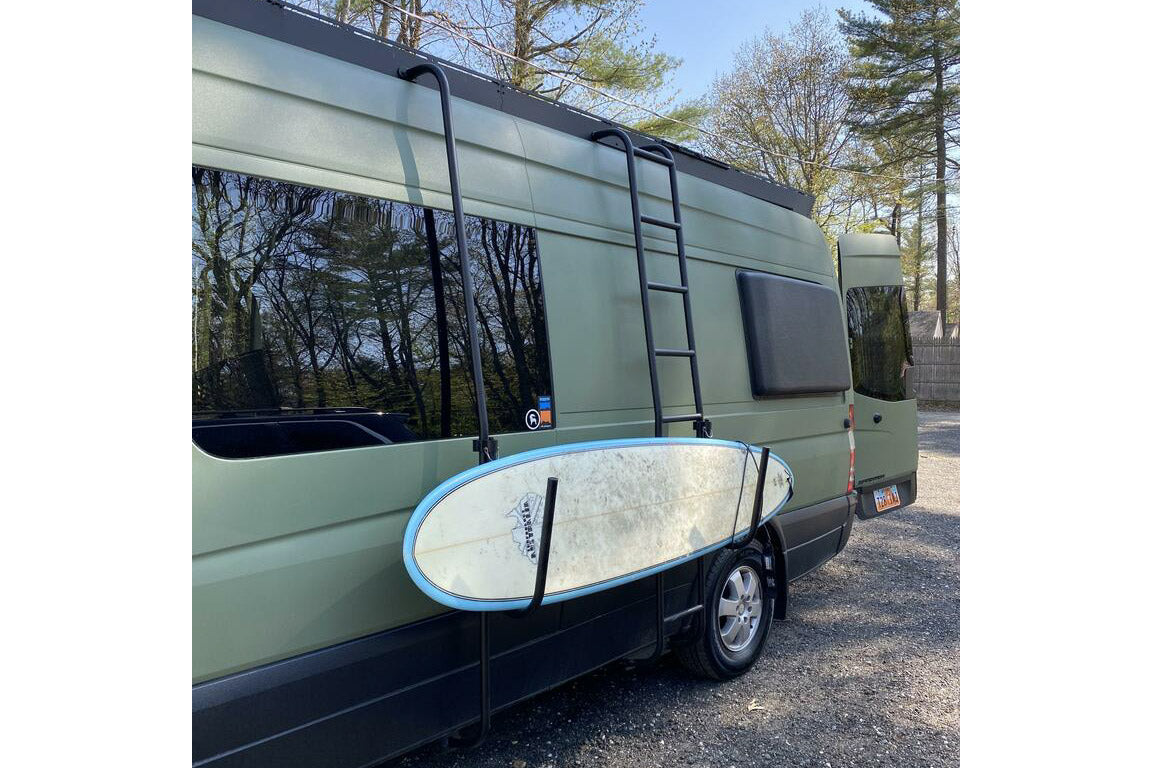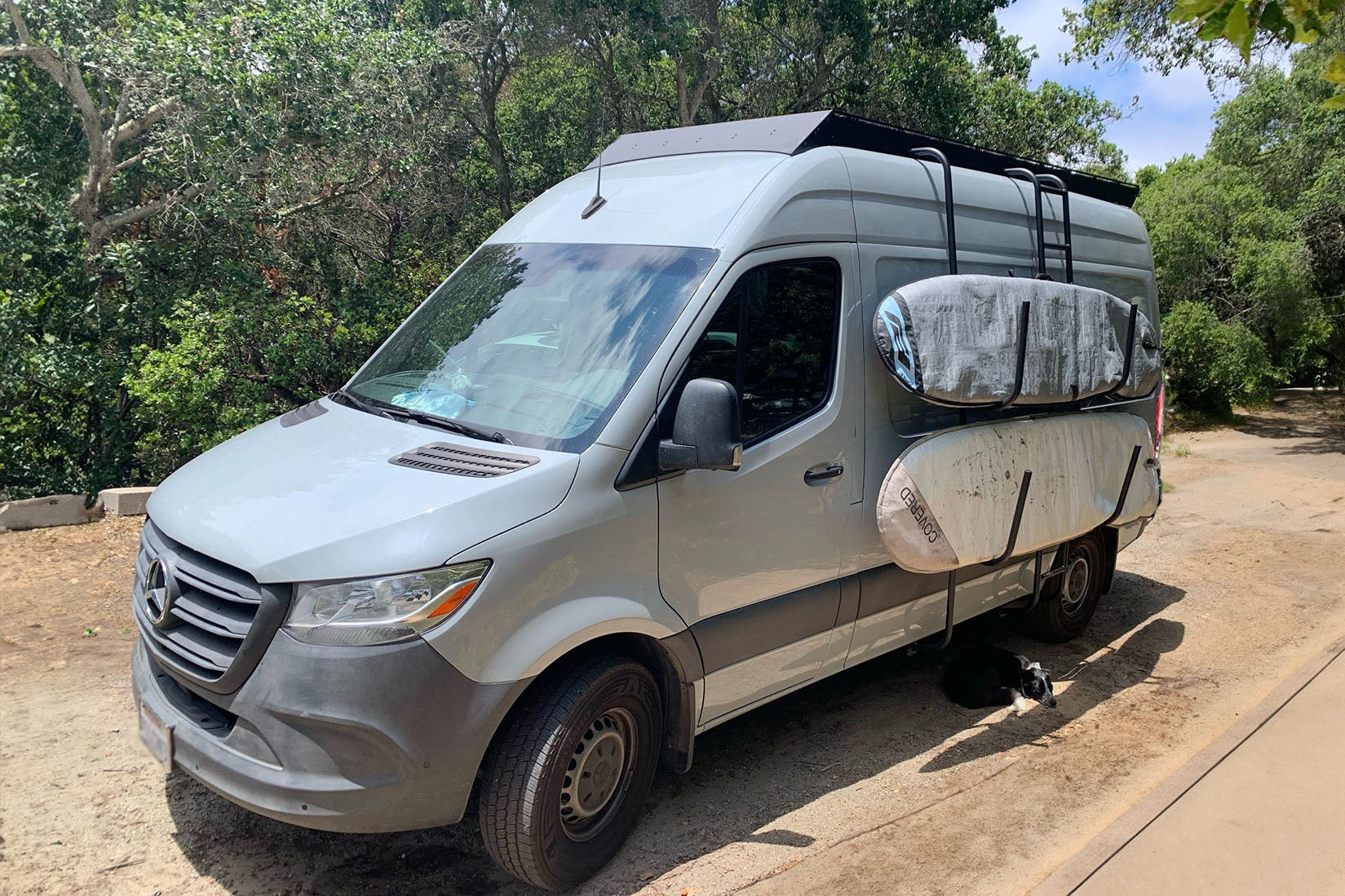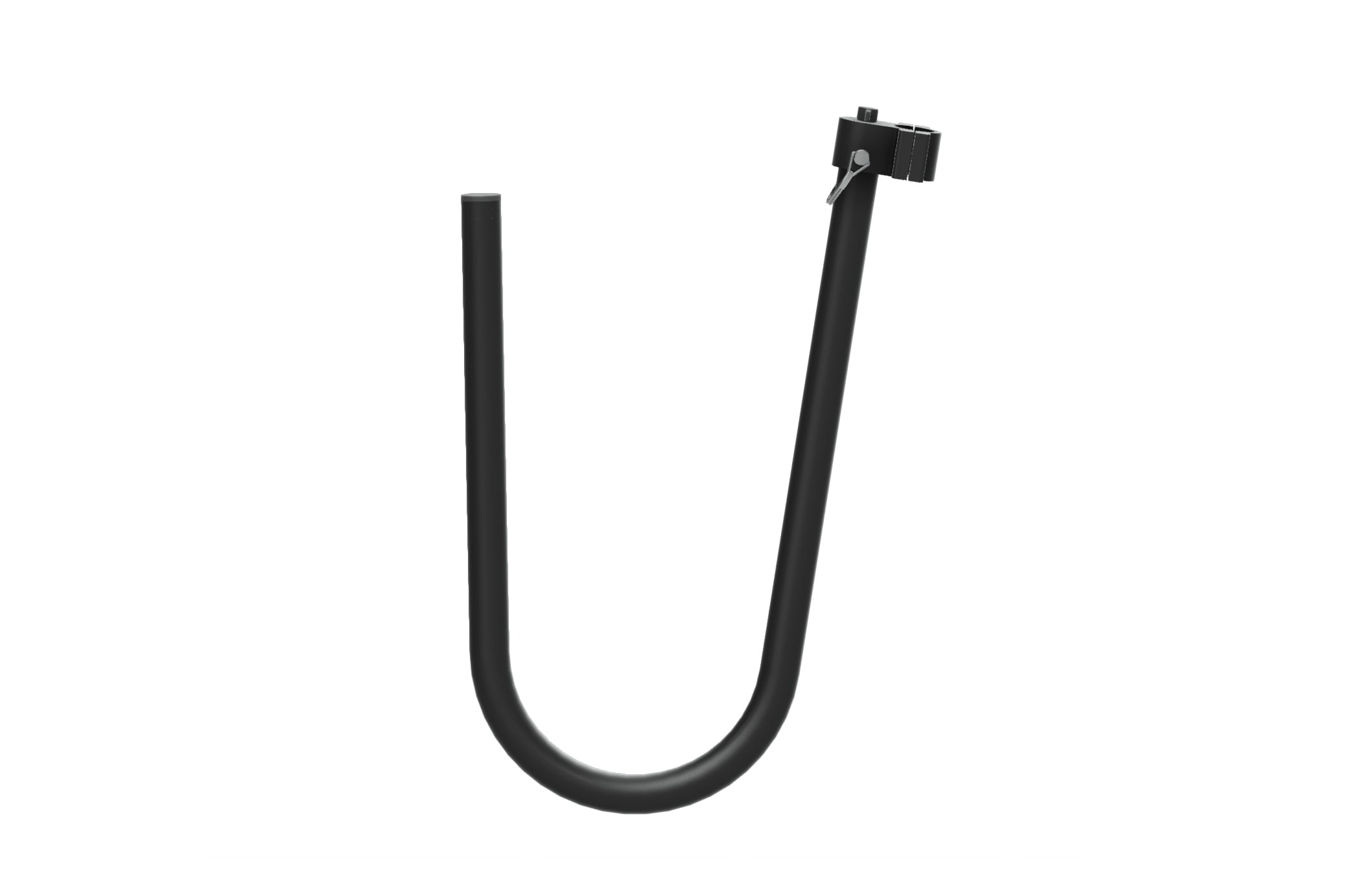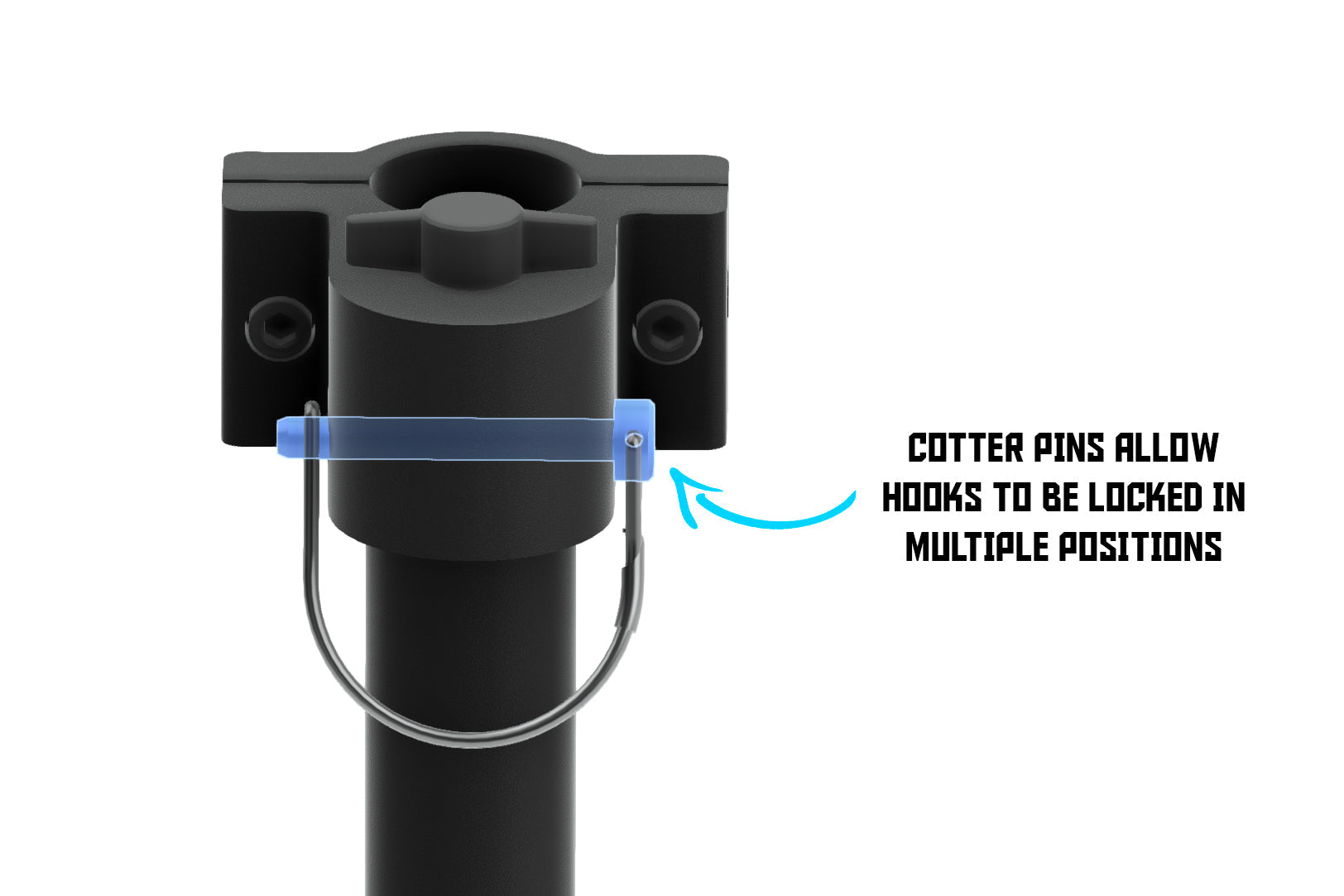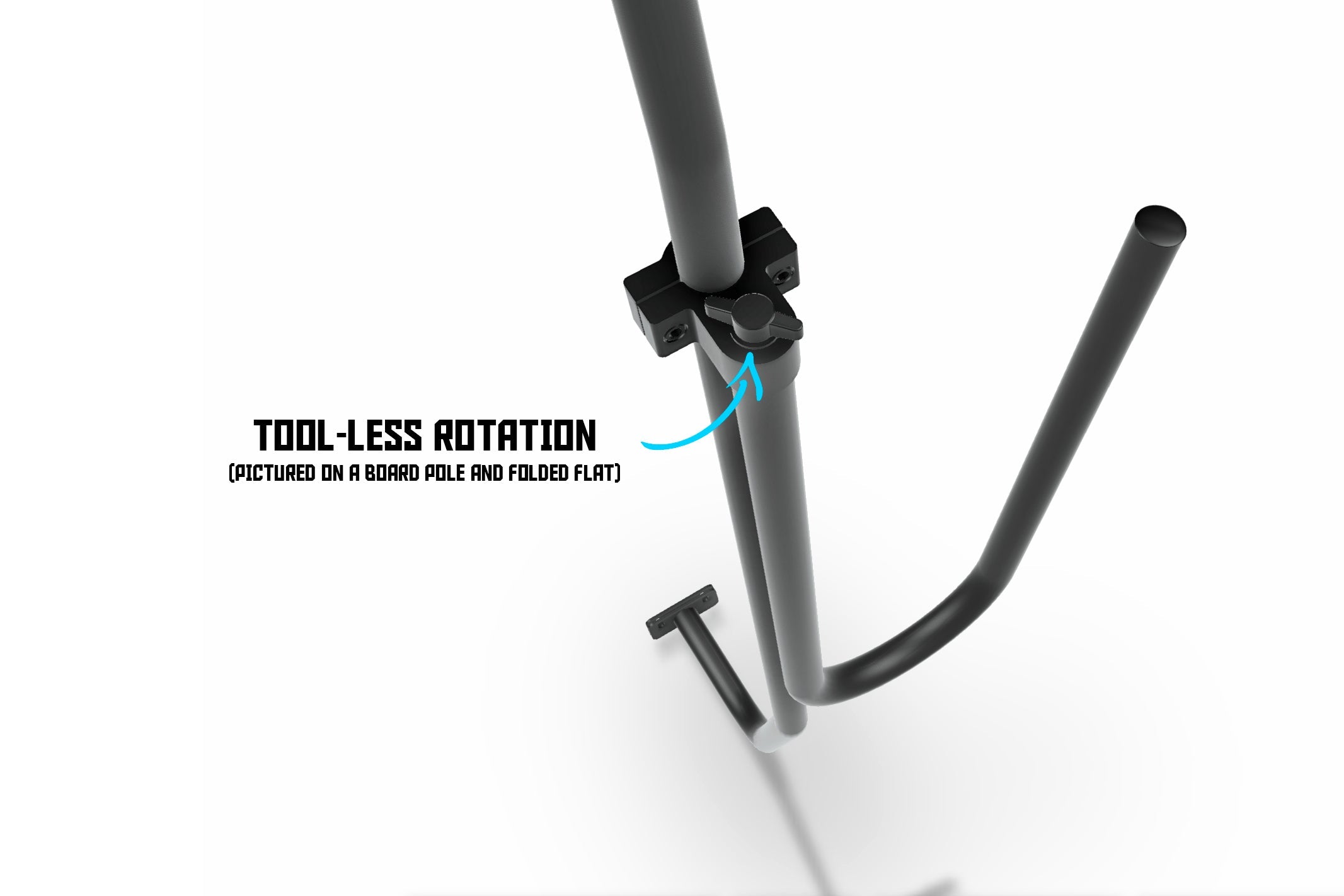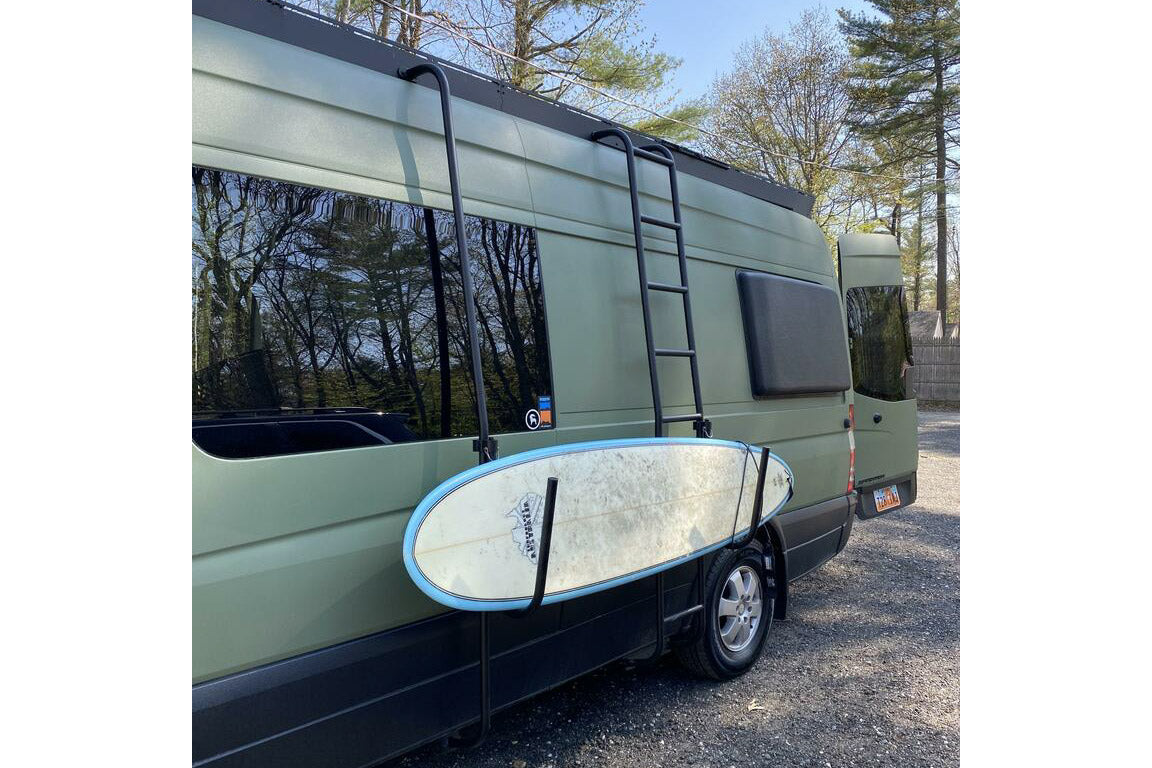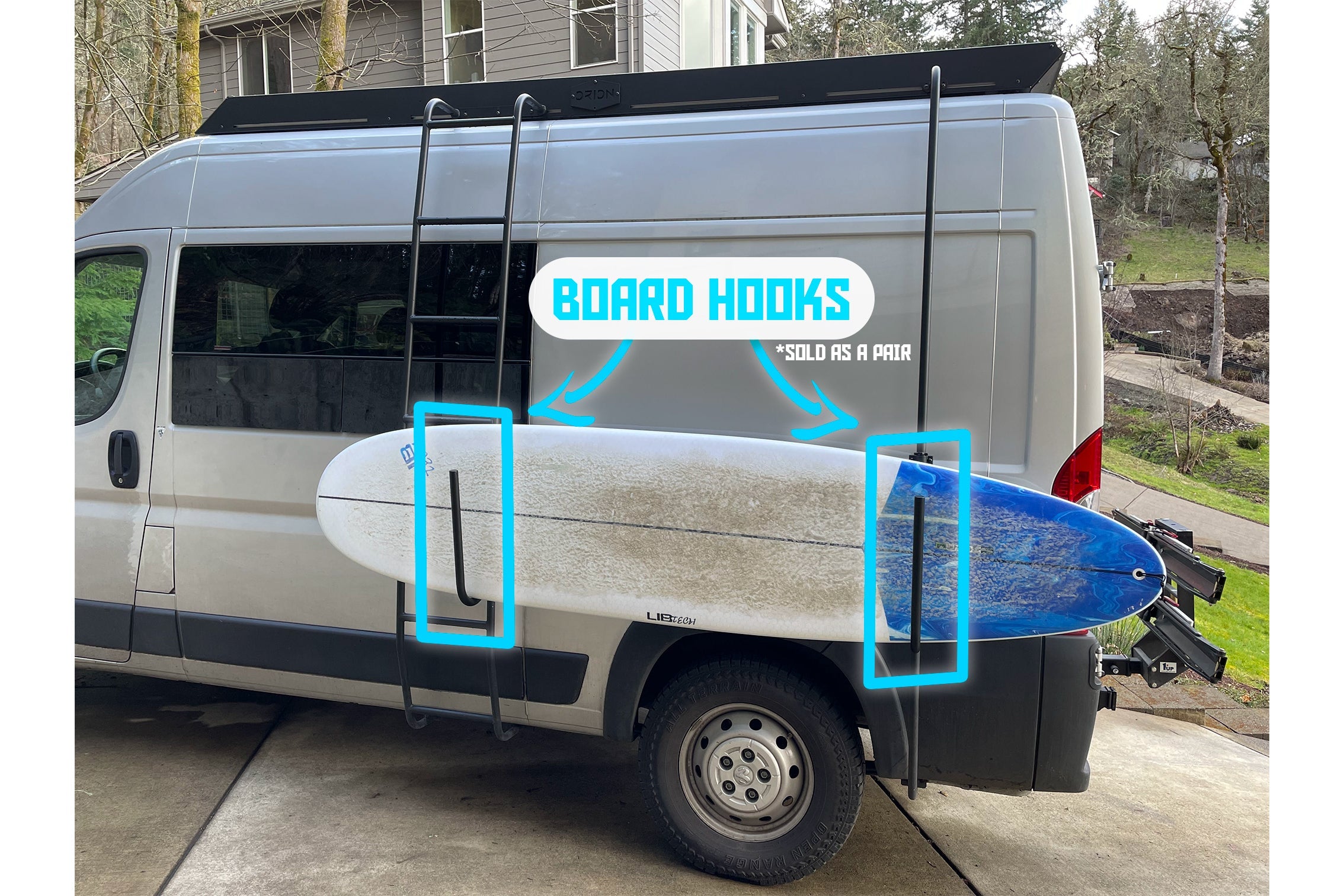Vehicle Surfboard Storage
Traveling with Surfboards | How to Choose and Install a Surfboard Car Roof Rack
The swell is about to hit and you’ve waxed your surfboards, screwed in your surfboard fins, strapped up your surfboard leash, maybe grabbed your wetsuit, and are ready to hit the waves. The only thing you need to do is get your surfboards from your house to the break. For most people, this means using a roof rack to strap your boards to the roof of your car. Seems simple – throw it on the roof, strap it up, and get going – but there are a number of finer points that you should know about different roof racks and their use and setup to optimize the safety and protection of your boards while they’re strapped to the roof of your car as you drive in search of the perfect wave.
Choosing a Surfboard Roof Rack for Your Car
Not surprisingly, there are lots of different types of surfboard roof racks to choose from, and also not surprisingly, there are a variety of price points in the roof rack market. Some roof racks are very simple ($), while others are feature-rich ($$$). The challenge is finding what is best for you, your budget, your surfboards and your vehicle. The biggest question in picking out the proper roof rack is whether your car has roof rack bars.
Yes, Your Car Has Roof Rack Bars: If you’ve got roof rack bars on your car, some simple options exist for car surf racks. You can find roof rack pads – simple pads in the shape of cylinders – that will secure around your roof rack bars with velcro. Pick out a set of tie-down straps with the rack pads, and you’re set to strap up your boards. In fact, you can actually make a functioning roof rack for about $15 bucks with a pool noodle and our simplest rack straps, and you’re off.
If you’re looking for more protection and you’ve got roof rack bars, there are plenty of advanced car racks designed to secure your bars that will provide protection and security for your surfboards. Thule is one of the biggest names in car racks and for good reason – it offers unmatched designs that attach to many different types of roof rack bars. Its surfboard carrier is one of the premier car roof racks on the market, engineered with padding and protection in all the right places and even a locking strap system to ensure that your boards aren’t going anywhere without you.
No, Your Car Doesn’t Have Roof Rack Bars: Don’t have roof rack bars on your car? Don’t worry, there are still plenty of good options for car roof racks. A simple solution is a roof rack that is effectively the same setup as the racks for roof rack bars. Instead of the cylinder pads wrapping around your roof rack bars, the cylinders sit flush to the roof of your car and act as a pad between your boards and your car’s roof. Instead of buying separate rack straps, generally, the straps are connected to the pads, so the unit is 1 piece that is secured to your car by wrapping inside your car through the back and front door spaces, then tightened to the underside of your roof with clamps. This is the standard roof rack for cars without roof rack bars, but it does come with a few options. You can find this roof rack in an inflatable version, and you can find it in a single surfboard or double-wide surfboard roof rack if you need storage for multiple boards.
If you don’t have roof rack bars but really want them for your roof rack, you can check out roof bars rack systems that add on top of your car, so you’ve got a cross bar to secure your surfboards too. See this version of the add-on roof bars rack system or this version.
There are also some other features to consider in a surfboard roof rack. First, pay attention to the types of protection or padding the rack offers on anything that will come into contact with your board. For example, for rack straps that tighten with metal clamps (most), you need some type of protective padding around the clamps so as you tighten them or they shift around they don’t dig into the fiberglass or scratch your board. Second, you may consider spacer pads or racks that have spacer pads if you want to stack multiple boards on your roof rack. Also if stacking multiple boards, determine whether the rack’s straps will have enough length to wrap around and secure the number of boards you will be transporting. Finally, as expensive and dear as surfboards are, it makes sense to invest in a roof rack system that locks to keep your boards right where you want them. If you can’t find the right locking roof rack system for you, check out separate locking systems for surfboards.
Prepping Your Surfboards for Roof Rack Travel

Once you’ve picked out your roof rack, there are some preliminary surfboard setup items to take care of before you strap up your surfboards.
Surfboard Bags: you should consider putting your board in a surfboard bag or surfboard sock before strapping it up. This may not be vital in all situations (like a short ride), but there are benefits to traveling with your board in a board bag. One benefit is that the bag acts as a layer of protection against the elements. That’s helpful to limit the exposure of your board to the sun, which will keep the fiberglass looking newer longer. The bag will also protect your board against anything that flies up off the road (or the car in front of you). A bag will even help with something as simple as preventing your wax from melting and dripping down the side of your car if it’s hot out. Finally, a bag usually has hooks or straps that you can lace your roof rack straps through to make your board even more secure.
Leashes: generally it is preferable to remove the leash of a surfboard before strapping it to your car’s roof. That’s because there’s always a chance the leash could come loose and start flapping in the breeze. This is at the least annoying and has the potential to turn worse. Especially with modern quick-release leashes, I prefer to take 20 seconds and remove my leash.
Fins: there’s typically no problem, and it is advised, to leave them in. In a worst-case scenario, surfboard fins act as a last line of defense against your board flying off your car. If your straps somehow came partially loose, there’s a chance your surfboard could start to slide backward, but with your fins in place, they should restrict how far backward the board slides, as the fins will catch on the straps, even if the straps are loosened. However, if you’re stacking 3+ boards (which should be avoided, if possible), you may need to remove fins from your boards. Otherwise, as you have to stagger the stacked boards to avoid the fins of the board below it, the location of your straps might not be able to cover all the boards.
Securing Your Roof Rack to Your Car
Once your surfboards are ready to go, it’s time to attach your surfboard roof rack to your car. Depending on your roof rack system, this will mean different things, and it’s hard to cover every rack out there, but 1 thing is for sure: take care in attaching your roof rack. This may mean velcroing your roof rack pads tightly to your roof rack bars. Or for 1 piece racks on cars without roof rack bars, clamp the straps to your car tightly to properly secure the rack. For more advanced and specialized roof racks, make sure the rack fits with your roof rack bars, and fasten and tighten everything up. It also is wise each time you use your roof rack to inspect it and its straps for worn or weak spots that could be close to breaking point – don’t risk it.
For cars with roof rack bars, as mentioned the standard setup is roof rack pads that fasten to your bars and a strap system to secure your board to the rack pads. The pads fit around the roof rack bars and are secure with (usually) velcro. Secure the two pads, one on the front rack bar and one on the back rack bar, in line with one another so your board will be straight once on the pads.
For cars without roof rack bars, typically you will be using a one-piece rack, so the key here is properly securing the entire rack system to your car. The straps are attached to the pads, so start with the pads and set them on top of your car roughly in parallel with each other so you have an idea of where they will go, one near the front of the car and one near the rear of the car. Then take the two ends of the straps (doing this for the front and back set of straps) and, with your car doors open, feed them underneath the roof of your car, one end from each side of the car, until they meet in the middle of the underside of your roof. Fasten them together tightly with the clamp and give it a tug to make sure they’re properly fastened. Once the front and rear straps are fastened, check again to make sure the rack pads are in line on your roof to hold your board straight.
If you have a small car (a coupe), one potential problem to point out is that your roof rack setup may create too small of a distance between the front and rear rack straps, and therefore pads, which may not be enough support to adequately secure your board, depending on the length of the board. The most common example is if you’re trying to strap a longboard surfboard to a small car without roof rack bars, particularly a 2 door coupe. You have to secure the rack to your roof by clamping the straps together on the underside of your roof via the space created by your open doors, and in a coupe the space created by your open doors is only 1 door wide, not 2 doors wide. As a result, the distance between the front and rear straps, and therefore the front and rear pads, might only be 3 or so feet apart, and the straps will really only firmly secure the center of your board, while the front and rear of your board will have very little support to keep them secure. In this situation, you might consider adding a nose tie-down strap, but the truth is some cars are too small to fit larger surfboards on their roofs, bummer.
Surfboards on Your Roof – Upside Down and Backwards
Now that your roof rack is attached to your car, you can strap up your surfboard. You start to put your surfboard on top of your car, but which way?
The bottom of the surfboard faces up. Logistically, if your fins are in, the rack will only work with boards fin side up, or else your fins would hit your car’s roof. Also, you don’t want your wax exposed to the sun, so the wax side (top side) goes down. And generally strapping the board upside down is better for travel based on the concave of the board.
Fins in the front. It may sound like a Jimmy Buffett song, but as mentioned, in a worst-case scenario, fins act as a last line of defense against your board wiggling free and flying off your car because if your boards start to slide backward, the fins catch on the straps and restrict how far backward the board's slide (i.e. not off your car). Also, the tail of your surfboard is going to be thicker and flatter, so it has more strength and better shape to cut through the air as you’re doing 65+ on the highway.
Securing Your Surfboards to Your Roof Rack and Car
Okay, so your board is properly situated and you’re ready to strap it down.
For cars with roof rack bars, the setup for the straps is key. You need 2 straps, one to secure the front of the board and one to secure the back of the board. The starting point with the first strap will be at either the front or back of the board, and from the side of the board that is on the outside of the car. Hold the clamp end at the starting point and weave the strap under the rack bars, then across the width of your surfboard, under the roof rack bars on the far side of your surfboard, back across the width of your surfboard, and tighten the strap into the clamp. Pull the clamp tight (but not too tight, see below) and tie off the excess strap. Give your board and the straps a quick pull to make sure nothing can shift or come free.
For cars without roof rack bars, the strap setup requires less thinking. The front straps and back straps each extend from both sides of the car. One at a time, pull them up from each side, over the surfboard, and secure the plain end through the clamp and tighten. Repeat for both front and back straps, pretty simple.
Don’t overtighten your straps. It seems intuitive to want to tighten your straps as much as you possibly can, but since you’re tightening them around your surfboard’s fiberglass, too much pressure can crack the fiberglass. With that said, you don’t want looseness or wiggle room in your straps, so channel your inner goldilocks and find that sweet spot where your board can’t wiggle and your straps are tight, but not too tight.
Mind your straps. Take the extra 10 seconds to make sure there are no twists in the straps, ensuring the straps have maximum contact and hold on your surfboard. Also, tie-down snugly any excess strap material. Nothing good can come from those straps flapping around.
Stacking Multiple Surfboards
Some additional issues come into play when you have to stack multiple surfboards on top of your car.
The biggest surfboard goes on the bottom of the stack. I’m not an engineer but common sense says that the biggest board should go at the bottom of the stack of boards because it’s the best foundation / provides the best stability.
Watch the spacing of fins and tails. Make sure there’s some space between the tails of the boards and the fins facing up from the boards below them. If you stack your surfboards too closely together, with some wiggle, or if you hit a bump, the fins of the board below could cut into the tail of the board above and damage the board.
Put something between surfboards. If you’re not using a surfboard bag, the something between boards can be as simple as an old towel, but it’s always better to put something between the boards you stack on your roof rack than nothing. That little bit of padding and separation is good for the boards and will also save you from having to scrape off of the underside of your board's wax that rubbed off on them while stacked (a personal pet peeve). A foam spacer block gets the job done best.
Once you arrive at your surf destination, unstrap your surfboard and take it off the roof before opening your trunk – in many setups, the trunk will otherwise hit the board if it hangs over the back end of your car!


